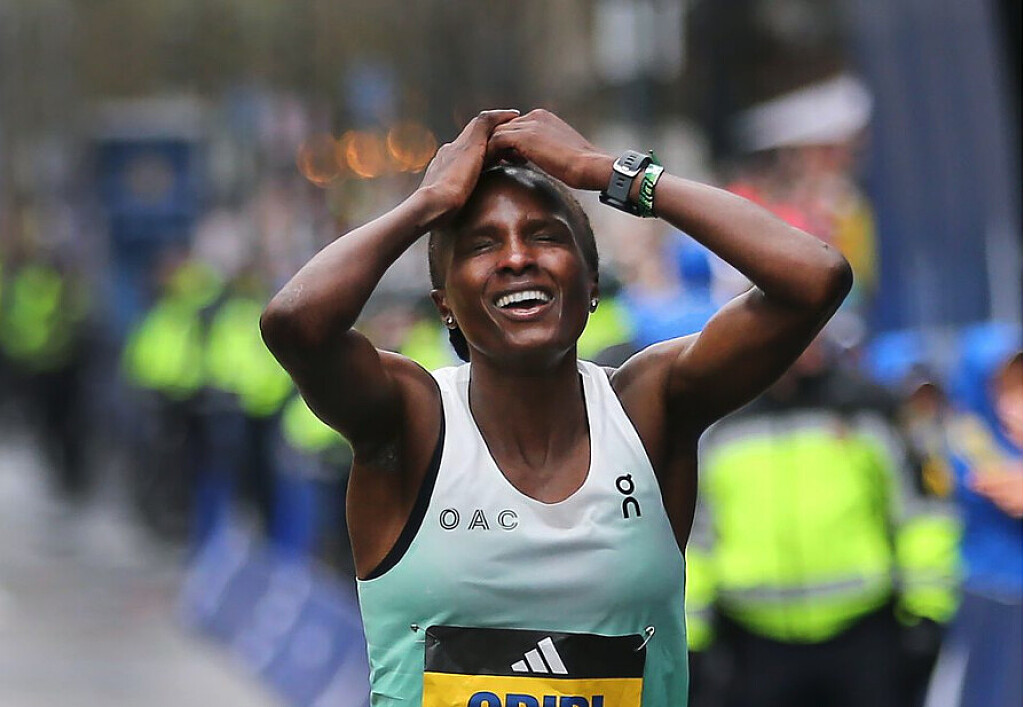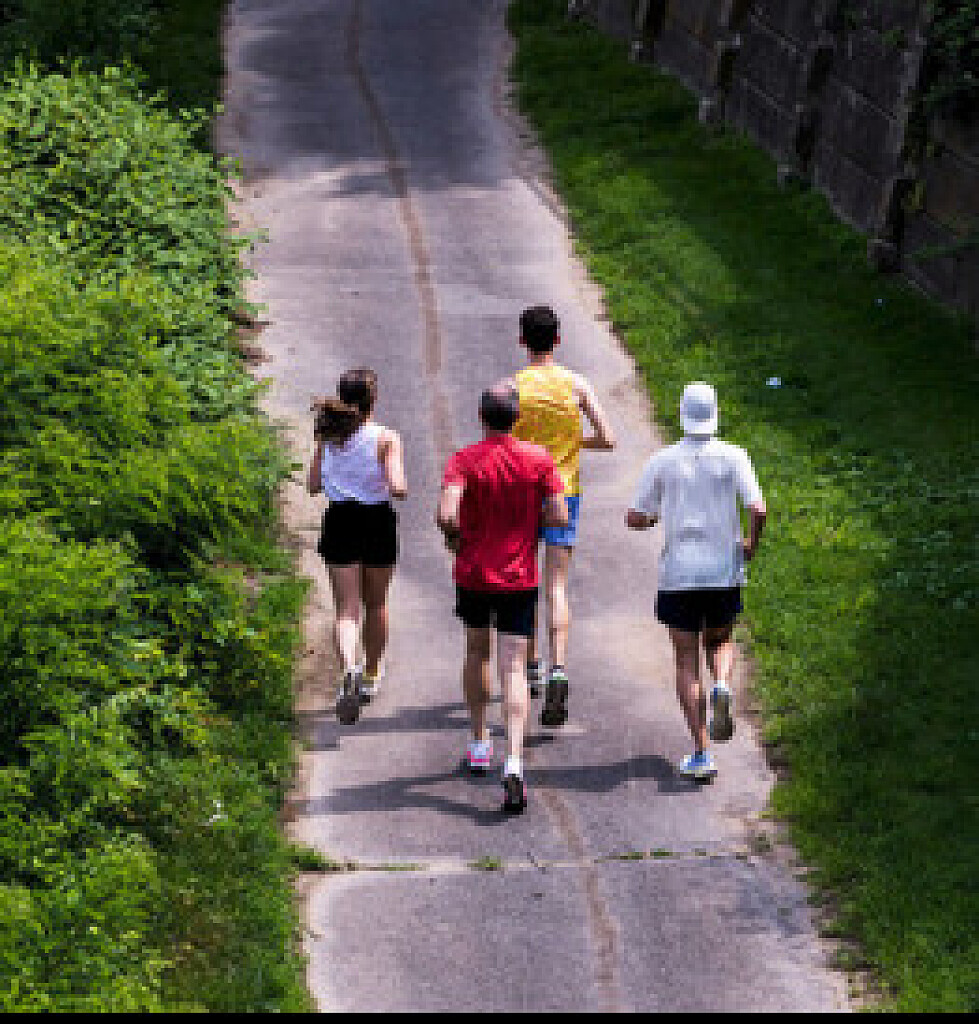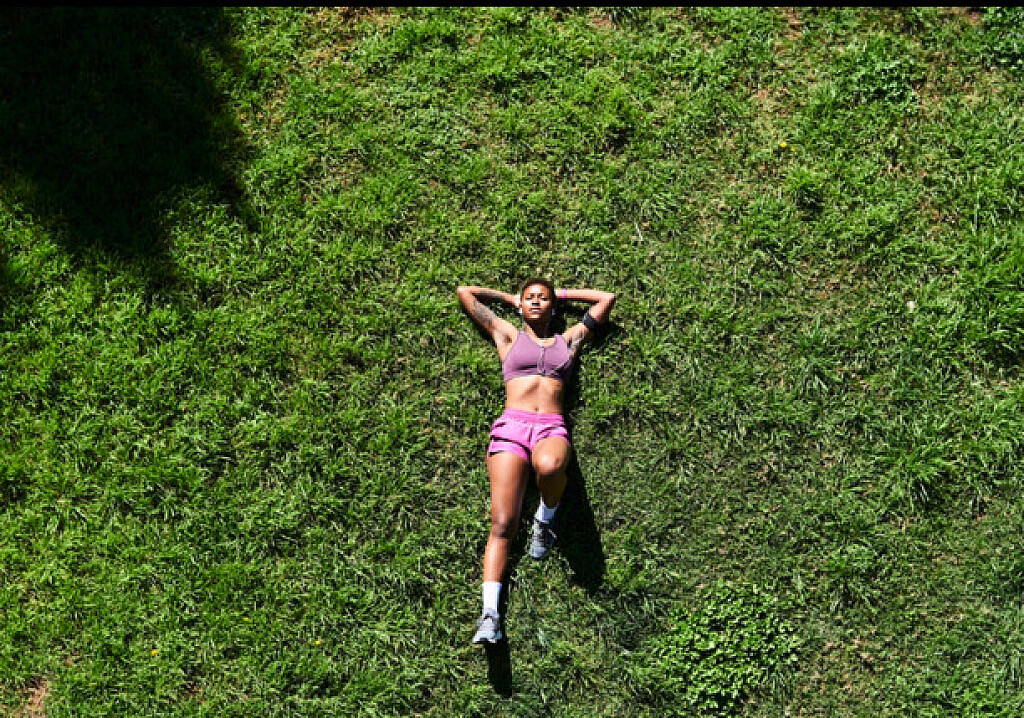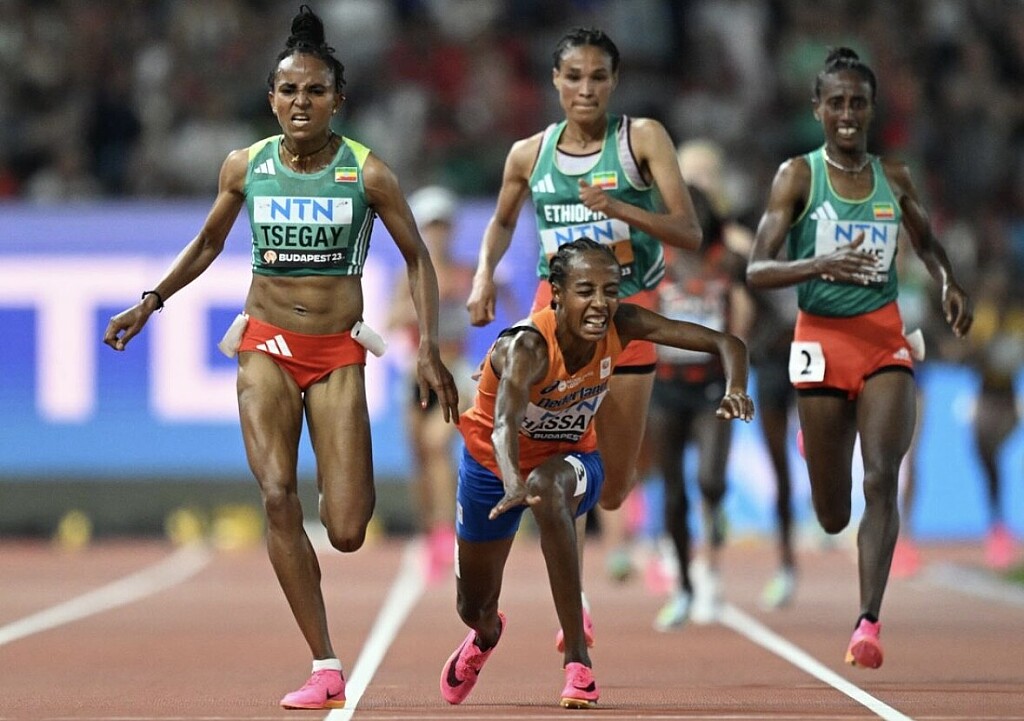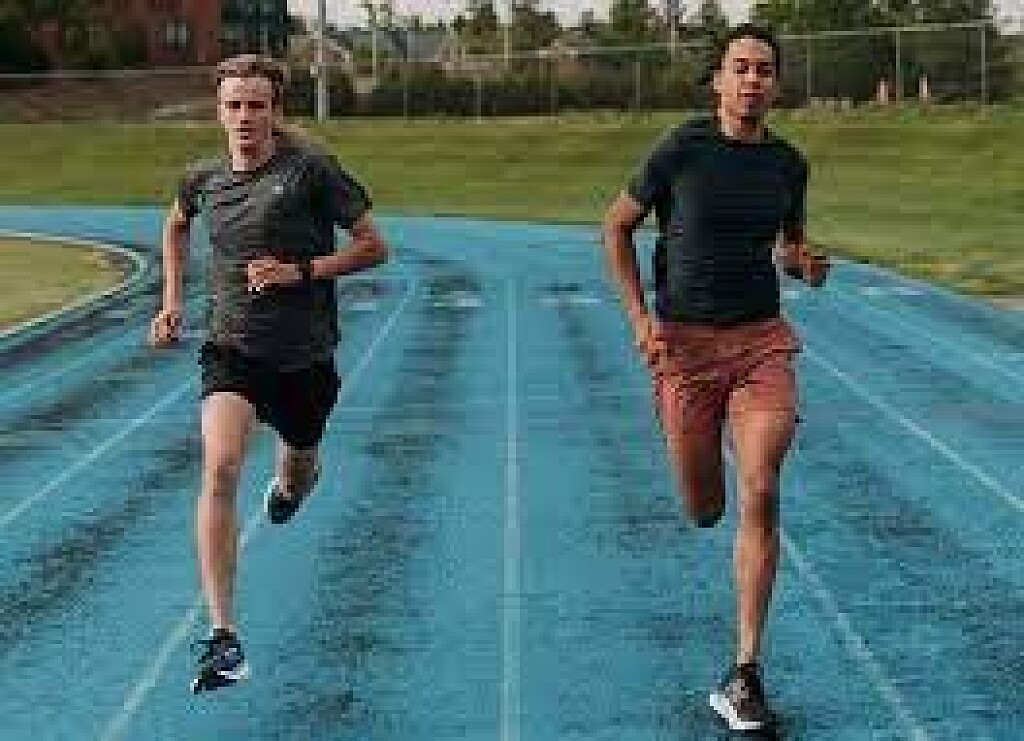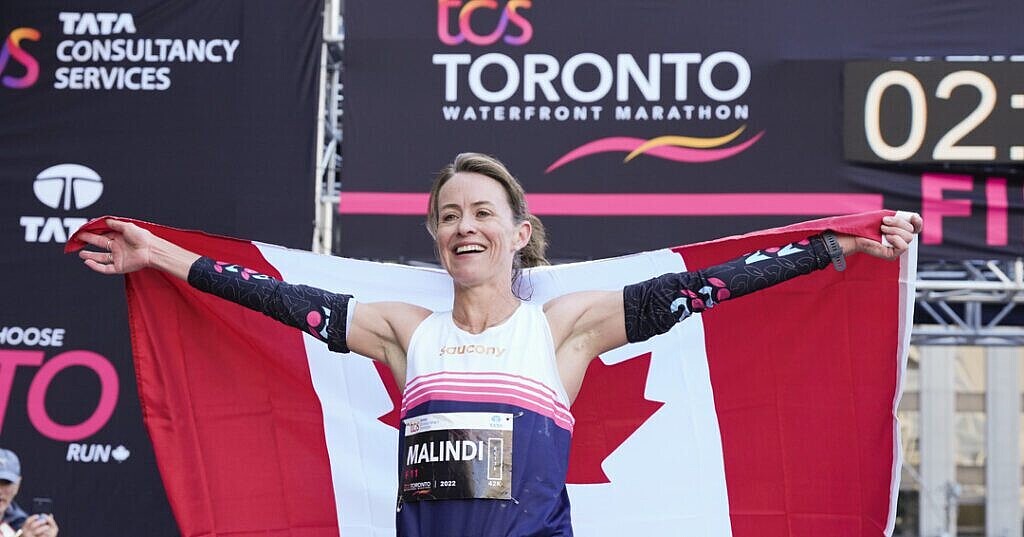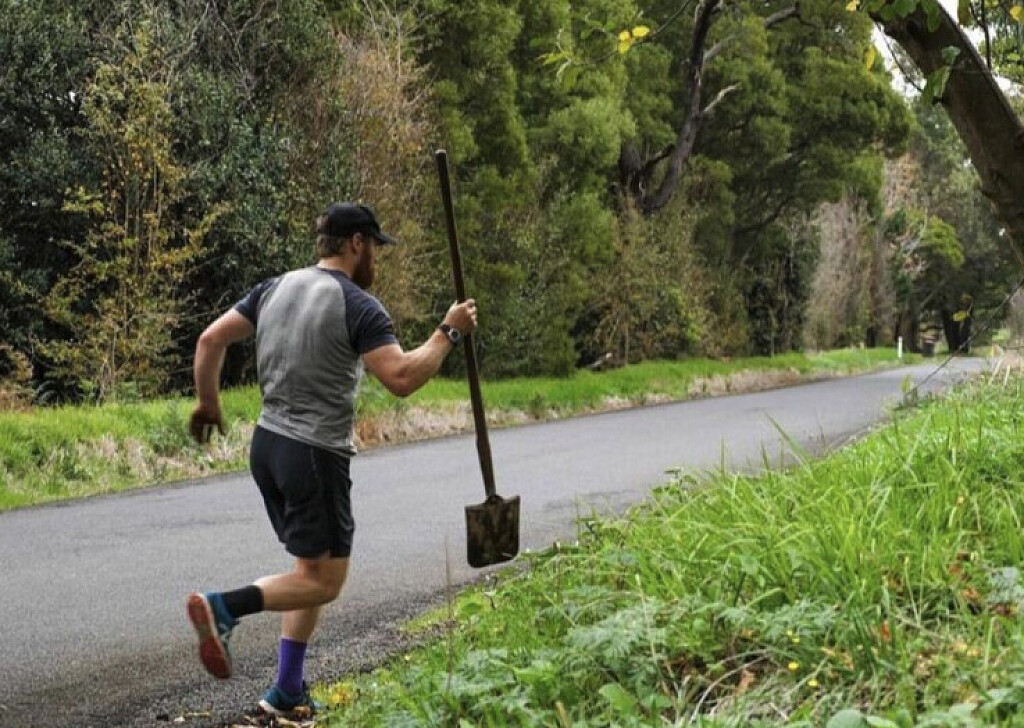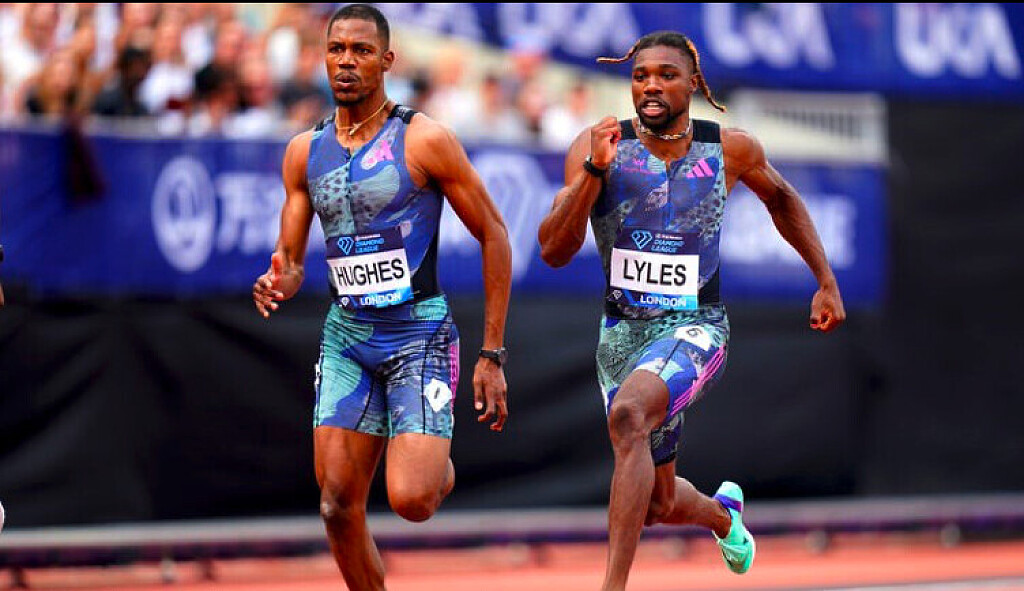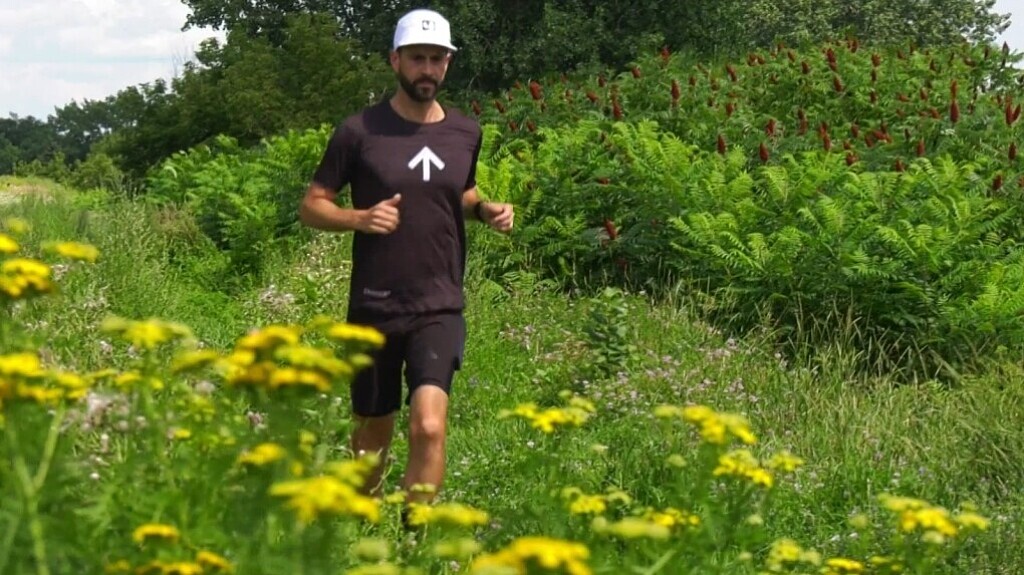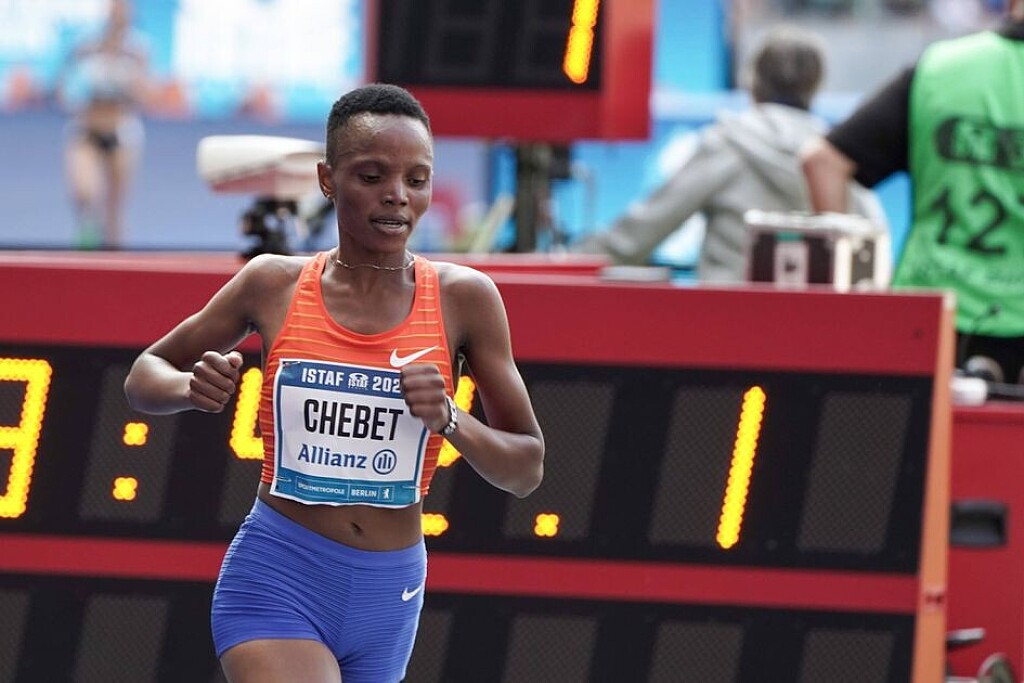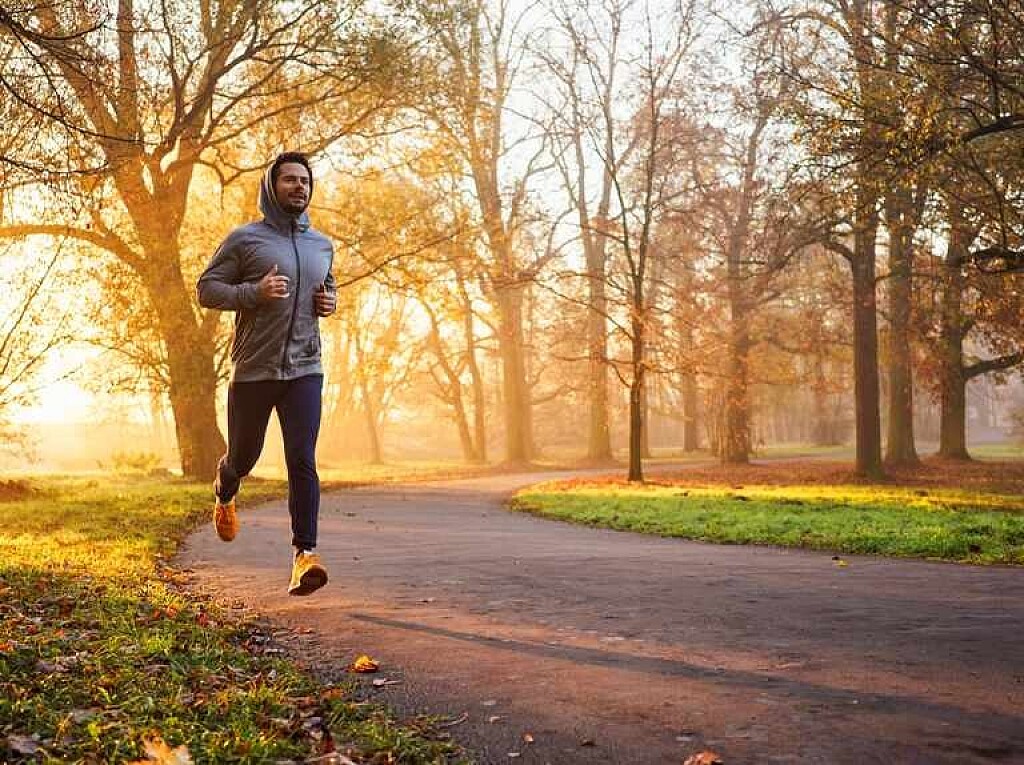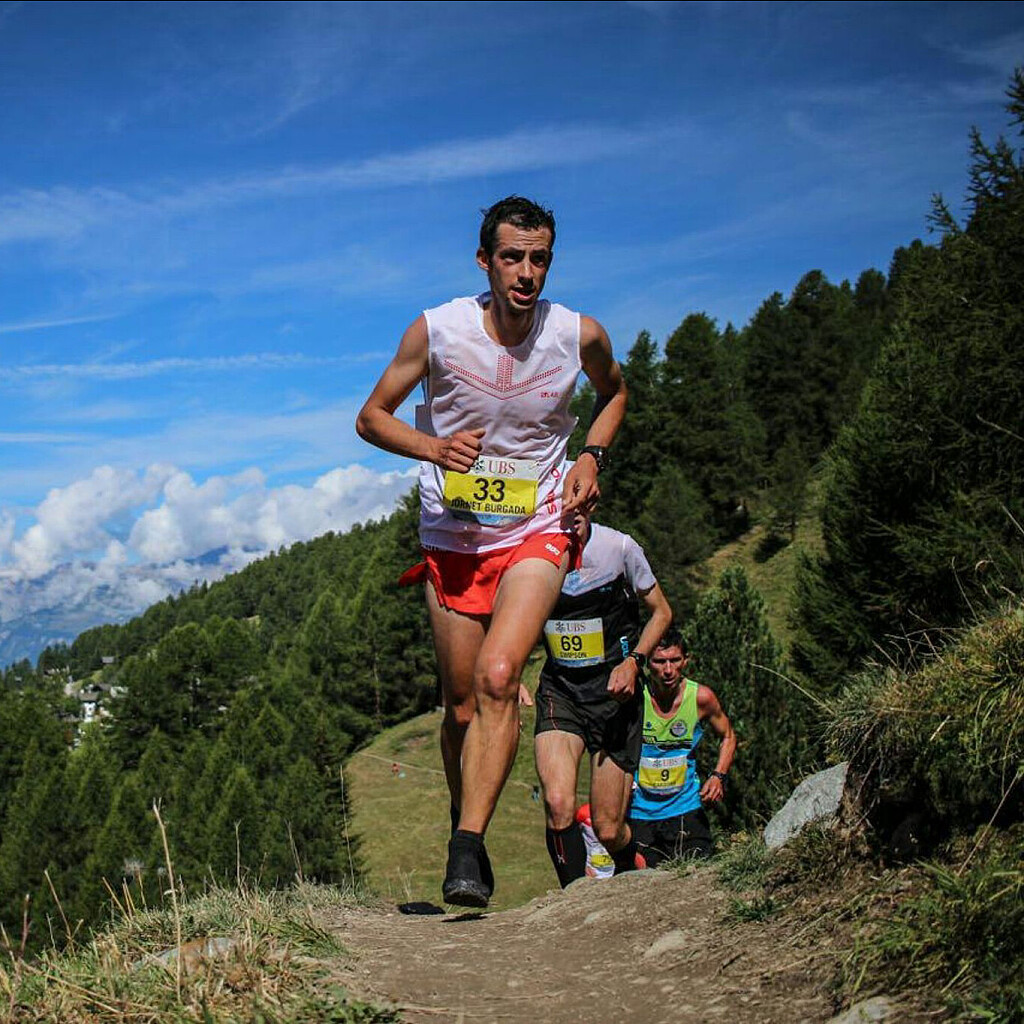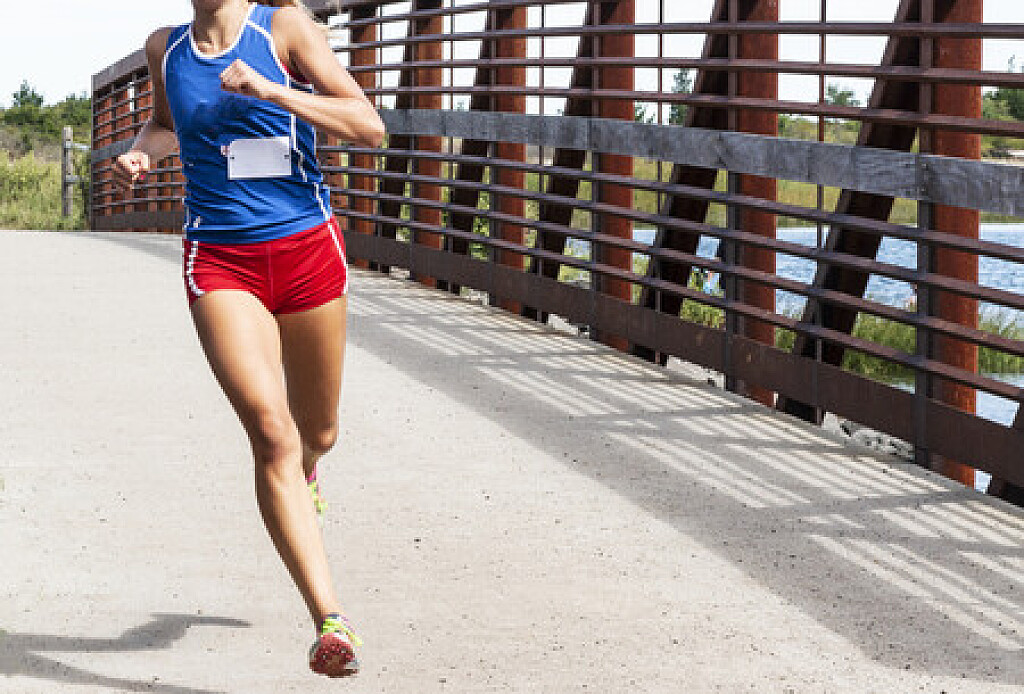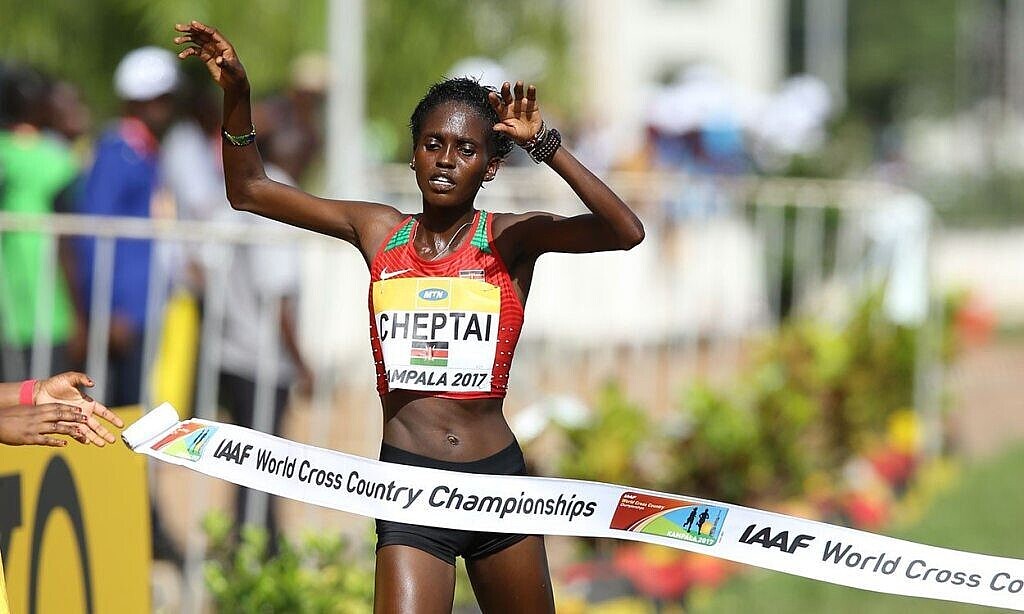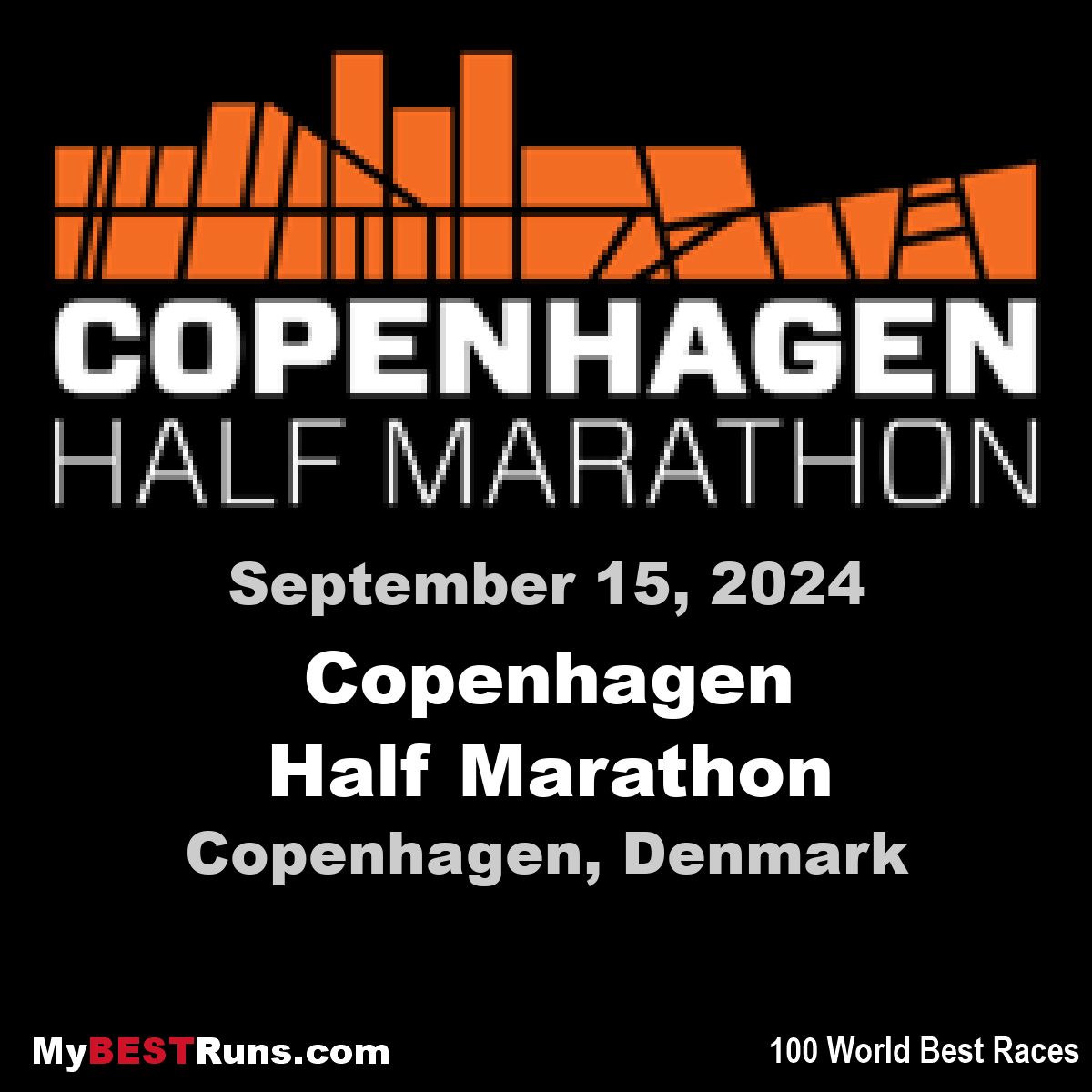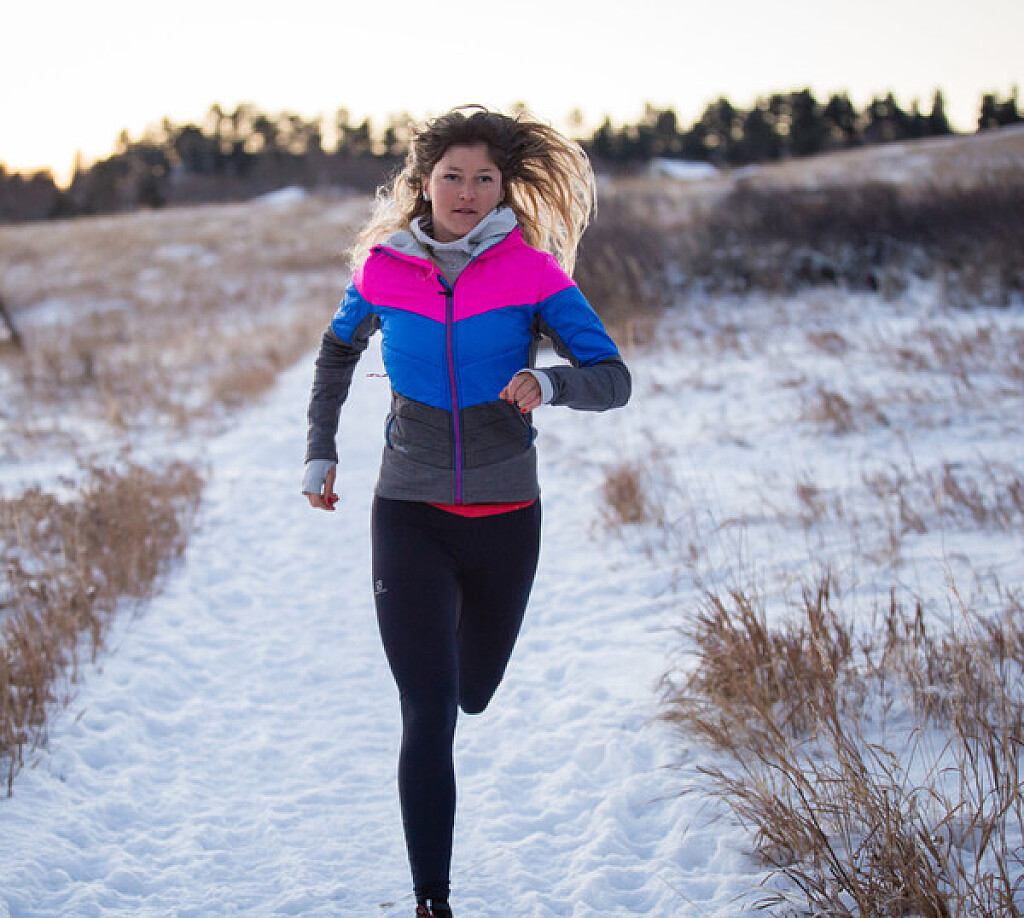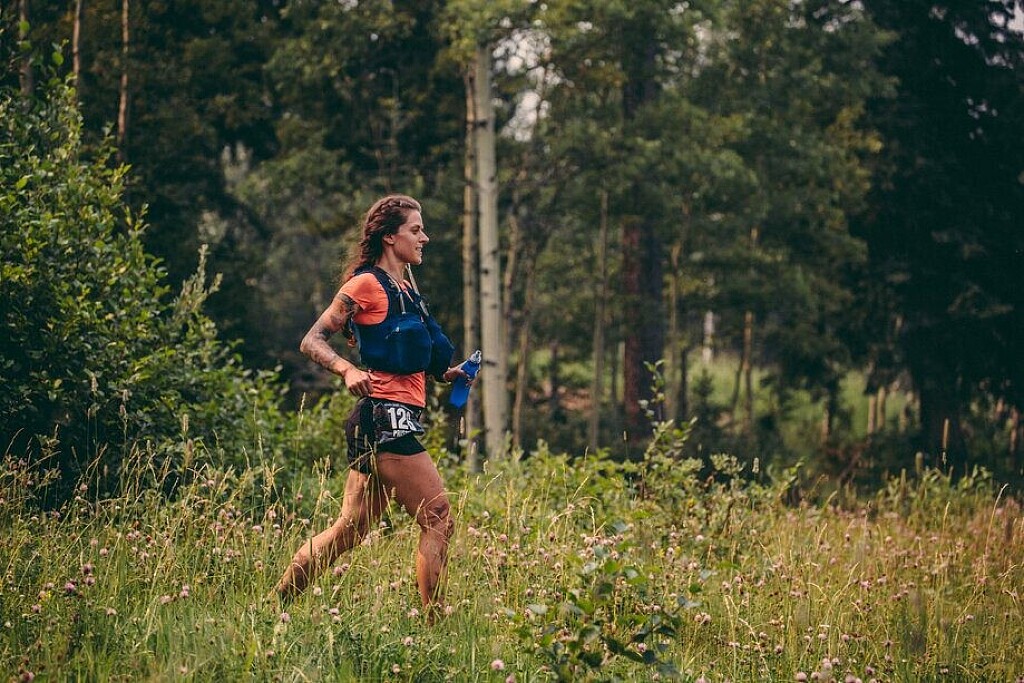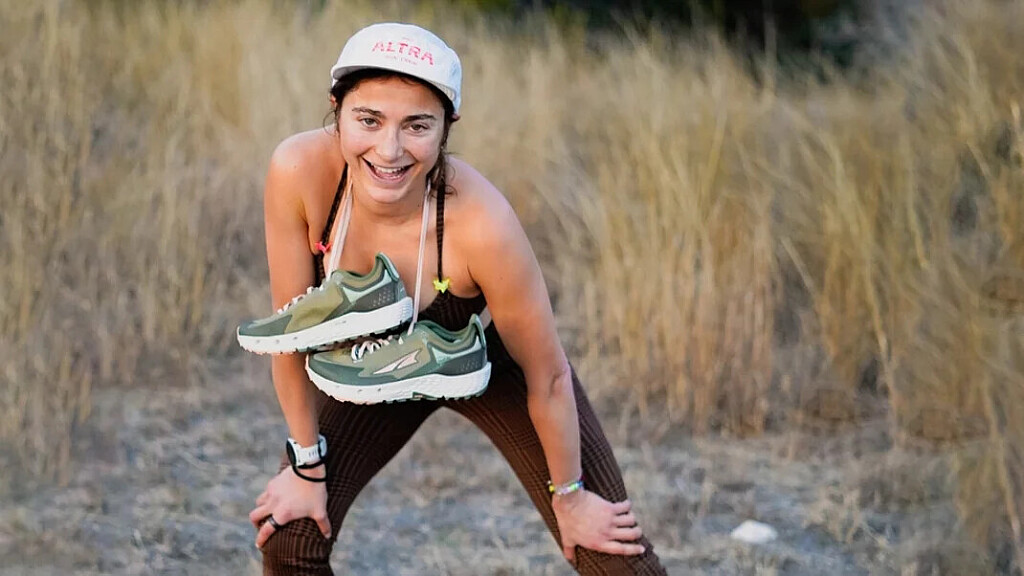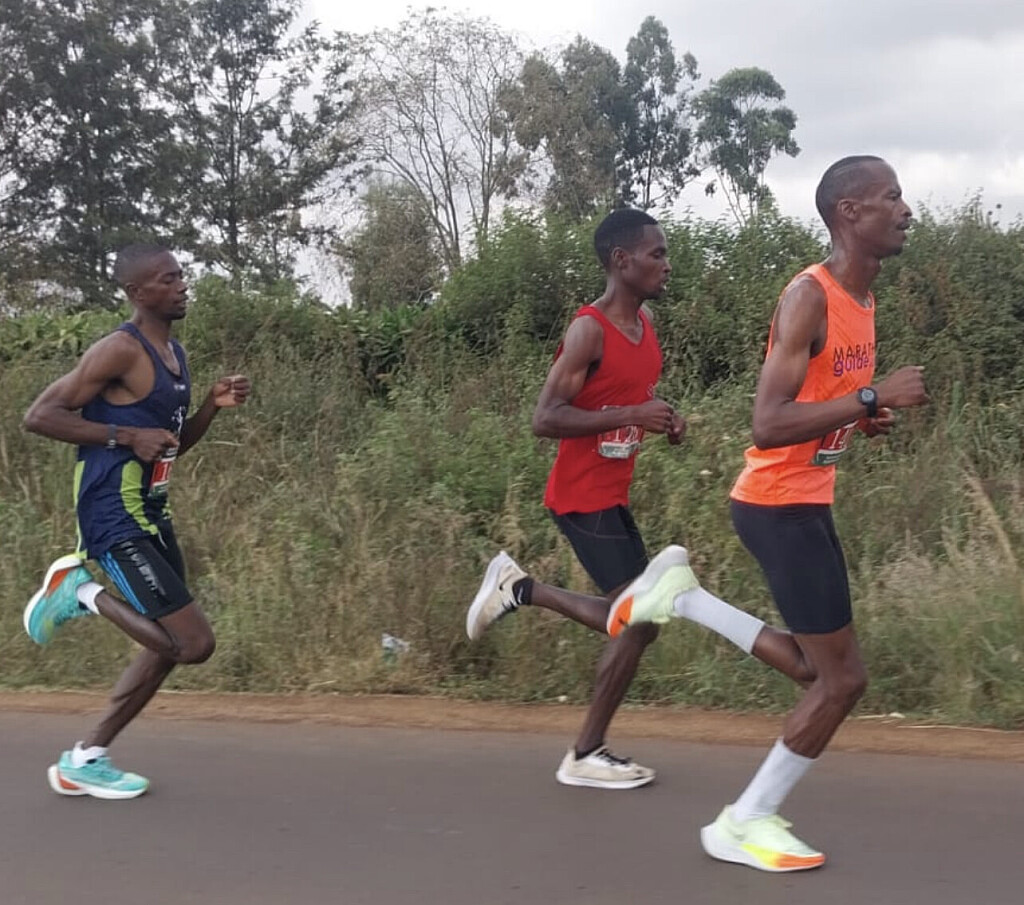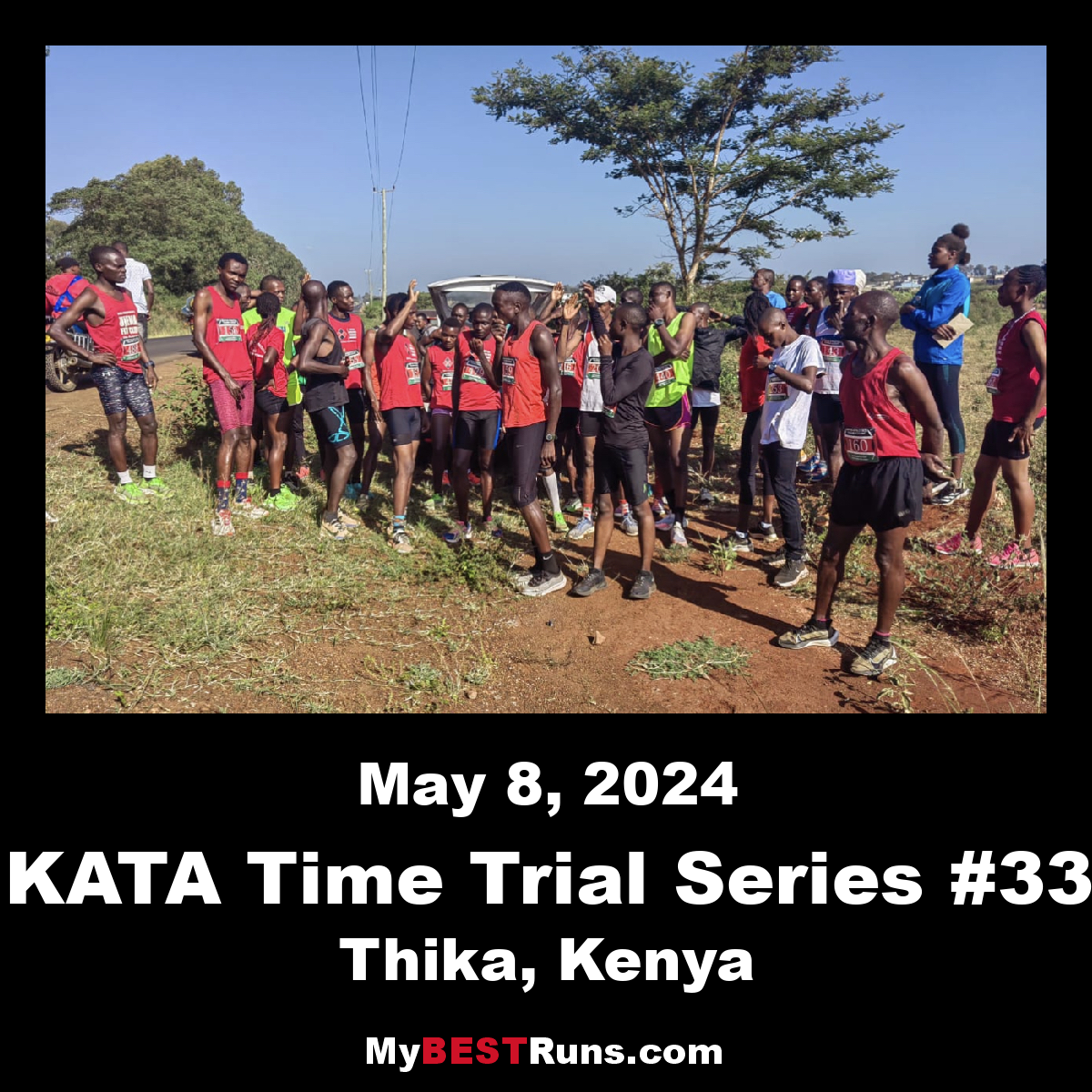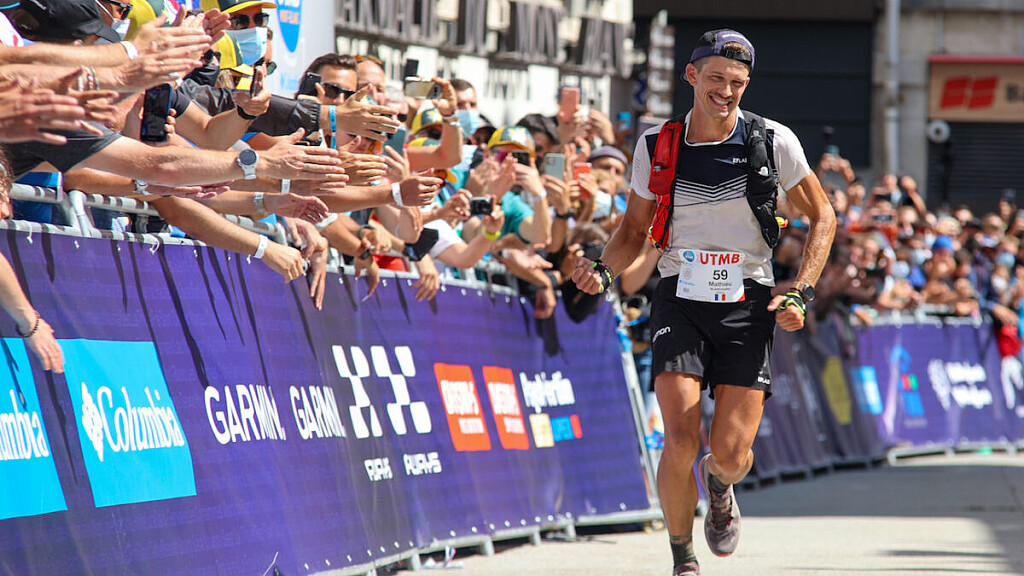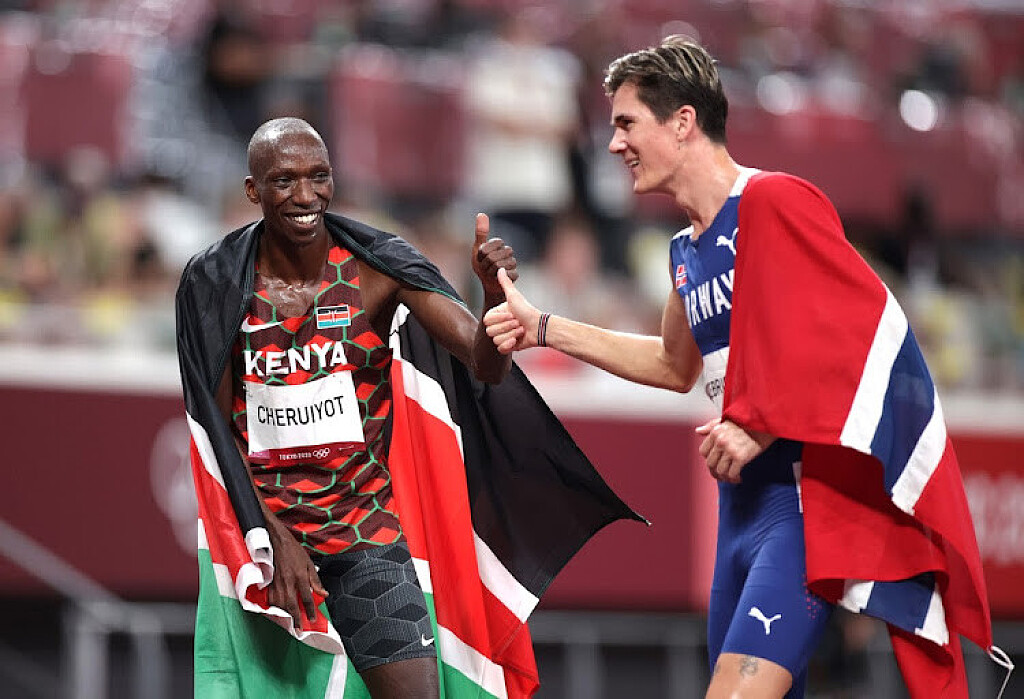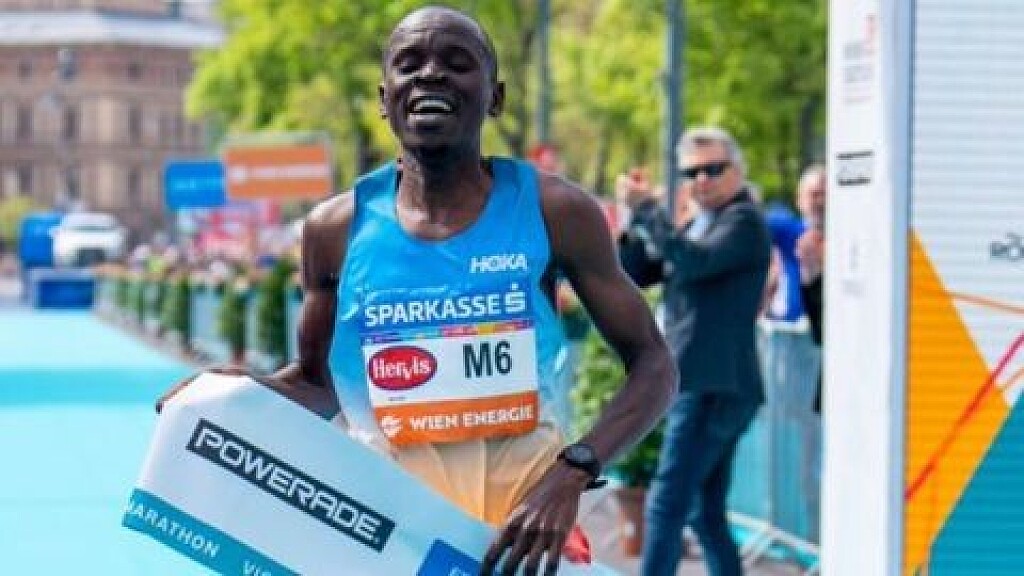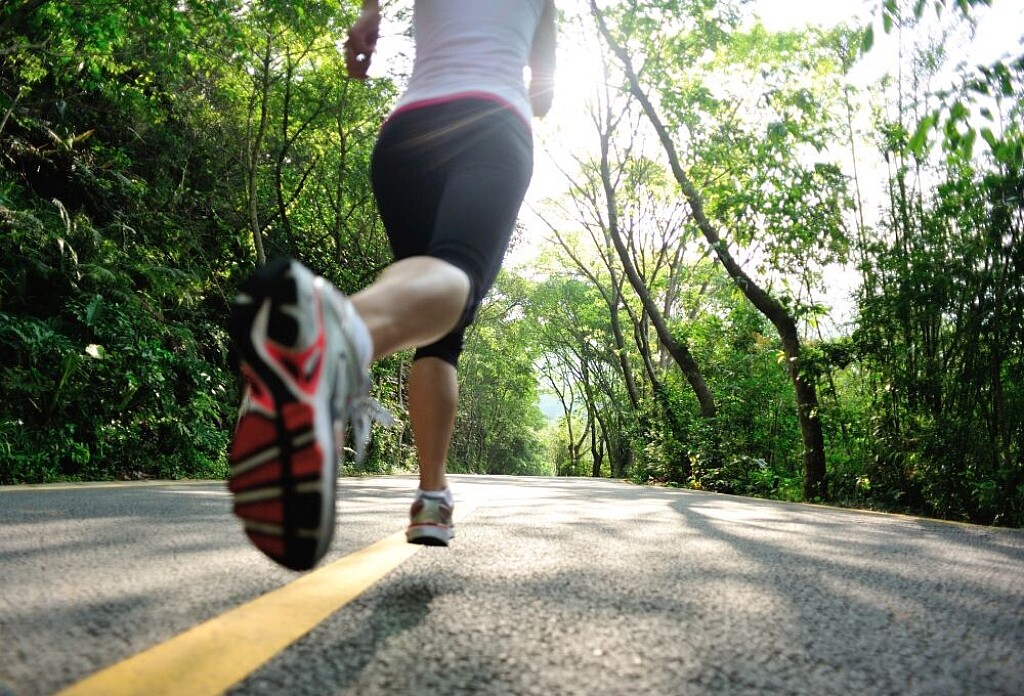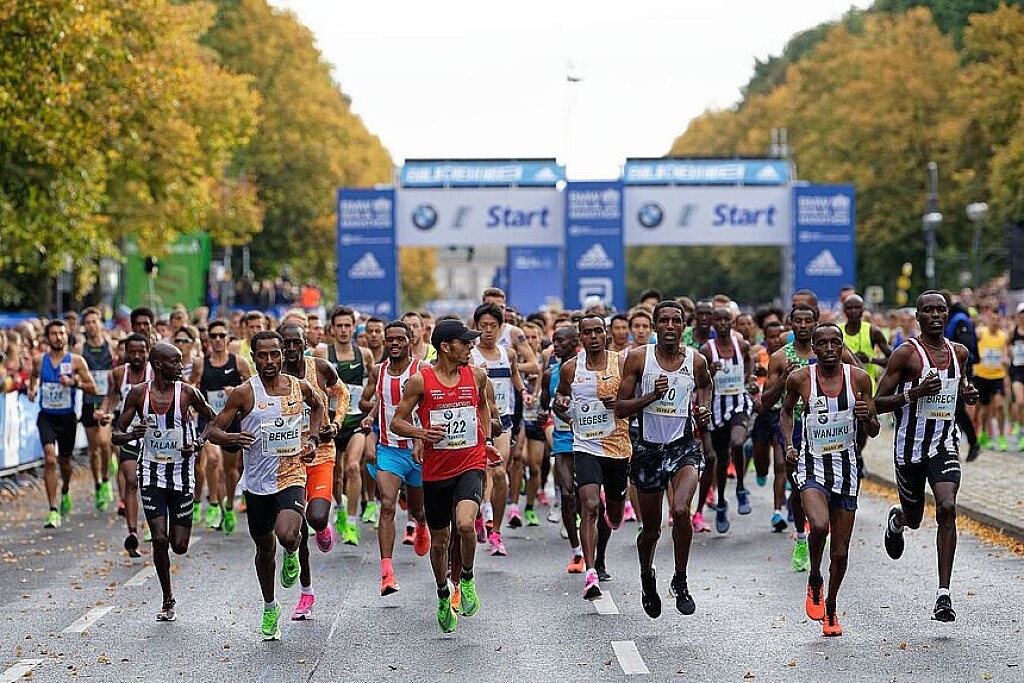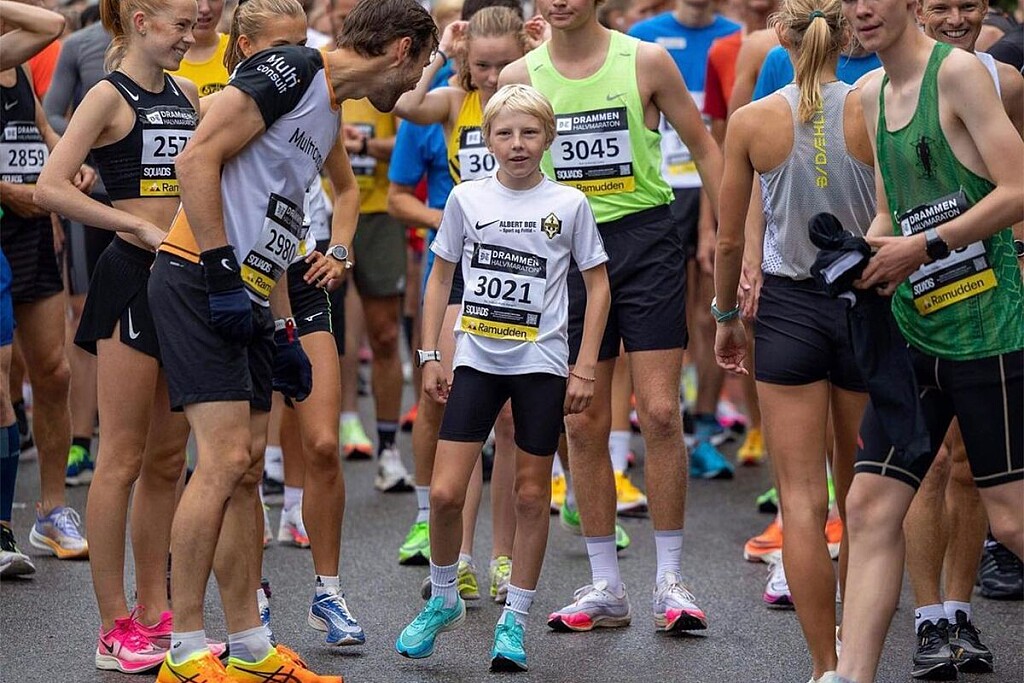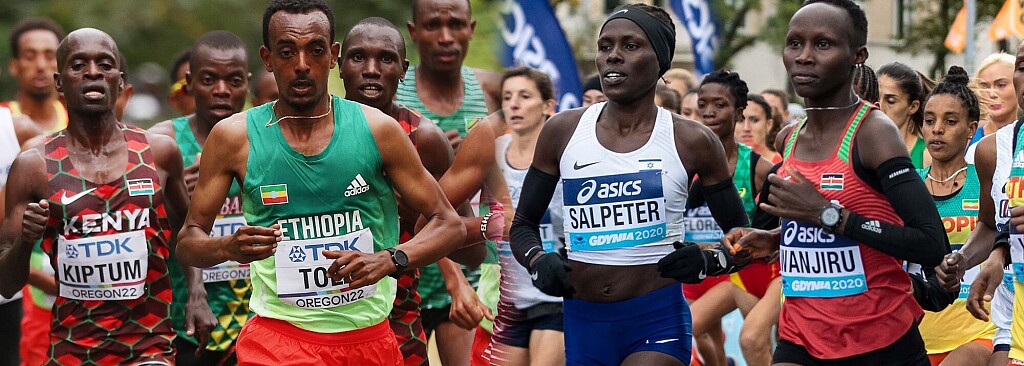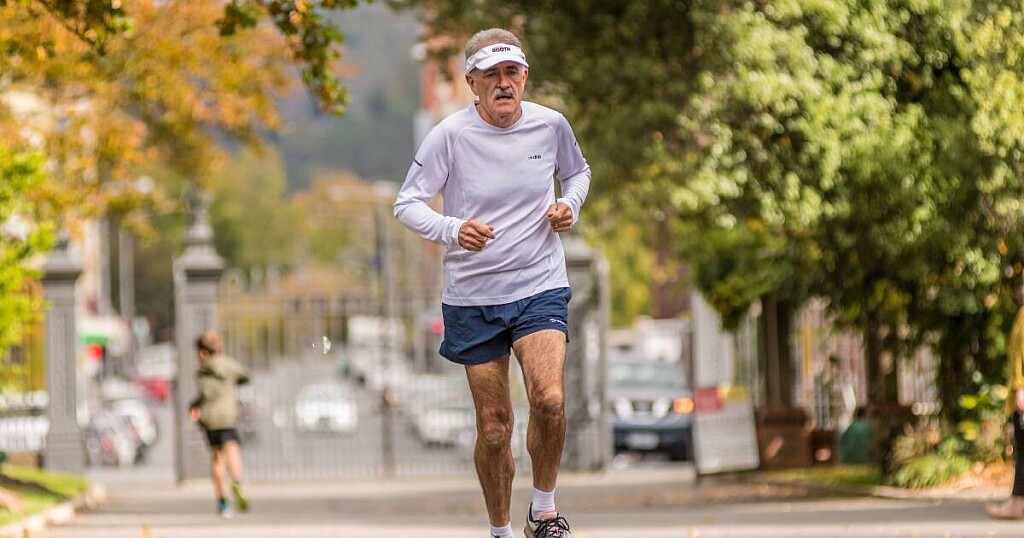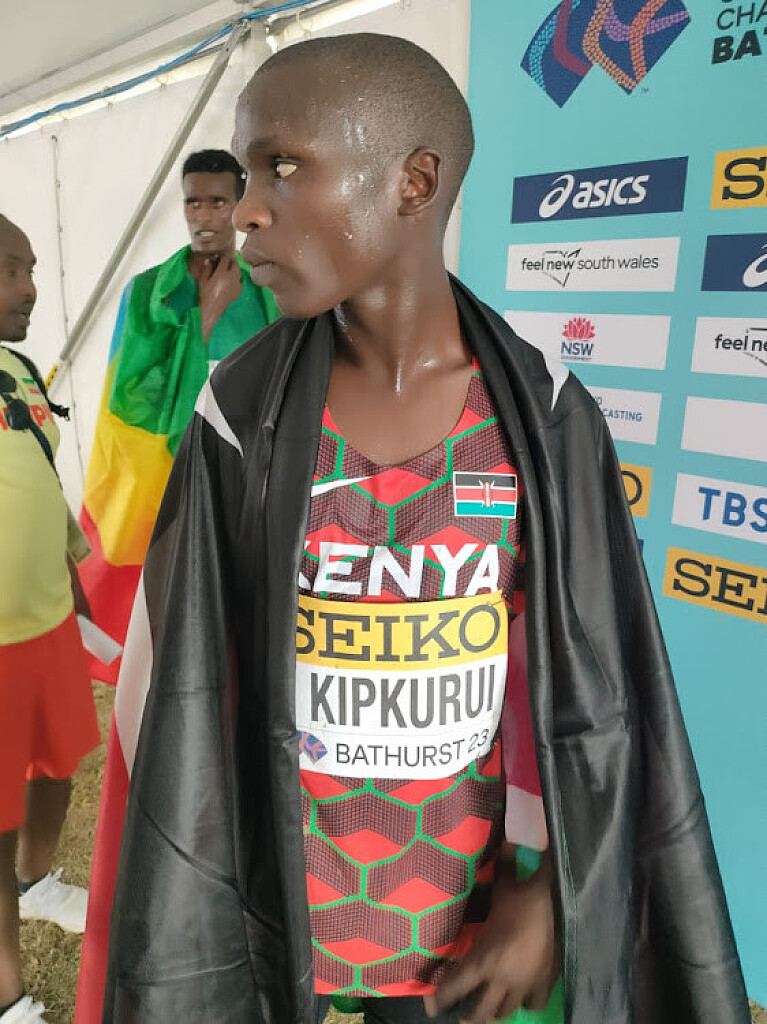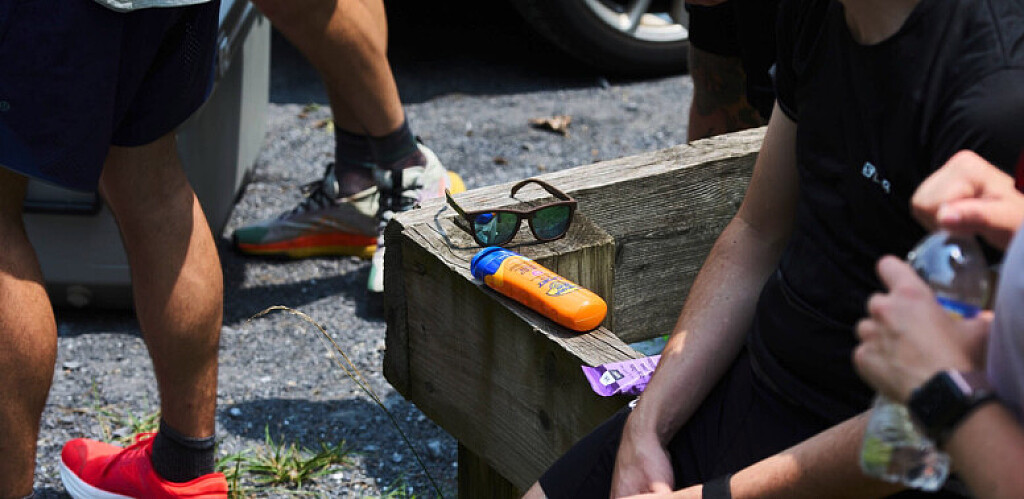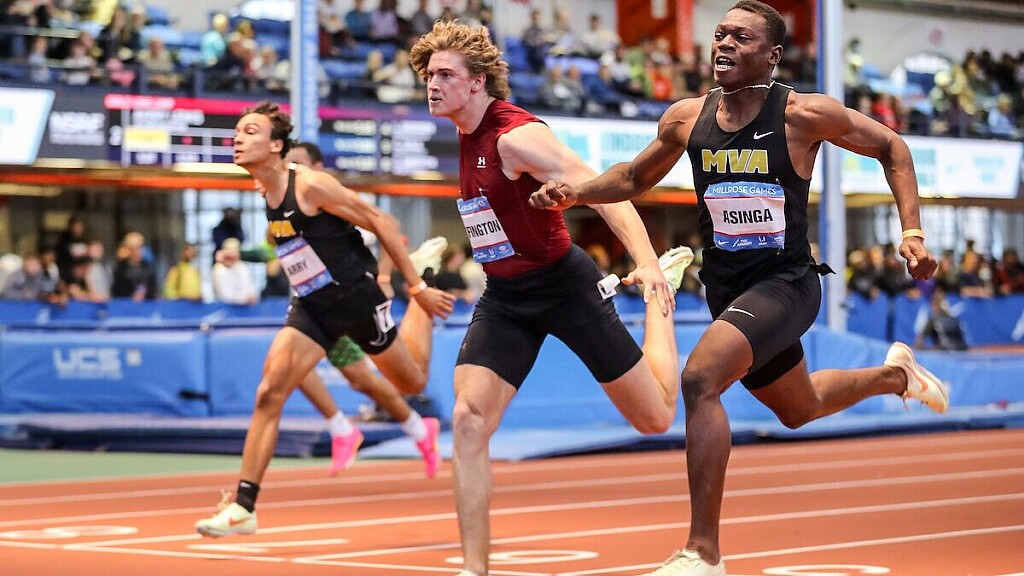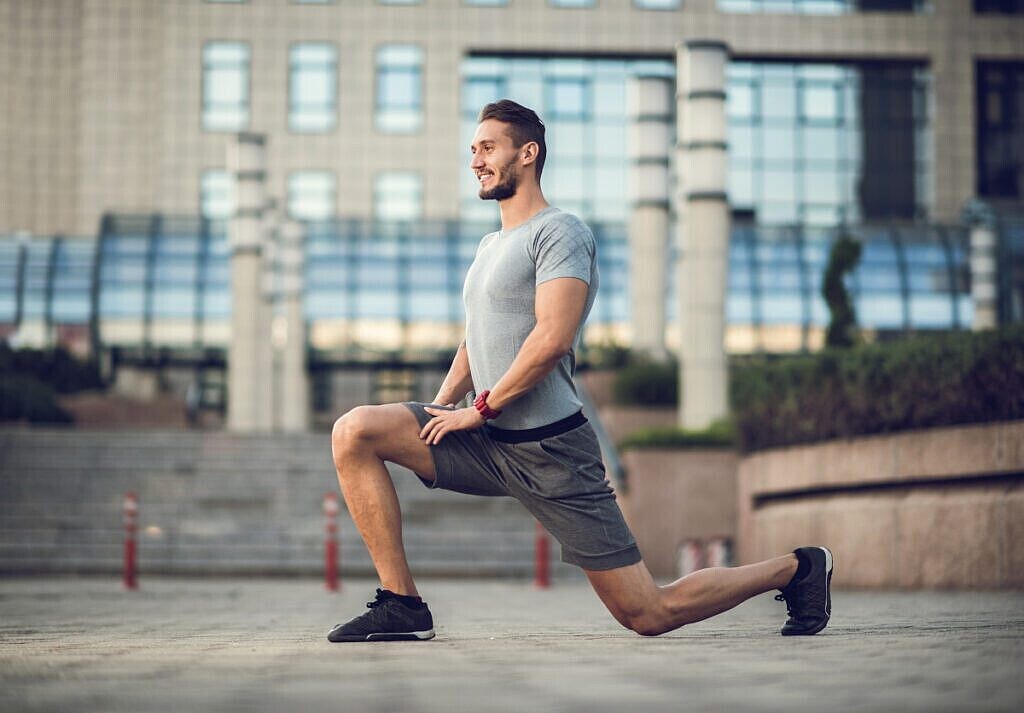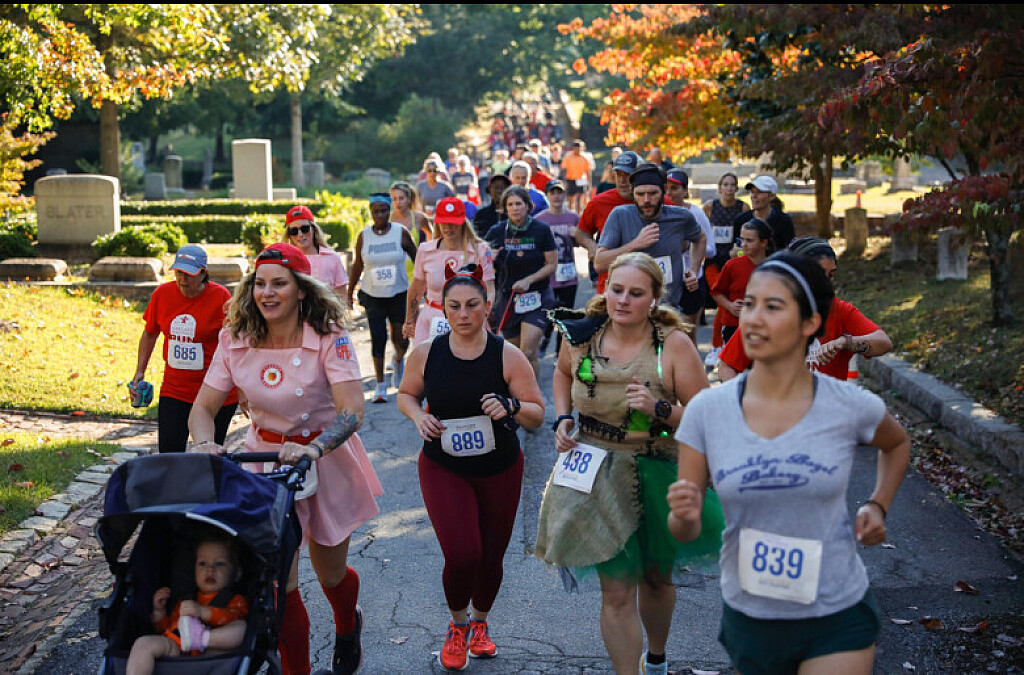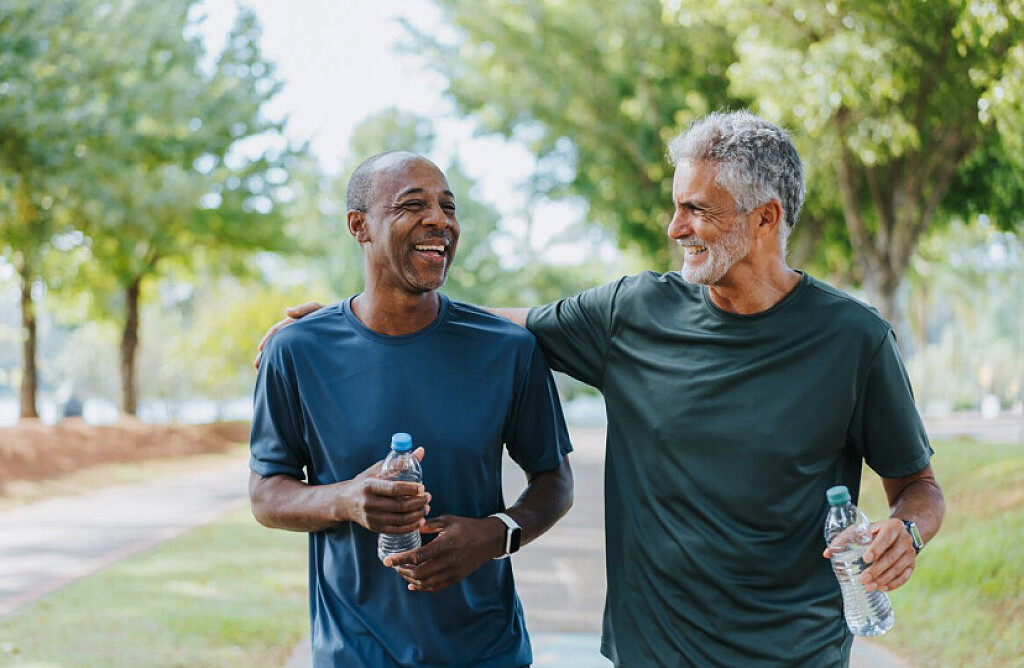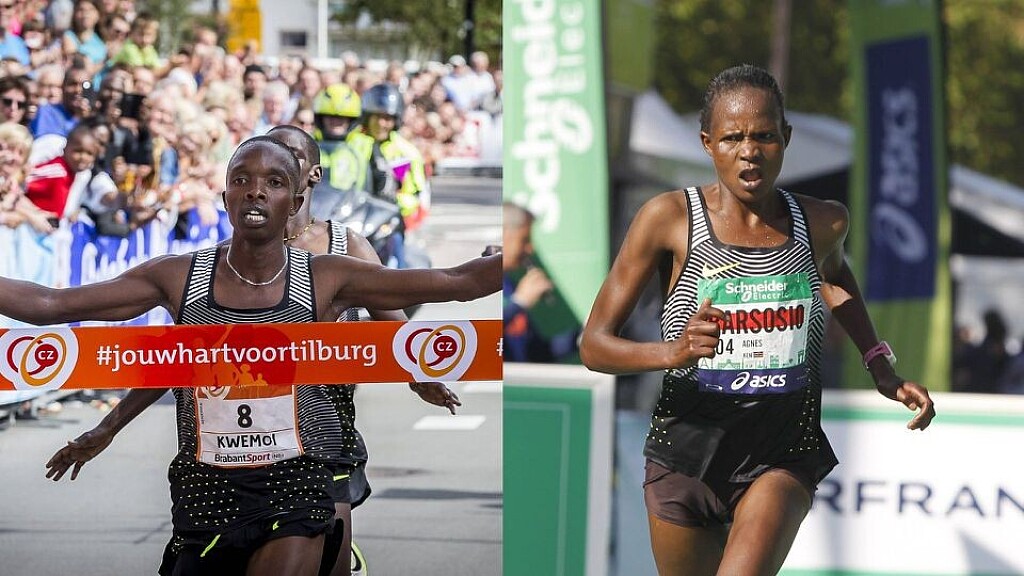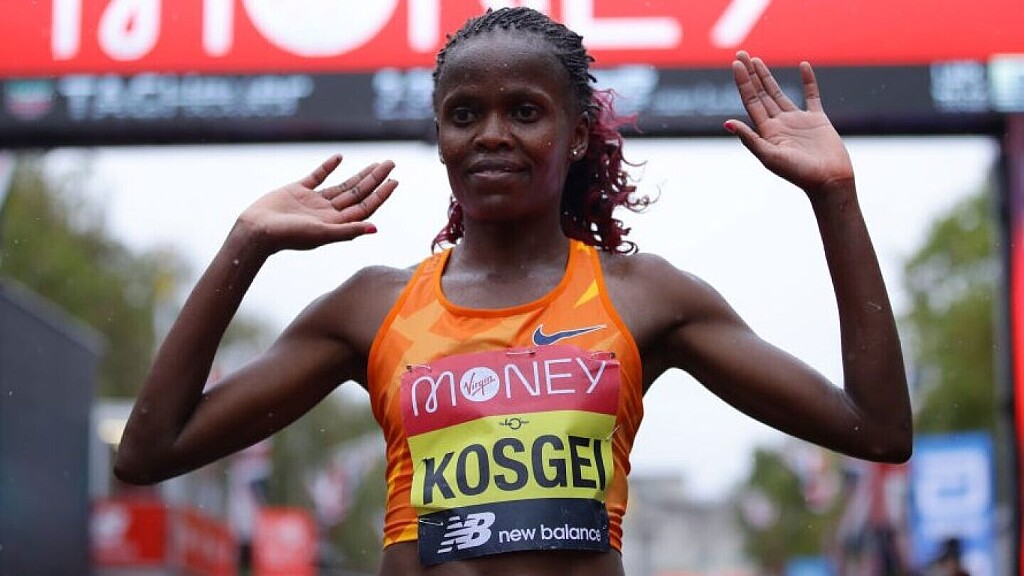Running News Daily
Running News Daily is edited by Bob Anderson. Send your news items to bob@mybestruns.com Advertising opportunities available. Train the Kenyan Way at KATA Kenya and Portugal owned and operated by Bob Anderson. Be sure to catch our movie A Long Run the movie KATA Running Camps and KATA Potato Farms - 31 now open in Kenya! https://kata.ke/
Index to Daily Posts · Sign Up For Updates · Run The World Feed
Ten tips for running during your summer vacation
With many Peope getting in a last week or two of vacation before the kids head back to school and we return to our normal routines, late August is also a time when training regimes are in full swing for fall goal races. Embarking on a summer vacation doesn’t mean your training has to take a backseat. With a bit of planning and adaptation, you can maintain your fitness and enjoy your trip to the fullest.
Pack smart
Don’t forget to pack your running gear, including shoes, moisture-wicking clothing and accessories like a hat and sunglasses. Choose lightweight and breathable fabrics to stay comfortable in the heat. Make sure to check the weather at your destination, so you are prepared for whatever Mother Nature has in store.

Make use of laundry facilities
If you’re staying at an Airbnb or hotel with laundry facilities, make use of them. This will allow you to pack fewer running outfits, so you don’t need to bring an entire extra suitcase for all of your running gear.

Plan your routes
Research your destination beforehand and identify safe and scenic running routes. Beaches, parks, and waterfronts often offer picturesque paths. Apps like Google Maps or Strava can help you map out routes with distance and elevation information.
Adjust your schedule
Opt for early-morning or late-evening runs to avoid the hottest parts of the day, and to ensure your workouts don’t get in the way of whatever other activities you’ve planned. Running during sunrise or sunset can also provide a beautiful backdrop for your workout.
Variation is key
Embrace the vacation spirit and mix up your routine. Run on the beach, explore new trails or try some hill sprints. Varying your terrain and intensity can make your runs more enjoyable.
Cross-train
Use your vacation as an opportunity to try new activities. Swimming, biking, or even walking tours can be great ways to stay active without overloading your running routine.
Forgo any big workouts
Save any key workouts or fitness tests for when you’re back home. Instead, opt for fun, relatively short workouts that keep you feeling fresh without completely wiping you out. After all, you want to still have some energy left over to enjoy your vacation, and trying to hit a really hard or long workout when you’re out of your regular routine often doesn’t end well.
Look for local running groups
Check whether there are any local running groups or events at your vacation spot. Running with others can be a fun way to explore the area and make new friends.
Don’t forget nutrition
Balance indulgence with healthy choices. Enjoy local cuisine, but avoid planning a run after trying the spicy shrimp dish from the local food truck. Remember to drink plenty of water as well, so you’re well hydrated when you head out for your run.
Take some time for rest and relaxation
Remember that vacations are also about recharging. If your body needs a break, don’t hesitate to take a day off running and focus on recovery.
(08/21/2023) ⚡AMPHellen Obiri dominates Falmouth Road Race; Wesley Kiptoo equals 19-year-old men’s course record
Hellen Obiri is making a habit of winning in Massachusetts this year.
After kicking away from the field to win April’s Boston Marathon and dominated the BAA 10K in June, Obiri made it a triple crown with a win at Sunday’s Falmouth Road Race. After leading the pack through the 5K mark, the two-time Olympic silver medalist built up a 25-second lead through 10K and cruised to the win on the 7-mile course in 35 minutes 13 seconds.


“The uphill was terrible for me,” Obiri said. “But I knew after that it was downhill and it was an incredible finish.”Emily Sisson, the American record holder in the marathon, was the runner-up, 19 seconds behind Obiri.
In the men’s race, Kenya’s Wesley Kiptoo made his move much earlier, setting a strong pace from the gun. Kiptoo was already 12 seconds clear of the field at 5K and 20 seconds up the road at 10K, breaking the tape in 31:08, which matched the course record set by Gilbert Okari in 2004.John Korir and Edwin Kurgat made it a Kenyan sweep on the podium. Former BYU star Clayton Young was the top American, finishing fifth.
Daniel Romanchuk, of Maryland, captured his fifth Falmouth victory in the men’s wheelchair division, taking 25 seconds off his own course record to finish in 21:13.
Susannah Scaroni broke her own women’s wheelchair course record, going practically unchallenged to finish in 24:38, 52 seconds faster than her record-setting time last year.
“I always like pushing things farther and farther,” she said. “I don’t think I have ever done a more beautiful course.”
(08/20/2023) ⚡AMP
This Mom Has Maintained a 9.5-Year Run Streak
“I believe running keeps you healthy and strong, but it also shows you how much your body can do, and how hard it can work. ”
In 1995, when I started dating my husband, I began running with him. He was on the cross-country and track teams at Virginia Tech. He taught me about shoes, distance, and pacing, and we still have running dates when we want to talk and catch up. I simply loved the progress and the results I could get with running, and how I could challenge myself in different ways. More importantly, I liked how strong and accomplished I felt after running. There is no sweat like a sweat from a good run—it feels cleansing.

In the beginning, I didn’t think of myself as a “runner,” but more as someone who ran as a form of exercise. I remember being so scared lining up for my first 5K in 1995 in Charlottesville, Virginia. After that race, I gradually added more distance and signed up for my first full marathon, The Marine Corps Marathon in 1999. I am now in the Marine Corps Runners Club, which you can enter if you run the marathon at least five times.
Some of my most memorable runs have not been races, though. On one of my first dates with my husband (while in college) we went on a run and I ended up running for one whole hour–which, at the time, was my longest run. I felt so proud of that milestone.
Today, some of my favorite runs are my Saturday morning long runs with my neighborhood mom friends, and anytime my sister and I get to run together is the best, because we live in different places.
My love for running has led me to a nine-and-a-half-year run streak, which means I run at least two miles continuously every day.
I started my run streak on Sunday May 4, 2014. I went out for a run and felt really good, so the next day I ran again. I knew I wanted to make a commitment to my health and my family, to take that time for myself, and to just do something challenging. I decided to run every day for the rest of the summer. When I did that, I told myself I would run until the end of the year. Then, of course, once that passed I kept going to make it a full year.
After one year, I decided to see how far this journey could take me. I fully invested in it, and I realized the more I gave running, the more it gave me. Now I can’t imagine life without my run streak.
Since I started running, I have completed several marathons, half marathons, and a few ultramarathons. I like competing and pushing hard in some races, but I also like running a race for the enjoyment of the sport, and to run hard enough so I am still having fun but am also able to be a mom after the race.
Having races on the calendar is a great way to keep myself accountable each day. I love the process and training—the long runs, the hot runs, running alone, running with friends, running in the rain, and the runs when you don’t have the motivation to run. The races for me are the icing on the cake and the celebration that I get to move my body and be around other people who like to do the same.
For me, running is non-negotiable—it’s like brushing my teeth. Luckily it helps to have such a supportive family who knows this and who understands that running makes me better at all my roles in life. I have more energy, patience, and more to give if I run.
Staying healthy and injury-free is important for my run streak. I do a lot of my runs at an easy pace, especially if I am focused on marathon training or running more distance. I also believe in cross training—having your body move in different planes and training different muscles is so important, since running is a forward-only motion. I love lifting weights, swimming, and taking classes at the gym. Since college, I have done the same 15- to 20-minute stretch routine everyday.
Eighty percent of my runs are at an easy to moderate pace. During a typical week, I like to include one long run, one mid-long run, and one tempo run or one speed session per week. If I can, I like to incorporate a STRIDE Fitness class (the boutique fitness center where I coach) because you can get a great running workout, with loud music, and a super supportive atmosphere. Today, I run 60 to 80 miles a week.
Running has gotten me through many highs and lows of my life, from meeting my husband to challenging myself in ways harder than I ever thought possible.
Lastly, I believe running keeps you healthy and strong, but it also shows you how much your body can do, and how hard it can work. I also appreciate the routine and consistency of running—it provides me a daily reset and almost like an internal shift to help me be a better person. I am so thankful for every run!
These three tips have helped make my running journey a success:
1. Start small and be consistent
It does not take much to start running. The hard part is the consistency and determination to keep going back. You don’t have to complete a run streak, but you do need to be consistent. Start small but challenge yourself. Aim to go out for 10 to 12 minutes a day for five days in a row. You could run all of it or do a walk/run. Gradually add time. It’s easy to say I will go run tomorrow, but do it today. A little tough love is required but it’s so worth it!
2. Find comfort in being uncomfortable
Our modernized lives are based around being comfortable at all times. Being uncomfortable is not pleasant, but I think it’s essential for running and life success. When you are tired in a long run or hurting in that interval, settle in, smile, breathe, and relax. Find your groove and your comfort there. Your body can handle it, but you need to train your mind and attitude because that part wants to quit. The more often you experience discomfort the better adapted you get to facing the hard things during a run or race or your life.
3. Ditch the technology and just run
Forget the Garmin or the GPS. Do some runs where you are going on effort only. Find the joy, take in the sights, have a long conversation, listen to a podcast. Don’t get caught up in your pace or your mile splits. Take a moment and remember why you are a runner, and why you love it so. This is especially true when running in Texas humidity!
Liz’s Must-Have Gear
→Balega Socks: Good socks are essential for running so I think it’s important to invest and spend a little more money on them! I love these because they are moisture-wicking and provide the best blend of cushion/compression
→Goodr Sunglasses: I love Goodr sunglasses! They are light and they don’t slip when you are sweating. They also offer cute styles for wearing at the pool or walking the dog. Also, they are a good price so you can get several pairs!
(08/20/2023) ⚡AMPby Runner’s World
The World Cup’s Fastest Woman Got Her Start on the Track
Salma Paralluelo of Spain ran a time of 57.36 in the 400-meter hurdles as a 16-year-old—but she gave it up to focus on the pitch.
Spain’s newest soccer star, Salma Paralluelo, whose dramatic 81st-minute goal off the bench against a defensively strong Swedish squad helped catapult the country into Sunday’s World Cup Final, may not just be the fastest player in the match, she may be the fastest woman in the entire tournament. In fact, the 19-year-old was an elite 400-meter hurdler on the track before focusing on her soccer career.
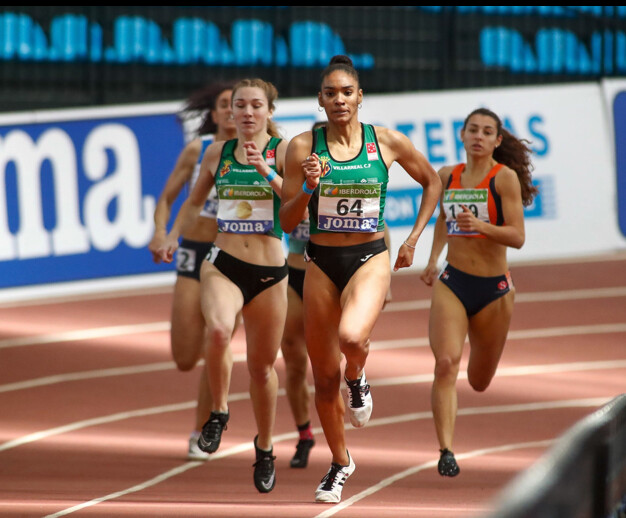
Paralluelo is a rare talent. At only 19, she is the youngest member of Spain’s national team. Despite her age, she has been in the spotlight since she was 6, after running in the Zaragoza Marathon. By age 8, she was already running one of the most famous races in Barcelona, the Jean Bouin, which she won for five straight years.
At 15, she was selected to represent Spain at the European Championships—the youngest there.
“Coaching Salma was a delight. When you watched her train, you saw lots of people stopping to watch her run. We saw beauty. She was like a gazelle. She’s extraordinarily gifted at running,” Felix Laguna, her former running coach told The Athletic.
“If she had chosen athletics and injuries had respected her, she would have ended up in an athletics final at the Olympic Games for sure,” Laguna continued. “And with a medal. I don’t know which of the three, but she would have finished on the podium.”
At 15, Paralluelo attained a personal best, according to World Athletics, of 53.83 in the 400-meters at the Spanish Indoor Championships and at 16, 57.36 in the 400-meter hurdles at the Campeonato de España de Federaciones Autonómicas.
While she was still pursuing both athletics and soccer, having signed with Spanish club Villareal, she suffered a painful ACL injury. After returning to action nine months later, Paralluelo chose to focus solely on her soccer career, and after finishing her stint with Villareal, signed with FC Barcelona at 18. She won the Champions League with the club that same year.
Paralluelo isn’t the only speedy former track star to play in the tournament, as the USWNT’s Alyssa Thompson has a PR of 11.69 in the 100-meters and was the top high school sprinter in the country last year.
Spain will face off against England in the final, and once again, Paralluelo may be called upon with her speed to produce a result. Update: Spain ended up winning on Sunday beating England 1 to 0.
(08/20/2023) ⚡AMPby Runner’s World
Get to Know the Fitness Metric That Indicates Your Ability to Recover from Tough Runs
What to know about this underrated fitness metric.
Most data-obsessed runners have a grasp on common heart rate metrics, like resting heart rate, max heart rate, and heart rate zones while exercising. But there’s another, often undervalued data point worth keeping tabs on: cardio recovery rate.
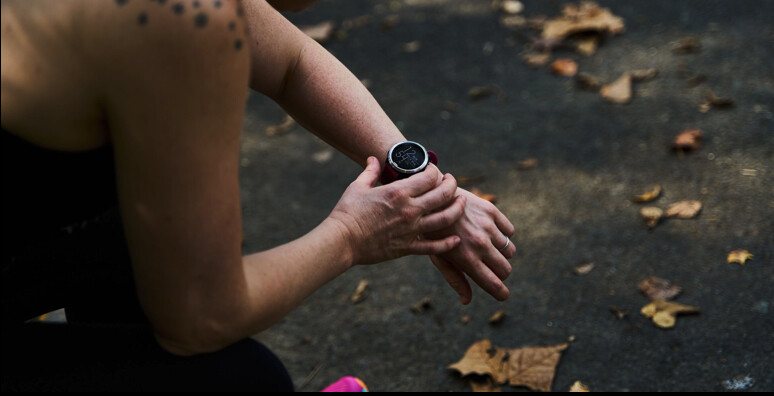
Also known as heart rate recovery, this metric is “an important measure that a lot of people don’t pay attention to,” Fabio Comana, faculty lecturer at San Diego State University and master instructor for the National Academy of Sports Medicine, tells Runner’s World. Not only can cardio recovery rate provide clues about your fitness, but it can also indicate the presence of heart disease.
Below, all you need to know about cardio recovery rate, including what it is, why it deserves a place in your data set, and tips for improving your current level.
What is cardio recovery rate?
Cardio recovery rate is the difference between your peak heart rate at the end of exercise, and your heart rate at a particular interval of time after you stop exercising—that interval of time is typically 30 seconds, one minute, or two minutes, Tamanna Singh, M.D., sports cardiologist and codirector of the Sports Cardiology Center at the Cleveland Clinic in Cleveland, Ohio, tells Runner’s World.
For reference, the Apple Watch measures cardio recovery rate at 1 minute post exercise, while some Garmin watches, like the Forerunner 935 and Forerunner 955, tally it at two minutes, according to the company websites.
Cardio recovery rate measures the ability to return to your baseline heart rate post exercise, says Singh. And that number signifies how quickly your body can switch from being under the influence of the sympathetic nervous system (“flight or fight” mode, which is activated when you exercise) to being under the influence of the parasympathetic nervous system (“rest and digest” state), says Comana.
The higher your heart rate recovery, the quicker your body is able to shift into rest mode and the better your cardiovascular fitness.
What is a good cardio recovery rate?
There’s not one agreed-upon standard for what qualifies as a “good” cardio recovery rate, but research and experts provide insight.
A 2017 study of elite athletes, for example, found that after one minute of rest, their heart rate dipped an average of 23 beats per minute (bpm). According to Comana’s understanding of the research, having any type of drop in your heart rate within the first 10 seconds is “phenomenal,” and any noticeable dip within the first 30 seconds is “damn good as well.”
After a minute, a total drop in your heart rate after you’re done exercising of 15 to 25 bpm likely signals a healthy heart, he says.
Following two minutes, a recovery rate greater than 50 bpm is “probably an indicator of pretty good cardiorespiratory fitness,” says Singh.
Why should runners care about cardio recovery rate?
Your cardio recovery rate can provide intel on your current fitness level, because it essentially demonstrates the efficiency of your cardiopulmonary system (heart, blood vessels, and lunges), says Comana. The greater the drop you have, and the sooner that drop starts to happen, “the better physical state you’re in,” he explains.
Additionally, your cardio recovery rate can provide clues on your heart health. That’s because there’s a correlation between heart rate recovery and cardiovascular disease, says Comana.
A 2017 meta-analysis published in the Journal of the American Heart Association concluded that for the general population, reduced heart rate recovery is associated with increased risk of cardiovascular events and death from any cause. Getting a little more specific, a 2018 study also in the Journal of the American Heart Association found that heart rate recovery at 10 seconds post exercise is a better predictor of death from coronary artery disease and death from all causes than heart rate recovery at one minute.
Now, a low heart rate recovery doesn’t mean you’re automatically out of shape or destined for heart disease. There are numerous factors that can influence cardio recovery rate, including your age, how intensely you exercised, how rested you were going into the workout, and whether you took any stimulants like caffeine that elevate heart rate, says Comana.
What you did during the rest period also plays a role, says Singh. For example, laying down immediately after exercise would likely yield a higher heart rate recovery versus doing a cooldown activity like walking.
How do you improve your cardio recovery rate?
To boost your cardio recovery rate the next time you run, take deep, controlled breaths as soon as you finish exercising, suggests Comana. Inhale through your nose and exhale through your mouth. This will allow more oxygen to get to your muscle cells and thus help you quickly transition into recovery mode, he explains.
You can also induce a faster switch over to the parasympathetic state by mentally relaxing—imagine soothing imagery or repeat a calming mantra, Comana adds.
For more long-term gains in your cardio recovery rate, focus on upping your fitness. Both high-intensity training and more steady-state aerobic workouts can help on this front, says Singh, so incorporate what type of exercise you like best and are most likely to do consistently.
Just be sure to ramp up your workouts at a safe pace, incorporating ample rest in between sessions. Otherwise, if you forgo needed recovery, you’re more likely to harm your heart rate recovery by overtraining, Singh explains. (Check out this guide on how to safely ramp up your run training.)
When should you be concerned about cardio recovery rate?
If after stopping exercise, you rest completely for five to 10 minutes and notice that your heart rate hasn’t budged much from its peak, that’s a sign something concerning might be going on, says Singh. It may be as simple as the fact that you’re low on sleep, overtrained, dehydrated, or just really caffeinated. But it could signal an abnormality in your cardiovascular or autonomic nervous systems, Singh explains, which is why it’s worth flagging to your doctor.
Comana suggests bringing up cardio recovery rate to your doctor if it goes down by less than 12 bpm after 1 minute, as research defines that level as abnormal. With a level that low, “you could be very out of shape,” he says. “Or you could be someone who potentially has some evidence of coronary artery disease.”
Important caveat: Having a low cardio recovery rate is not a diagnosis. Along with resting heart rate and heart rate during exercise, “it’s just another layer of paying attention to how your heart responds to stress,” explains Comana. You don’t need to run to the doctor if you see your rate is low on a given day—as long as you feel fine, it’s probably okay to simply monitor that metric the next few times you do near-max-effort exercise, Comana says.
If the low rate seems to be a pattern, bring that up with your doctor the next time you have an appointment, he suggests.
(08/20/2023) ⚡AMPby Runner’s World
All About the 4x4x48 Challenge That’s Like an Ultra But With a Plot Twist
It’s like an ultra, just with a plot twist.There’s something tempting and motivating about having a distinct finish line on the horizon. Runners love a good goal to work toward—and a good challenge that helps them get there.
That’s likely why a growing number of programs, training techniques, and events draw in new and seasoned runners who seek adventure. These trendy programs include Jennifer Aniston’s 15x15x15 workout (15 minutes on a stationary bike, elliptical, then treadmill), the 75 Hard challenge, Ironman competitions, and coast-to-coast ultramarathons. One of the latest to enter the workout chat is exploding on social media: the 4x4x48 challenge. So, we tapped two running experts to catch us up about the pros and cons of 4x4x48, then asked them for a safer, more sustainable way to try it if you’re not quite ready to go all in.
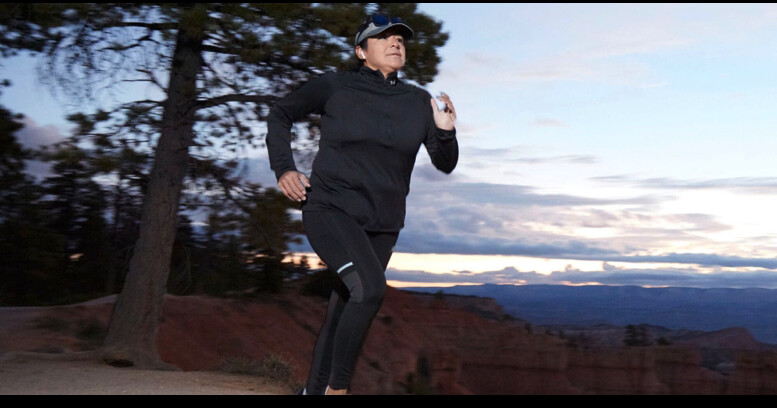
What the 4x4x48 Challenge Is All About
During the COVID-19 pandemic David Goggins, a retired Navy Seal, ultrarunner, endurance athlete, and public speaker came up with the 4x4x48 challenge. As he witnessed races being canceled around the world, Goggins wanted to offer an alternative endurance “event” that individuals could dare themselves to conquer outside of the classic race environment.
To complete a “4x4x48 Goggins Challenge,” which will earn you a T-shirt if you take part in the official program during Goggins’ announced dates (it’s currently on hold, according to his website), athletes must:
Run 4 miles
Repeat every 4 hours
Continue this pattern for 48 hours
All in, a 4x4x48 challenge calls for running 48 miles in 48 hours. For those who aren’t runners, Goggins suggests swapping in another form of cardio (such as swim, bike, or row, for example) for 45 to 60 minutes every four hours.
For some runners, four miles feels like an easy shake-out or a warmup. For others, that’s the longest they’ve ever tackled. Regardless of how much or how often you run, there are some important factors to consider before deciding to attempt a 4x4x48.
The Benefits of the 4x4x48 Challenge
Challenging yourself with high-intensity workouts can be beneficial as part of a well-rounded training program, which should include sufficient rest, recovery, and exercise variety, says Nicole Thompson, ACE-CPT, a San Diego, California-based personal trainer, health coach, group fitness instructor, and medical exercise specialist.
The 4x4x48 challenge is certainly high-intensity and high-frequency. Thompson says that the potential pros for a 4x4x48 challenge include:
Mental Toughness
Successfully completing a task this tough “requires mental strength, discipline, and determination, which can enhance your mental resilience and willpower,” she explains.
Increased Calorie Burn
Running for extended periods at regular intervals can result in significant calorie expenditure. A 150-pound runner can expect to burn around 450 calories during each four-mile stint at a 10-minute-per-mile pace. Over the course of the entire 4x4x48 challenge, this tallies up to 5,400 calories. This is nearly double the 2,900 or so the same person would burn during a four-hour marathon.
Possible Improved Cardiovascular Fitness
“This intense running schedule will challenge your cardiovascular system, which could improve endurance and aerobic capacity,” Thompson says. Although adaptations and improvement typically occur over the course of weeks and months with consistent training—rather than in a mere two days—participants may notice some improvements in cardiovascular capacity after they recover.
Practice in Time Management
Sticking to a strict schedule requires excellent time management skills (and likely, a trustworthy alarm), which can be beneficial in other areas of life, such as work or school.
The Drawbacks of the 4x4x48 Challenge
It’s vital to keep safety top of mind and avoid pushing yourself beyond your limits, Thompson advises, which would only set back your fitness journey—not progress it.
“Honestly, for most runners, the 4x4x48 challenge will have more cons than pros,” believes Erin Beck, NASM-CPT, an Orange County, California-based director of training and experience for STRIDE Fitness. “The structure doesn’t allow your body proper recovery and it requires a high mileage count that the average athlete won’t be ready for.”
According to Thompson, the following are possible drawbacks of the 4x4x48 challenge:
Overtraining and Injury Risk
“The risk of overtraining is high due to the intensity and frequency of the runs, which can lead to fatigue, muscle strains, or other injuries,” Thompson says.Sleep Disruption
The frequent runs will very likely disturb your usual sleep schedule (unless you normally get less than four hours, which we don’t recommend). In turn, this can affect recovery and overall performance.
Lack of Recovery Time
With only four hours between runs, your body may not have sufficient time to bounce back, increasing the risk of injury and burnout.
Nutritional Challenges
Remember that calorie count we mentioned? Eating and hydrating enough during the 48 hours can be difficult, and inadequate fueling may lead to performance issues or some serious health-harming ripple effects, such as dehydration or forcing your body to use muscle mass rather than energy from the food you eat to power your run. (Don’t miss our complete guide to what happens when runners don’t eat enough.)
“This is an extreme and highly demanding physical challenge,” Thompson says. If you do a 4x4x48 challenge, “it’s not recommended to do this type of run frequently or on a regular basis. Always prioritize your overall health and well-being by consulting with a qualified coach or trainer to ensure the challenge aligns with your fitness goals and capabilities.”
And be sure to run this challenge—or any endurance event—by your doctor to get their thumbs up to ensure it’s a wise choice for your fitness level and overall health, Thompson adds.
Why Sleep Is Such a Limiting Factor in 4x4x48
Sleep is essential not only for optimal performance and recovery, but also for overall health and longevity. A 4x4x48 challenge makes it really tough to get the recommended seven to nine hours of sleep, and the snooze time participants do get is interrupted and fairly likely to be low-quality.
“While doing this type of intense running challenge for two days may not have a long-term impact on overall health and recovery, it can lead to acute sleep deprivation, which can have immediate effects,” Thompson says.
Thompson explains that in just 48 hours, sleep deprivation can:
Lead to decreased focus, attention and memory; essentially impairing cognitive function
Compromise coordination and reaction times, increasing the risk of accidents or injuries during the runs
Raise cortisol levels, affecting the body's ability to handle stress and recover properly
Weaken the immune system, making you more susceptible to illnesses
Increase irritability and mood swings, while decreasing emotional resilience (basically, making you not-so-pleasant to be around)
For those who opt into the 4x4x48 challenge, it’s essential to prioritize R&R as much as possible during the breaks between runs.
“Even brief naps and dedicated periods of rest can be beneficial for recovery,” Thompson says. “Then once the challenge is complete, be sure to allow yourself enough time to catch up on sleep and give your body the chance to fully recover.”
Our bodies have a magical way of slowly getting back on track after a night or two of less-than-stellar sleep, Beck says. That said, it’s crucial to not over-tax your system—and carve out time for an extra hour or two of sleep each night—until your body has time to bounce back from the daunting physical (and mental) demands of something like 4x4x48.
A Better Way to Try the 4x4x48 Challenge
For most people, it would be best to avoid attempting this type of run more than once, if at all, Thompson says. Or stick to once or twice per year, max. And exercise caution if you do decide to do it, stopping if you feel aches or pains and prioritizing that recovery.
“It’s more practical and beneficial to focus on a well-rounded and sustainable training program that includes a mix of running, cross-training, rest days, and proper recovery,” Thompson adds.
If you’re really craving a challenge, ante up and give one of these Beck- and Thompson-designed modifications a shot:
→ Beginner: Run 4 miles per day, 4 days per week for 48 weeks. “Over the course of a year, this will help you safely increase your stamina, burn calories, tone your entire body, rack up the miles and support your heart health,” Beck says.
→ Intermediate: Run 4 miles every 12 hours for 48 hours.
→ Advanced: Run 4 miles every 8 hours for 48 hours.
Both of these latter options will allow for a nearly-full night of sleep, plus more recovery time between runs.
Regardless of which path you choose, if you decide to try some form of 4x4x48 challenge, “pay close attention to how your body responds to the challenge. If you feel excessively fatigued, experience persistent pain or notice signs of overtraining, consider cutting back or stopping the challenge,” Thompson says. And if you finished the challenge, make sure to take the next few days off from exercise.
The Bottom Line on 4x4x48
The 4x4x48 challenge is an endurance running event that requires zero qualifier, entry fee or specialized course. It might appeal to the ultramarathoner who’s looking to rack up mileage in a new manner. But running 4 miles every 4 hours for 48 hours is very demanding on the body and brain, so proceed with caution and train your way up to that mileage, rather than just jumping right into it.
It’s also wise to take time to reflect on why you’re feeling called to try the 4x4x48 challenge, if you are. Will running in this way get you closer to your health and fitness goals? Or is seeing pals and athletes on social media creating some FOMO?
“Ask yourself: ‘Is this 4x4x48 something I can do to stay fit for the rest of your life? And is it a healthy approach to fitness for you?’ Your journey has to be sustainable to be successful,” Beck says.
(08/20/2023) ⚡AMPby Runner’s World
How Athletes Can Bounce Back After Bed Rest
How Athletes Can Bounce Back After Bed Rest Spending a week in bed, à la John Lennon and Yoko Ono, might sound idyllic. But there’s plenty of research showing that the impact on your fitness and health can be brutal. In one 2016 study, young men who spent a week in bed lost 3.1 pounds of muscle, and their VO2 max and maximum strength declined by 6.4 and 6.9 percent, respectively. People spend months, or even years, trying to make gains of that magnitude, but you can lose it in a week.
The picture may be even worse for well-trained athletes. Studies find that those with the highest initial fitness levels suffer the greatest losses during bed rest. Sometimes there’s no avoiding it, though: surgery, injuries, and illnesses—including, notably, COVID—can confine even the fittest athletes to bed. So a new systematic review in the journal Sports Medicine, from researchers Barry Spiering, Jonathon Weakley, and Iñigo Mujika, takes a closer look at how bed rest affects trained athletes, and how to minimize its negative impacts.
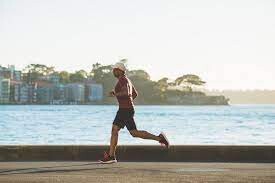
The main finding is easy to sum up. A detailed search of four databases turned up an initial batch of 501 studies looking at fitness losses during bed rest, of which a grand total of zero involved highly trained athletes. This isn’t particularly surprising: if you’re a serious competitive athlete, are you going to volunteer for a study that will probably strip you of months of training gains? Still, Spiering’s main takeaway is that scientists should study this question more. If randomized trials aren’t feasible, it should still be possible to take advantage of situations where athletes are forced to take complete rest, for example after surgery, and do some detailed measurements of how quickly their fitness declines and how long it takes to regain.
In the meantime, the researchers did find seven studies involving athletes classified as “Tier 2: Trained/Developmental,” which is a notch above recreationally active, enabling them to extrapolate some tentative conclusions about what happens to more serious athletes.
One key finding was that endurance starts to decline within about three days. The initial rapid decline is associated with a drop in blood plasma volume, while the subsequent gradual decline reflects physical changes in your heart, circulatory system, and muscles. There’s a small body of literature suggesting that you can fight the initial decline by taking in extra fluid and salt to preserve your plasma volume. The studies use a daily dose of 30 milliliters of water and 0.1 grams of salt for each kilogram of body weight (that’s about two ounces of water per pound), starting a week or more before bed rest starts. The evidence for this is intriguing but not yet definitive.
Muscle strength starts to decline within five days. In this case, there’s an initial rapid decline resulting from neuromuscular changes in how signals travel from the brain to the muscles, then a slower decline as your muscles start to shrink. To fight the neuromuscular decline, you can try motor imagery training, which basically involves imagining yourself doing strength training. As far-fetched as this sounds, there’s a robust body of literature showing that it works, including a Scottish basketball team that did imaginary strength training during the initial phases of the COVID lockdown.
To maintain your muscle mass, there are a bunch of possible tactics. You can have a machine move your limbs for hours at a time, use blood-flow restriction, or apply electrical stimulation to your muscles—which helps stave off muscle wasting even in critically ill patients who are comatose. It’s also crucial to get enough protein, particularly because you’ll likely be eating less than usual while confined to bed. Spiering and his colleagues cite a recommendation of 16.5 grams of essential amino acids plus 30 grams of carbohydrate, three times per day. According to muscle researcher Luc van Loon, the most effective way to stimulate muscle growth and maintenance is the combination of ingesting protein and using your muscles—so if you’re able to get out of bed at all, do it when you’re eating, since even shuffling down the hall to the kitchen will help your muscles make better use of the lunch you eat.
There are some other nuances, like the changes in blood pressure and distribution that result from prolonged bed rest. When you’re standing up, gravity pulls your blood down into your legs. When you’re lying down, it gets redistributed to your torso—and your body eventually gets used to that new normal, so that when you finally get out of bed and gravity kicks in, you get a head rush because you don’t have enough blood pressure to keep your brain supplied with oxygen. One countermeasure borrowed from research into how astronauts handle zero-gravity spaceflight is lower-body negative pressure, a complex procedure that basically involves putting your legs into a specially designed box from which the air is pumped out, drawing blood from the core into the legs and simulating the effects of gravity. This is probably more trouble than it’s worth if you’re just in bed for a week with COVID, but is a cool-sounding idea and could be useful for prolonged bed rest.
The final piece of the puzzle is how long you should expect to take regaining your fitness. Given the absence of studies on competitive athletes, it’s impossible to give any firm answers. Studies on non-athletes suggest that it takes about a week to counter the endurance losses of a two-week bed rest, and two weeks to regain neuromuscular function after a four-week break. But it’s possible that athletes, with their higher initial fitness, might take longer to regain those heights. Spiering and his colleagues give a general guideline of two to four weeks of progressive rehabilitation after a break of up to four weeks, but the details will depend on the circumstances and the reason for the break.
All of this is important to competitive athletes who, for one reason or another, get stuck in bed for a few days or more. But it’s also of interest to anyone who plans to get old. The “catabolic crisis” model of aging suggests that muscle mass doesn’t decline smoothly and gradually; instead, we lose disproportionate amounts during brief periods of total inactivity. Being stuck in bed is never fun, and I can’t say that the prospect of mainlining protein and slogging through sets of imaginary push-ups while I’m there promises to improve the experience. But I’m starting to think that it’s better than the alternative.
(08/20/2023) ⚡AMPby Outside Online
Shocker! Sifan Hassan falls near the finish, Ethiopians sweep the 10,000 meters at the World Championships
The World Athletics Championships is the most important meet of the year for most elite track and field athletes. From August 19 to August 27, the best from across the globe will compete for medals and titles during a thrilling nine days in Budapest, Hungary.
Sifan Hassan had gold in her sights. Hours after winning her heat in the 1500 meters, she’d moved from eighth place to the lead in the final two laps of the women’s 10,000 meters—the first final of the meet.
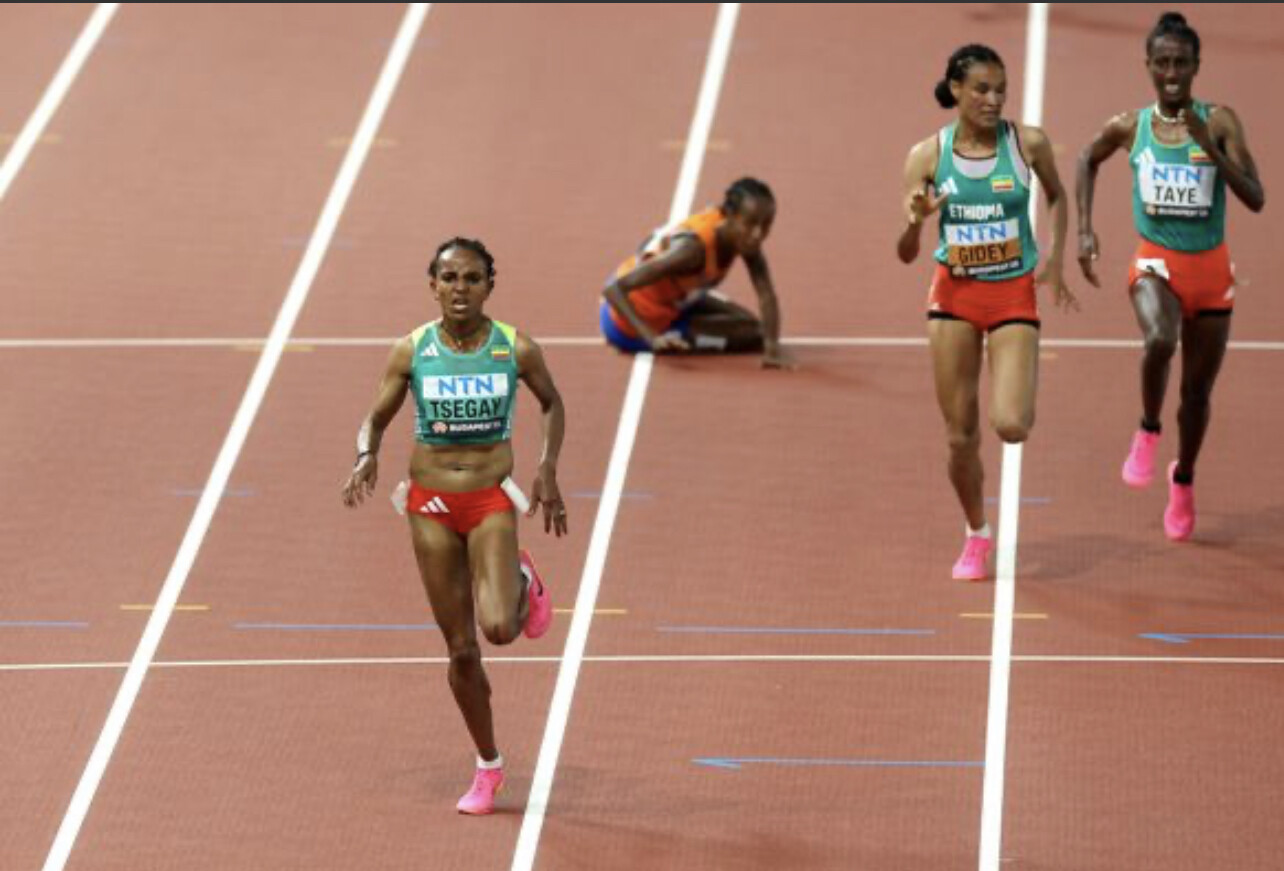
It was a head-to-head battle that many may have predicted, but the closing drama came as a shock.
Gudaf Tsegay and Sifan Hassan – shoulder to shoulder with their arms pumping and their eyes fixed on the finish – both chasing 10,000m gold in a thrilling first track final of the World Athletics Championships Budapest 23.
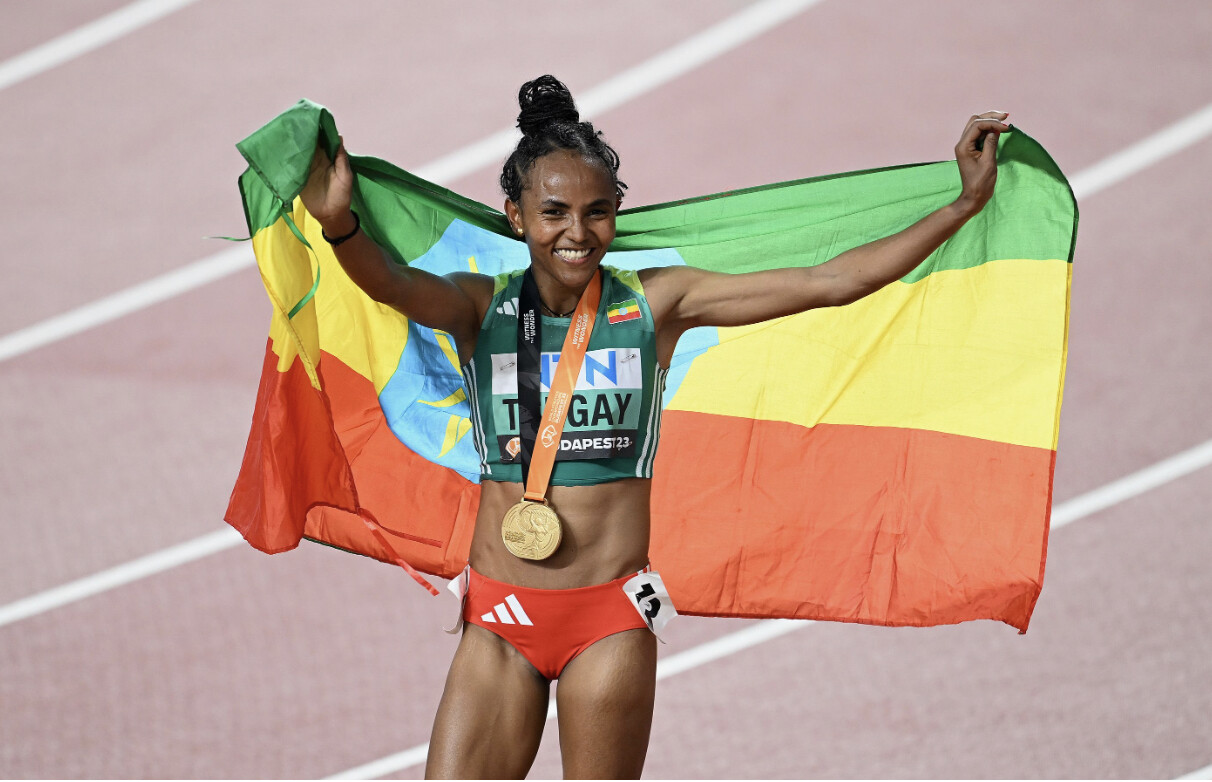
Two of the fastest ever women over 25 laps of the track, locked in a fierce fight. Until suddenly, they weren’t. Just metres from the finish line, after both had used their 1500m speed to superb effect, Hassan fell – the Olympic champion's dreams of another global medal treble crashing down with her.
As Hassan stumbled, Tsegay remained resolute. The world 5000m champion from Oregon last year gritted her teeth and ended up adding a maiden 10,000m title to her burgeoning global medal haul, clocking 31:27.18 to lead an Ethiopian medal sweep ahead of world record-holder and defending champion Letesenbet Gidey, and world indoor medallist Ejgayehu Taye.
At first, Hassan played it safe. Sticking to the back of the pack as the race set out at a conservative pace, she covered the first 400m in 87 seconds, four seconds back at the end of a line of athletes snaking around the track.
As they ticked the laps off, the Dutch star moved up a few places – still sitting back off the leaders but close enough to cover any moves, if necessary. Tsegay and then Gidey took a turn at the front, as the race continued to build.
Then Hassan pounced. Gidey led at the bell – a stride ahead of Tsegay, with USA’s Alicia Monson just behind them. Hassan was fourth at that stage, having passed Taye plus Kenya’s Grace Loibach Nawowuna and Agnes Jebet Ngetich.
Unleashing the sort of pace that helped her to the world 1500m title in 2019, the 30-year-old blazed past her rivals along the back straight and led into the final bend. She was holding off a chasing Tsegay and seemed strong.
But Tsegay – the world indoor 1500m record-holder – wasn’t giving up. She drew level with Hassan on the home straight and they jostled for position. As Hassan stretched, she lost her rhythm and fell to the track, only able to watch as gold ran away.
So did silver, and bronze. After crossing the finish line in 31:28.16 to add 10,000m silver to the gold she won in Oregon, Gidey went back to help Hassan.
Taye ran 31:28.31 to complete the third medal sweep for her nation in the event at the World Championships, while Kenya’s Irine Jepchumba Kimais finished fourth, Monson fifth and Ngetich sixth.
Hassan wound up finishing in 11th place in a time of 31:53.35.
American Alicia Monson ran a strong race, looking as if she was in position to contend for a medal before Hassan’s last surge. She finished fifth in 31:32.29. Elise Cranny was 12th in 31:57.51, her best time this season, and Natosha Rogers was 14th in 32:08.05.
(08/19/2023) ⚡AMPby World Athletics (NBC sports Video)
World Athletics Championships Budapest 23
From August 19-27, 2023, Budapest will host the world's third largest sporting event, the World Athletics Championships. It is the largest sporting event in the history of Hungary, attended by athletes from more than 200 countries, whose news will reach more than one billion people. Athletics is the foundation of all sports. It represents strength, speed, dexterity and endurance, the...
more...This workout will have you primed for you next 5K
If you’ve got a 5K on your race calendar, it’s time to hit the track and get some speedwork in. This workout will help you practice your 5K pace while also pushing the pace a little to improve your top-end speed, which will put you well on your way to a new personal best.
This workout switches between longer, 500-meter intervals and shorter, 200-meter intervals. The goal is to run the longer sections at your 5K pace, and then crank things up a notch or two during the 200s. You get plenty of rest between sets, so don’t be afraid to push yourself and see what you can do. This session should have you feeling pretty gassed at the end, so make sure you plan for an easy day the next day.
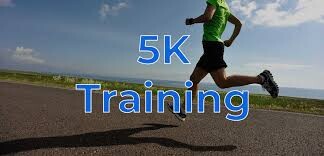
The workout
Warmup: 15-20 minute easy jog, followed by form drills and strides
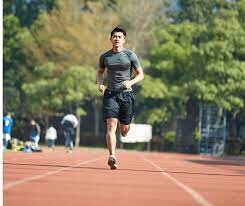
Workout:
2 x 500m at 5K pace, with 1:30 rest between intervals
2:30 rest
5 x 200m at a fast pace, with 1:30 rest between intervals
2:30 rest
2 x 500m at 5K pace, with 1:30 rest between intervals
Cooldown: 10-15 minute easy jog, followed by light stretching
(08/19/2023) ⚡AMPby Brittany Hambleton
Malindi Elmore to run Berlin Marathon
Malindi Elmore will toe the start line at this year’s Berlin Marathon–the same course where Natasha Wodak broke Elmore’s Canadian marathon record last year.
Elmore is among a blazingly fast women’s field the Berlin Marathon has confirmed for the Sept. 24 race. Other runners announced so far include Kenya’s Sheila Chepkirui (who finished fourth at this year’s London Marathon) and a strong Ethiopian contingent led by 2022 Berlin champion and course record holder Tigst Assefa, Tigist Abayechew and Workenesh Edesa.

The famously flat and fast Berlin course could lay the groundwork for Elmore to reclaim the mantle as the fastest Canadian female marathoner. Her former Canadian marathon record of 2:24:50, which she set at the Houston Marathon in 2020, was bested by Wodak by more than 90 seconds in the German capital last September (2:23:12). Wodak, who is currently in Budapest for the World Athletics Championships, is not expected to compete in Berlin.
Elmore looks to be in a good position to reclaim the Canadian crown following a string of strong performances. The Kelowna, B.C., native took the women’s title in 2:25:14 at the Canadian Marathon Championship at the TCS Toronto Waterfront Marathon last October. In April, Elmore ran a massive PB at the Gifu Half Marathon in Japan, posting a final time of 1:10:11 and finishing fourth overall.
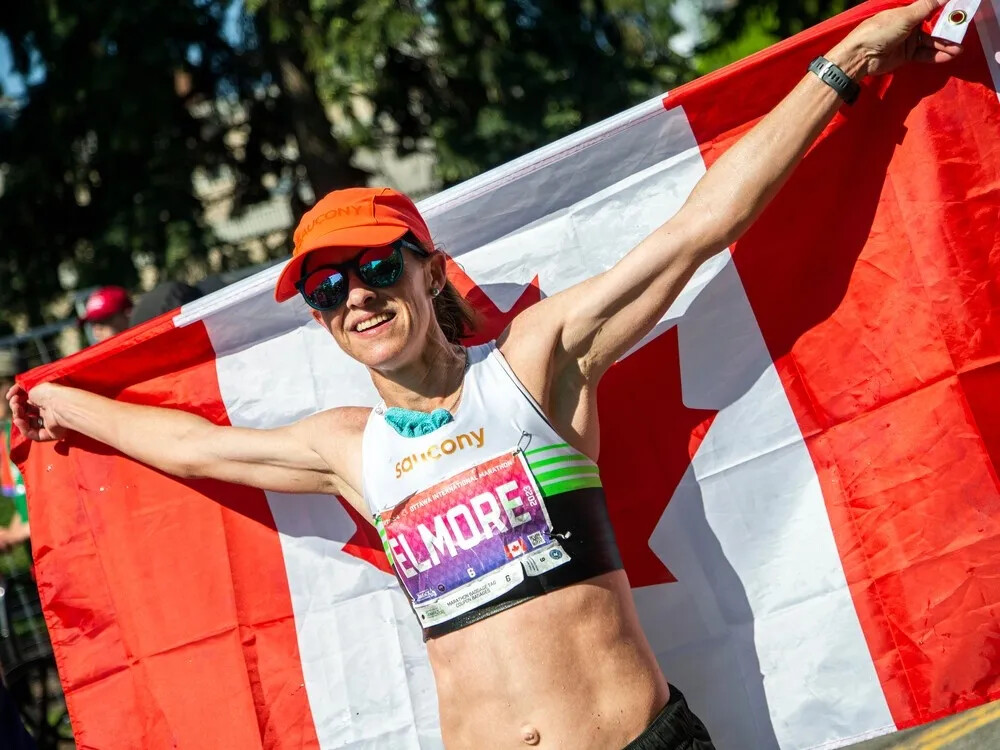
The following month, she threw down a gutsy performance at the 2023 Tartan Ottawa International Marathon. Going into the race with the goal of the 2024 Olympic standard of 2:26:50, she was on pace for 2:26 through 30K and sat in fourth position. As the temperature climbed to 24 C, she gave everything she had over the final 12 kilometres, moving up two spots to finish second to Ethiopia’s Waganesh Mekasha in 2:27:45.
Elmore has also been making bold statements at shorter distances. Last September she bested her own course record in the tenth Under Armour Eastside 10K in Vancouver, running a blistering 32:37.
(08/19/2023) ⚡AMPby Running Magazine
BMW Berlin Marathon
The story of the BERLIN-MARATHON is a story of the development of road running. When the first BERLIN-MARATHON was started on 13th October 1974 on a minor road next to the stadium of the organisers‘ club SC Charlottenburg Berlin 286 athletes had entered. The first winners were runners from Berlin: Günter Hallas (2:44:53), who still runs the BERLIN-MARATHON today, and...
more...Running can help cut risk of 9 different cancers in men
Maintaining high levels of cardiorespiratory fitness in young adulthood can help men lower their risk of developing nine different forms of cancer later in life, according to research released this week.
In a study published in the British Journal of Sports Medicine, researchers analyzed the rates of cancer in a cohort of more than a million men in Sweden over an average period of 33 years, beginning at age 18.
Using the results from fitness tests that were used to gauge the men’s suitability for military service—assessments that were formerly mandatory in Sweden—researchers divided the participants into low, moderate and high levels of cardiorespiratory fitness, and compared cancer rates among men in these groups in later life.

The researchers found the men who showed the highest levels of fitness in young adulthood had a 20 per cent lower risk of kidney cancer and a 19 per cent lower risk of head and neck cancer compared to men in the low-fitness category.
The study also suggests high cardiorespiratory fitness can play a major role in reducing the risk of gastrointestinal cancers. Participants in the high-fitness category saw their risk of cancer of the liver, the bile ducts, the esophagus and the gallbladder slashed by nearly 40 per cent, and their risk of stomach and colon cancer reduced by 20 per cent.

The greatest difference was seen in rates of lung cancer. The study shows men in the high-fitness category cut their risk of lung cancer by 42 per cent compared to the low-fitness group. However, the researchers attributed this wide gap to smoking habits rather than cardiorespiratory fitness on its own.
The study also identified two forms of cancer that members of the high-fitness cohort were more likely to be diagnosed with, compared to men in the low-fitness group. Diagnoses of skin and prostate cancers were slightly higher in the high-fitness group. The researchers attributed the difference to physically fit men being more likely to spend more time in the sun, and to undergo screening for prostate cancer.
The study adds to a growing body of research linking cardiorespiratory fitness to reduced cancer risks in men. A separate study published by the Swedish School of Sport and Health Sciences in June also showed lower rates of colon and lung cancer in men with high cardiorespiratory fitness. However, that study, unlike the research published this week, linked high fitness levels to a lower risk of prostate cancer.
Although both the above studies looked specifically at cancer risks in men, other research has shown that cardiorespiratory fitness in early adulthood can also lead to reduced cancer risks for women later in life.
(08/19/2023) ⚡AMP
by Paul Baswick
Australian runs a marathon in gumboots while repairing a canoe
Runner and filmmaker Beau Miles says the best idea he’s ever had was running a mile an hour over 24 hours. “I ran one lap of my perfect mile-long block every hour for 24 hours, and in between did a bunch of odd jobs and made things,” the bizarrely charming adventurer explains. “It’s an idea that’s been copied all over the world. I thought, why don’t I copy myself?” In this short film, Miles sets off on a slightly different 24–hour marathon–in gumboots–and, as always, the Aussie leaves you laughing and feeling inspired.
“We’re all familiar with the daily allotment of 24 hours,” Miles says. “My revelation as a mid-life ginger is that exploiting yourself within it is life-affirming.” The ever-creative Miles sets out to repair a canoe and makes a list of things that need to be done between laps. “This time I’ll do lots of jobs within one, by renovating a banged-up-old fleet canoe, and instead of running around the block, I’ll run two laps every hour, in gumboots, around my paddock,” Miles says.
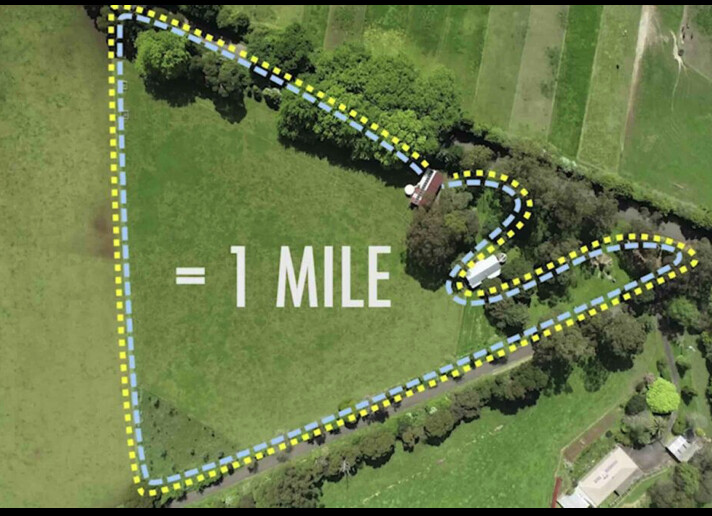
Known for sewing up his runners rather than purchasing new ones, Miles is all about repairing, reusing and repurposing. He calls the runs in between repairs a “circuit breaker” and explains that running has always been a way to reboot for him. “I think I have a really good sustainable life, because I run,” Miles says.
Between moments of boat repair, bread-making (with pesto) and gorgeous shots of the landscape around Miles’s farm, you can’t help but want to see what he will tackle next. He doesn’t disappoint, sharing the beloved “beauisms” his fans adore: “Changing your underpants is like starting a whole new week,” he surmises, when he suddenly feels refreshed while running through the long night.
Miles explains he loves the mix of going for a run every hour and then problem-solving using his hands, “using the two hemispheres of Beau.” But why the gumboots? That remains a mystery that even Miles’s wife can’t solve. “I’m intrigued, she says. “I personally would not choose to run 26 miles in gumboots.”
“It turns out copying yourself ain’t such a bad idea,” Miles says. If you haven’t completed your own 24-hour marathon, you’ll be inspired to try one after watching this.
(08/19/2023) ⚡AMPby Running Magazine
Neighbours outraged about woman's early-morning runs
Early risers have long praised the supposed benefits of starting their day with a run, but what happens when your pursuit of fitness triggers a disturbance among your neighbours? A woman’s post on Reddit from a few years ago has re-ignited an online debate about personal routine versus community harmony after her 5 a.m. runs started disturbing residents in her neighbourhood.
“I like to go for a run in the morning before I go to work,” the woman anonymously stated in the post. “I usually set out around 5:00 a.m. so I can make sure to get at least five miles in at a time before having to get ready for work.”
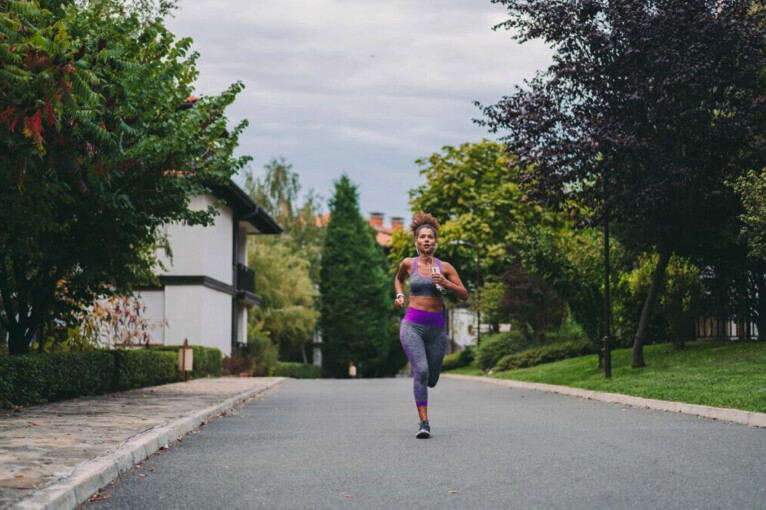

Unfortunately, her route takes her past homes equipped with motion sensors, triggering an unintentional array of lights, accompanied by the barks of agitated dogs, interrupting people’s sleep. According to an article, complaints began pouring into the neighbourhood Facebook group and on the Nextdoor app, a platform that allows neighbours within the same geographical area to share information and communicate.
Acknowledging the issue, the woman took to both groups to apologize. However, her gesture was met with animosity, with suggestions to change her route and look into getting a gym membership. The idea of changing her routine did not sit well, as she explained that running at that time significantly contributed to her daily well-being.
“I love to run in the morning because it makes me feel good throughout the day,” she wrote. “I don’t enjoy running on a treadmill. Never have, never will.”
Although the runner did not disclose their location in the post, she said she is constrained by several factors: “Nearby parks are insufficient, with the closest park being surrounded by houses, which is already part of my route,” she claimed in the post. “There’s also a lack of trail systems in my area, and not having access to a car adds to my limitations.”
Despite the complaints and animosity, many were in support of her story, stating that people should “get better blinds” or “train their dogs” if they really wanted to prevent interruption. One commentator wrote, “Unless you are doing something to set these things off intentionally, you’re fine.”
(08/19/2023) ⚡AMPby Running Magazine
Build mental toughness with these panic-inducing songs for your running playlist
Not every runner chooses to complement their toughest training sessions with a soundtrack, but those who do run to music tend to select songs that lift their spirits—and possibly even their performance. There’s no doubt the right song can put a spring in a runner’s step as the legs tire in the darker moments of a long run, or make a scamper along a sun-dappled forest trail seem that much more serene.
But should music‘s role as a training tool be limited to making us feel better? I say no. Learning to cope with fatigue and exhaustion is important in other parts of training. Running on tired legs at the peak of marathon training feels pretty crummy at the time, but it can reap big rewards on race day. In the same way putting our legs through the wringer can build our physical resilience, perhaps panic-inducing tunes can fortify our mental resilience during training, giving us the confidence to know we can endure frantic doubts and crashing emotional lows on race day.

Consider adding these songs to your panicky running playlist to help you build mental resilience on training runs.
Tarred and Feathered by Cardiacs
This truly frantic piece of post-punk progressive rock unleashes the panic right out of the gates, keeping up its unrelenting tempo until the halfway point, then steadily growing slower and weaker. Great for simulating the mental distress of your GPS watch battery dying right at the start line or running the first half of your race way too fast, then ignominiously flaming out.
Snooze by Toots Thielemans
A classic by one of the titans of jazz harmonica, this song isn’t nearly as frantic, but it does a great job of inducing the dull, steady anguish that comes from fretting over non-running related matters during a race. Did I park the car in a tow-away zone? Did I remember to fill the cat’s food dish?
Sweet Caroline by Neil Diamond (Diagnostix Bootleg)
This remix of the soft-rock classic begins with the warmth of a welcomingly familiar voice—with only slight hints that something is askew—and lulls the listener into a false sense of security before going horribly, horribly wrong. Masterfully mimics the mental torture of being on pace to PB your favourite race course, then pulling your
Gimme Summn by TNGHT
A great song for simulating the panic of simultaneously being lost on a race course and swallowing way too many energy gels. As a bonus, the video—by Canadian artist and animator Cole Kush—really drives home how depressingly fleeting life is, and that you should get your runs in while there’s still time.
(08/19/2023) ⚡AMPby Running Magazine
10 Things to Know About the World’s Fastest Man
Zharnel Hughes is the British record holder and the world’s top-ranked 100-meter sprinter this year who will bid for his first individual title at the World Championships in Budapest
American athletes have long dominated the 100-meter dash ever since the inaugural World Championships in 1983, amassing 11 titles in the event, the most of any nation. But for this year’s World Championships that kick off this Saturday—the most prestigious senior track competition outside of the Olympic Games—British record holder Zharnel Hughes wants to change the tally.

He enters the field with the fastest 100-meter time in 2023 (9.83 seconds), which he achieved in June at the USATF New York Grand Prix. The mark ranks Hughes as the 15th fastest of all time in the event, 0.25 seconds behind the world record held by eight-time Olympic gold medalist Usain Bolt.
Hughes, who has competed at three World Championships throughout his career, has twice-earned a silver medal in the 4 x 100-meter relay. And though he has come close—he was second in the 100-meter dash at the previous world champs—Hughes has never won an individual gold medal. If he is successful at the 2023 World Championships in Budapest, Hungary, August 19-27, Hughes will become the second man ever representing Great Britain to win the men’s 100-meter title, the marquee event of track and field.
Here are 10 things to know about the fastest man in the world in 2023:
Zharnel Hughes, 28, was born and raised on the island of Anguilla, a British territory in the Eastern Caribbean that is a mere 16 miles long and three-and-a-half miles wide. He holds dual citizenship for Great Britain and Jamaica. During his youth, Hughes competed for Anguilla, which is not recognized by the International Olympic Committee. In 2015, he opted to transfer his allegiance to represent Great Britain at international competitions.
Hughes hails from a family of runners on his father’s side, and his two younger brothers ran until high school. He got into the sport at age ten, often running against (and beating) peers. He competed in various track events, including the high jump, long jump, 400 meters, and 1500 meters.
“There was an annual sports day [at school], my first competition. At the end of it, I got seven medals—five gold, two silver. I got a trophy for being the most outstanding athlete of the day,” Hughes said. It gave him an early and strong impression of what else he might be capable of on the track.
Growing up, Hughes often watched YouTube videos of elite Jamaican sprinters, like world record holder Usain Bolt, as well as Yohan Blake, the third-fastest man in history. As fate would have it, Hughes would train alongside both of them when he moved to Jamaica as a teen to join the Racers Track Club, led by legendary coach Glen Mills.
Hughes describes his first in-person encounter with Bolt in 2012 as surreal. “I was striding on the grass field. I saw Usain on my left. He looked like a giant. He was striding as well. I just started mimicking everything he was doing. I don’t know why. I was young, 16. I was looking at Usain all in shock,” Hughes recalled. “Here’s the world’s fastest man. I’m right next to him!”
Hughes modified his training schedule to gym work in the morning and a two-hour sprint session in the afternoon and can be seen sprinting alongside “the youths” on the Racers Track Club, he says, adding, “they’re fast, they push me, and I like a challenge.”
Hughes points to nearly outrunning Usain Bolt in the 200-meter race in 2015 at his debut Diamond League meet—the Adidas Grand Prix in New York City—as one of his most memorable races. “Just before coming off the turn, I realized I was right there with Usain. I started running for my life,” Hughes said. “I was getting close to the line, and I was still there with him. I tried to lean forward, but his stride was longer than mine. The entire stadium thought that I won. Everybody was like, ‘Noooo!’” The race made headlines in Anguilla, and Hughes remembers motorcades and banners went up with his name on them.
The morning of June 24, 2023, prior to heading to the starting line of the New York City Grand Prix, Hughes wrote down the time he predicted he’d run: 9.83 seconds. He achieved exactly that, and it was a victory that shaved 0.04 seconds off the British record, previously set by Jamaican-born British Olympic champion Linford Christie at the 1993 World Championships in Stuttgart, Germany.
Hughes tore a ligament in his right knee after falling in a race in 2016 and consequently was absent from the Rio Summer Olympics. At the 2020 Tokyo Olympics, he qualified for the 100-meter final, but he couldn’t contend for a medal after a false start. Hughes later said the mishap was due to a sudden cramp in his left calf while in his set position in the starting blocks.
Hughes started investing in his nutrition at age 18. To this day, his diet is very conservative, partly the influence of a close friend, who is a bodybuilder. His morning routine includes a fruit smoothie, preferring bananas, pineapples, watermelon, and cantaloupe. He’ll sometimes blend spinach and oats. Boiled eggs, omelets, fish, and chicken are his protein staples. He likes to hydrate with coconut water every day, and he never leaves home without a snack, typically a Nature Valley granola bar. “Nutrition helps a lot, trust me,” Hughes said. “It helps keep injury away. Because your body is always being fed, it doesn’t feed on itself.”
While he had to wean himself away from his vice, chocolate cake, he maintains a nightly ritual of a bowl of corn flakes, which he says helps him sleep. On a rare occasion he splurges on a Burger King cheeseburger.
During a flight, Hughes will go to the back of the aircraft to stretch. “I don’t care if anyone is looking at me,” he said. As soon as he lands, he tries to do a shakeout run, sprinting 50 meters on a hotel walkway for up to 15 minutes, or else he’ll put on compression boots and later have his physio flush out his legs.
When he was 11, Hughes flew with a pilot from Anguilla to the British Virgin Islands. He remembers sitting in the cockpit, tempted to play with the instruments inside the aircraft. Only after the plane landed and was switched off did he have the opportunity to grab the control wheel. The experience encouraged his dream of becoming a pilot. He fulfilled his childhood goal of earning a pilot’s license in 2018, seven months after studying at the Caribbean Aviation Training Center in Jamaica.
So as not to interfere with track, he’d often arrive at the aviation center as early as 5 A.M. “I had to make a lot of sacrifices to make it happen,” he said, noting that on a couple of occasions he reconsidered pursuing the license. Flying is now one way he spends time before mid-afternoon track sessions. At times he has flown a Cessna 172, a single-engine prop plane, up to four days a week for an hour and as far away as Montego Bay in Jamaica.
Catch Hughes in action when he takes the starting line on August 19, day one of competition, for the first round of heats for the men’s 100-meter dash.
(08/19/2023) ⚡AMPby Outside Online
Montreal runner Anthony Battah, following 4,500-km monarch butterfly migration path to Mexico
Montreal lawyer Anthony Battah has completed the Canadian leg of a planned 4,500-km run from Montreal to central Mexico, a cross-continental journey along the migratory path of the monarch butterfly aimed at protecting the insect’s population.
Battah, who kicked off his Ultra-Trail Monarch campaign July 29 from Montreal’s Insectarium, finished the Canadian stretch of his run (more than 900 km) Wednesday, when he crossed the Ambassador Bridge from Windsor, Ont., into Detroit.
The runner is being supported on his run by his wife and daughter, who are following the 39-year-old in an RV along his route through the United States to the Monarch Butterfly Biosphere Reserve in Mexico’s Michoacán region. Battah’s goal is to run about 50 km a day, which would see him arrive at the biosphere—where the monarchs spend the winter—by Nov. 1.
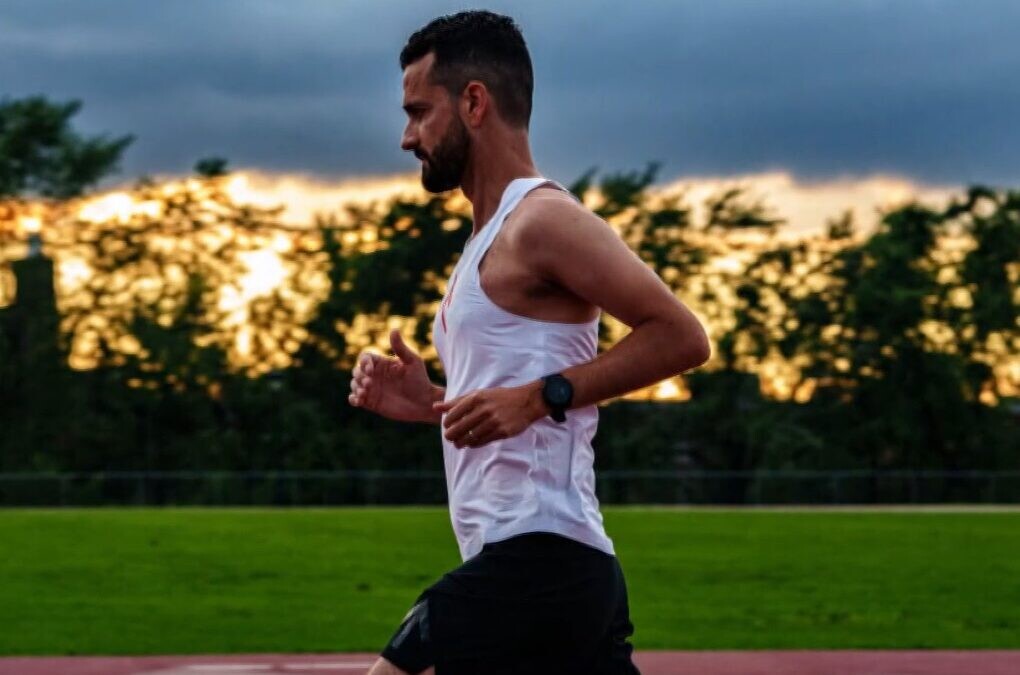
The monarch butterfly is now classified as an endangered species by the Committee on the Status of Endangered Wildlife in Canada. According to The Nature Conservancy, the insect is an important pollinator that plays a vital role in the health of many ecosystems across North America.
“I have this ability to run very long distances. I stumbled on the story of the monarch and it touched me,” Battah told the Montreal Gazette in the lead-up to his run. “I saw in that an opportunity to challenge myself, but also to inspire people to do something in their own areas of interest.”

According to the Ultra-Trail Monarch website, Battah will plant milkweed and flowers rich in nectar to create “aid stations” for future generations of monarch butterflies.
In addition to encouraging others to plant milkweed and other flowers to help the migrating insects thrive, Battah hopes to raise $4.5 million—or $1 per meter he plans on running—to “help serious organizations dedicated to protecting the monarch and biodiversity.”
“I want us to do something significant to protect biodiversity and the environment,” Battah said. “If I’m capable of running 4,500 kilometers to reach the center of Mexico, surely everyone has the capacity to join forces and do a little bit more.”
Battah’s run is the latest campaign to use ultra running to bring attention to the plight of the monarch butterfly. In 2019, the first Monarch Ultra Relay was held from Peterborough, Ont., to the Cerro Pelón butterfly sanctuary in Mexico’s Sierra Madre mountains. Throughout the 47-day journey, 44 ultrarunners volunteered to run segments of 50K to 100K, following the monarch butterfly’s migration route.
(08/18/2023) ⚡AMPby Paul Baswick
Silver medalist Brenda Chebet will target 1500m in Budapest
The 2022 World Under 20 silver medalist Brenda Chebet has pledged to storm the final of the 1500m race at World Athletics Championships in Budapest on her debut in the senior ranks.
Chebet, 19, was enlisted on the Kenyan continent for the premier annual global showpiece at the eleventh hour to replace Purity Chepkirui Thursday who withdrew from the team last week.
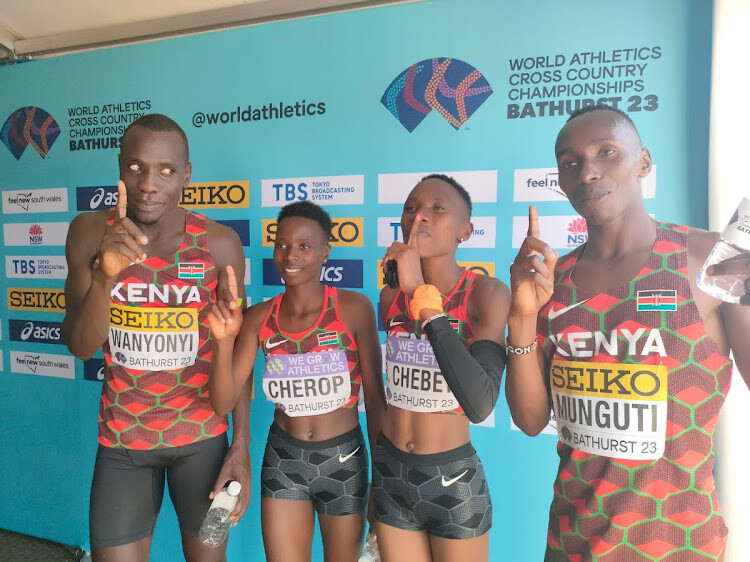
Speaking before departing for the championships, Chebet thanked Athletics Kenya for allowing her to compete for the nation in the Hungarian capital, saying she will not disappoint.
"I feel great having graduated to the senior's stage and received an invitation to compete in the World Championships," Chebet said.
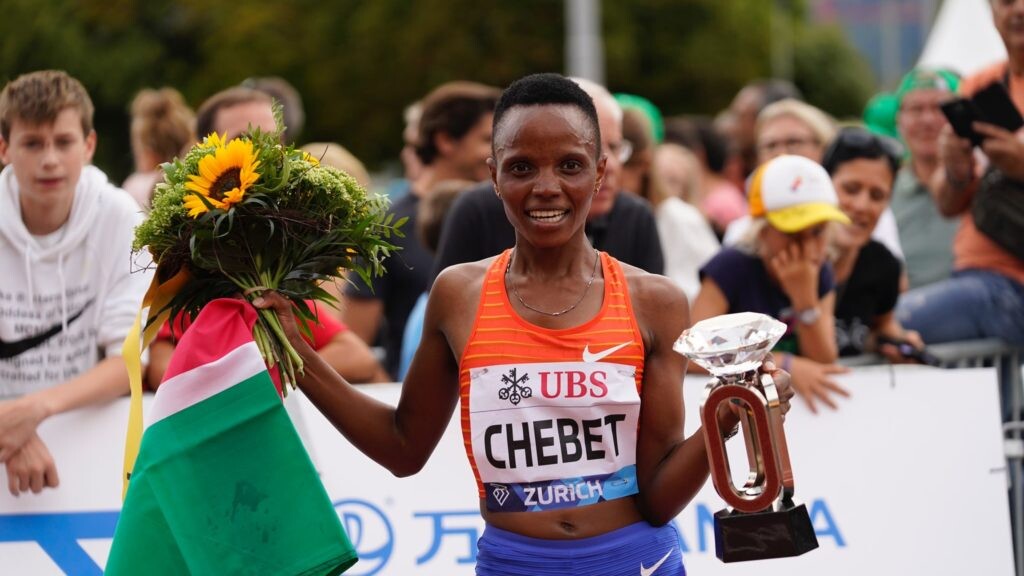
She predicted abrasive competition from a rich field of rivals including her compatriots.
"It won't be easy because we have some very gifted runners in the race such as Faith Kipyegon and the Ethiopians, who are known to pose a great challenge. I'll do my best in the race and wait to see how things will turn out," she said.
The diminutive runner said she feels privileged to be on the same team as Kenyan track queen Kipyegon, who boasts a world record over the distance.
"Competing against Kipyegon means a lot to me because this will be the first time we shall be competing in the same event. She is a celebrated runner and any athlete would be proud to be in the same race with her," said Chebet.
"Let's hope I'll make it to the final and then we can see what to do next."
She heads into the race buoyed by a sterling performance in Bathurst, Australia in February, where she and teammates Emmanuel Wanyonyi, Miriam Cherop, and Kyumbe Munguti delivered a gold medal in the mixed relay at the World Cross Country Championships.
The four wrapped up the race in 23:14 minutes ahead of bitter rivals Ethiopia's Adehera Kasaye, Hawi Abera, Getnet Wale, and Birke Haylom (23:21).
Chebet also won the silver medal in the 1500m at the 2022 World Athletics U20 Championships in Cali, Colombia, running a personal best time of 4:04.64, behind Haylom.
In June 2022 Chebet finished fourth in her specialty at the African Championship in Saint Pierre, Mauritius. She followed that with a sixth place finish in the women's 800m final.
(08/18/2023) ⚡AMP
by Tony Mballa
World Athletics Championships Budapest 23
From August 19-27, 2023, Budapest will host the world's third largest sporting event, the World Athletics Championships. It is the largest sporting event in the history of Hungary, attended by athletes from more than 200 countries, whose news will reach more than one billion people. Athletics is the foundation of all sports. It represents strength, speed, dexterity and endurance, the...
more...Early-morning runners more confident and more engaged in daily tasks, study finds
Have you ever noticed that your entire day flows more smoothly when you fit in an early morning run? For a recent study in the Journal of Occupational Health Psychology, researchers set out to build on findings that exercise before work increases employees’ self-efficacy and work focus. They set out to see what impact morning workouts carry over to the rest of the work day, and their findings may help you conquer the Monday scaries (if you can avoid that snooze button and get up for an early workout).
The study
Researchers hypothesized that “physical activity before work increases challenge appraisal and decreases both hindrance and threat appraisal, which, in turn, increases engagement at work and decreases emotional fatigue and job-related worry.”

Researchers recruited 300 participants in the U.K. Through surveys and questionnaires with people who exercised at least one day a week before work and worked a minimum of 20 hours, the scientists kept track of subjects’ exercise levels, work engagement, emotional exhaustion and job-related anxiety.
Takeaway

Running and exercise in general are beneficial and important at any time of day, so no need to worry if you are on a tight schedule and can only squeeze in those runs after supper. Running later in the day has been found to have benefits of a different kind, potentially aiding in blood sugar control. Researchers explain that exercise at any time “has been found to be predictive of decreases in negative affect and increases in positive affect, self-efficacy and self-esteem on the day you perform it.”
While your evening run may help you unwind, if you want to add some zest to your workday, you may want to start setting that alarm earlier. Researchers determined that when people exercise before work, they approach their work tasks on this day more strongly, perceiving them as positive challenges. They have a more enthusiastic outlook, seeing fewer threatening aspects in their work. From this flows more energy during the day, more absorption in the work tasks, and less exhaustion at the end of the workday.
(08/18/2023) ⚡AMPby Keeley Milne
Kilian Jornet pulls out of UTMB with injury
While the roster of talented athletes ready to jostle for the win at the 171-km Ultra Trail du Mont Blanc (UTMB) on Sept. 1 is still ridiculously deep, one notable competitor will be absent: four-time winner and course record holder Kilian Jornet.
The athlete announced on social media Thursday that he would not be attending due to an injury that hasn’t healed. “No UTMB for me this year,” Jornet shared. “I still can’t run due to the sacrum injury so we decided it was better to prioritize a good recovery and try to do something fun when the pain disappears.”
Fans were eager for a rematch between Jornet and Canadian Mathieu Blanchard, who will be vying for his third consecutive podium finish in Chamonix. Blanchard ran last year’s race in 19 hours, 54 minutes and 50 seconds to finish a close second behind Jornet, who ran 19:49:30, setting a new course record.
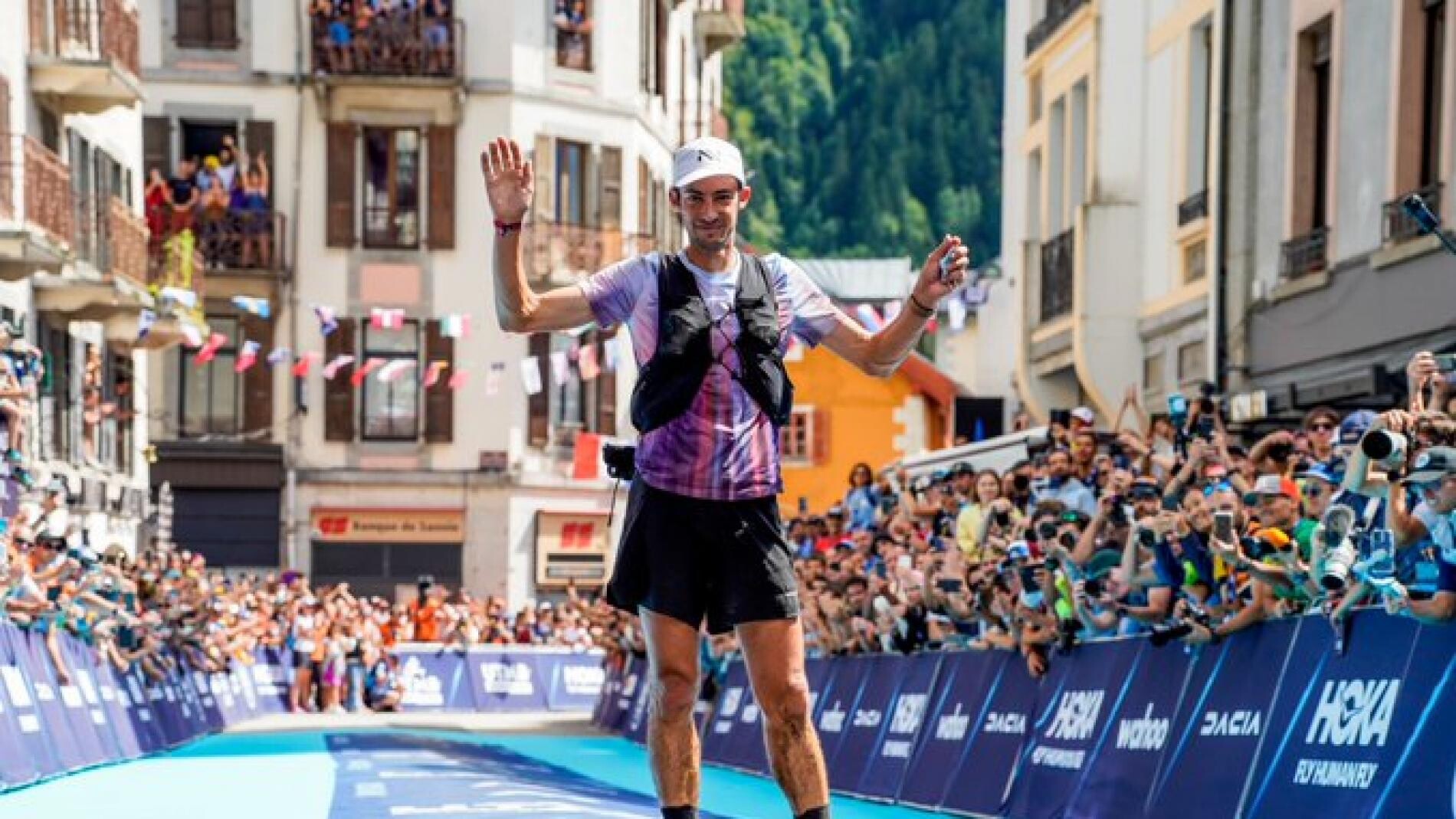
Jornet battled through injury in the Eiger Ultra Trail by UTMB, vying for a UTMB Running Stone that would allow him to compete in the final UTMB event in Chamonix. While Jornet leads the UTMB Index with a 945 rating, he needed to finish the race to become a contender in the final. The athlete injured his sacrum in training two days before Eiger Ultra, but fought through to finish in 48th place in a race won by 16-year-old Swiss athlete Lorick Buclin (1:21:26).
“Some days before Eiger Ultra trail I started to feel pain in my right hip, Jornet shared on Instagram. “I thought it was a muscle problem or tendinitis that would go away with some easy days, but after a check we found out it’s a bone edema.” The multi-sport mountain athlete explained that he suspected the cause was returning to big running weeks too quickly after a Himalayan expedition that left him with broken ribs and a hip injury.”It feels it’s a bad timing to get this injury so close to the races but managing injuries and recovery is part of an athlete’s life,” he said.
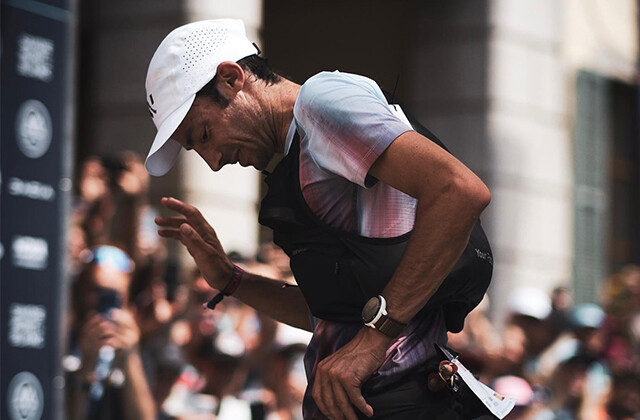
While Jornet expressed hopes in late July that he would be able to line up along the likes of Americans Jim Walmsley and Courtney Dauwalter, British ultrarunner Tom Evans and Canadian Blanchard, the athlete decided against it. Fans can hope to see him crewing his wife, Swedish ultrarunner and ski mountaineer Emelie Forsberg, who will be lining up at CCC (Courmayeur–Champex–Chamonix), the 100K race at the UTMB World Series Finals.
Jornet is somewhat of a legend at UTMB, first winning the race in 2008 as a 20-year-old and returning to win 2009, 2011 and 2022. Jornet has a long list of accomplishments and holds the fastest known time speed record for the ascent and descent of major mountains, including the Matterhorn and Mont Blanc.
(08/18/2023) ⚡AMPby Keeley Milne
North Face Ultra Trail du Tour du Mont-Blanc
Mountain race, with numerous passages in high altitude (>2500m), in difficult weather conditions (night, wind, cold, rain or snow), that needs a very good training, adapted equipment and a real capacity of personal autonomy. It is 6:00pm and we are more or less 2300 people sharing the same dream carefully prepared over many months. Despite the incredible difficulty, we feel...
more...Sebastian Coe reelected as World Athletics president
World Athletics President Sebastian Coe was elected for a third term at the 54th World Athletics Congress in Budapest on Thursday (17).
Ximena Restrepo was re-elected as a Vice President and will be joined by newly elected Vice Presidents Raul Chapado, Adille Sumariwalla and Jackson Tuwei.

A total of 192 voting members of Congress voted for Coe and three abstained. Under the World Athletics Constitution, this will be Coe’s final term as President.
In 2019, Restrepo, the 1992 Olympic 400m bronze medallist from Colombia, became the first woman to be elected as a World Athletics Vice President.

As part of the widespread reforms adopted by the World Athletics Congress at the end of 2016, World Athletics added minimum gender targets into its constitution to establish parity at all levels in the sport’s governance.
The reforms detailed a requirement to have 13 members of each gender elected to the World Athletics Council at the 2027 Congress. This target has been met four years earlier than the reform roadmap prescribed.
The remaining requirement to be met at the 2027 Congress is the election of two Vice Presidents of each gender.
"I’m grateful for the support of my colleagues and delighted to see that more of the commitments we made during the governance reform process in 2016 have come to fruition with the election of World Athletics’ first gender equal Council four years ahead of schedule," said Coe. "But the job is not done yet and we need to keep pushing for gender parity throughout our representative bodies. The strength of our sport is in its diversity and that should be reflected in our governance at all levels."
(08/17/2023) ⚡AMPby World Athletics
Back to school: Where to run when kids take back the track
The breezy days of summer are even more carefree for those of us who live near a high school track that’s open to the public. The summer break brings freedom not just to students, but to runners who can pick a lane and do laps whenever they please without fear of gatecrashing a gym class or track meet. For some, open access to a school track is more necessity than luxury—my brother-in-law’s decision to relocate to a small New Brunswick community hinged on a guarantee from the town’s mayor that he’d be able to use the nearby school track (which he got—in writing, no less).
But no matter how welcoming a school is to public track users, the new academic year brings an end of unfettered track access and the need for runners to find an alternate training ground. Here are some things to consider for those wanting to get in their track work without the track.

Outdoor alternatives
With autumn—and arguably the year’s most hospitable conditions for outdoor training—ahead, the search for an alternative to the track should begin outdoors. The kind of location you choose—such as a roadway, a pedestrian path in a park, a trail or a parking lot—probably won’t matter as much as the qualities of that location. Some of the characteristics of a good track alternative include:
A (relatively) straight 400m stretch: While a track alternative needn’t be straight—tracks aren’t, after all—a potential training space shouldn’t have any aggressive turns. Having to negotiate sharp, tricky angles during a hard training session can hinder your performance and could easily result in injury. The stretch should be at least 400m to accommodate interval work, but longer stretches (800m or 1,200m) can open up training options that won’t require you to double back. You don’t need a trundle wheel to get a workable read on the distance. Some park pathways have signed markers at regular distance intervals (although these are more often spaced at every 0.25m, which doesn’t fit the 400-meter mould). The more accessible approach for gauging distance is with a GPS watch. Switching your watch’s autolap to 400m instead of 1 km is one option, but for greater ease and consistency, bring a piece of chalk on your run and mark off the 400m distance.

A flat, consistent surface: Similar to choosing a stretch that’s relatively straight, opting for a consistently smooth and flat surface will let you maximize your effort while minimizing the risk of injury. Roads, asphalt paths in public parks and other paved areas such as parking lots are top candidates for a suitable surface, though they may lose out in other areas. If a paved surface isn’t an option, opt for a dirt or grass surface over gravel for stability.
A low-traffic area: High or unpredictable traffic flow is enough to throw a potential track substitute out of contention. A circular roadway that was put in as part of a newer subdivision near where I live looks like it was created with a running-track shaped mould, boasting near-perfect dimensions and a freshly paved surface. But steady traffic on the road and sidewalks spoiled it as a decent option. Another road not far from it, meanwhile, isn’t as smooth or track-shaped, but it makes for a much more productive space for interval work, due to the scarcity of traffic.
Indoor alternatives
The treadmill: Seen by many as the go-to alternative to outdoor running, the treadmill does have some strengths as a track substitute. It does away with the chief safety and performance concerns—there’s no traffic to worry about, the surface is always smooth and consistent and there are no sudden bends in the route. But it falls short of mimicking the track experience. There’s no air resistance, the machine’s motor dictates how quickly you can accelerate, and the reported speed and distance might be inaccurate or inconsistent from one treadmill to the next. And while the monotony of treadmill running can help strengthen mental toughness, it can also dampen motivation.
The indoor track: Not as readily available to most runners, community indoor tracks offer the stability and consistency of the treadmill without tethering you to a machine. A number of community recreational facilities that have been built over the past two decades feature a 200m walking and running track in a mixed-use space—around a skating rink, for example. Indoor tracks are great for interval work—when they’re not busy. Unlike treadmills, indoor arenas can pose considerable traffic concerns, with walkers and runners sharing a limited number of lanes, so it pays to pick your training times during quieter hours.
(08/17/2023) ⚡AMPby Paul Baswick
Irene Cheptai bags Devolution title, shifts focus to Copenhagen 21km race
Fit-again former world cross country champion Irene Cheptai has revealed next month's Copenhagen Half Marathon remains top of her priorities this year.
Speaking in Eldoret on Tuesday after winning the Devolution 5km Road Race, the Commonwealth Games 10,000m silver medalist said she wants to mark her return to distance racing with a win in the Denmark capital city as consolation for missing the World Cross Country Championships in Bathurst, Australia through injury.
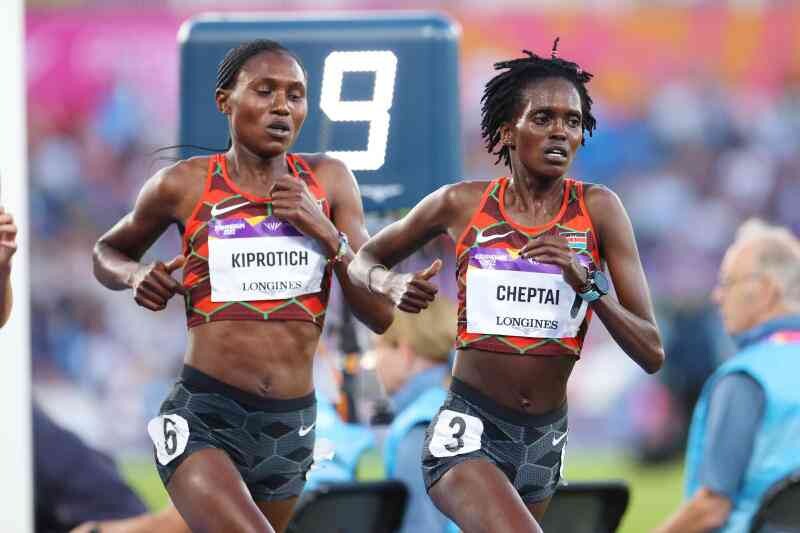
“Despite making the team to the World Cross, I had to leave the camp due to an injury," said Cheptai.
"And now that I am finally fit again, I want to mark my return in Copenhagen on September 17.”
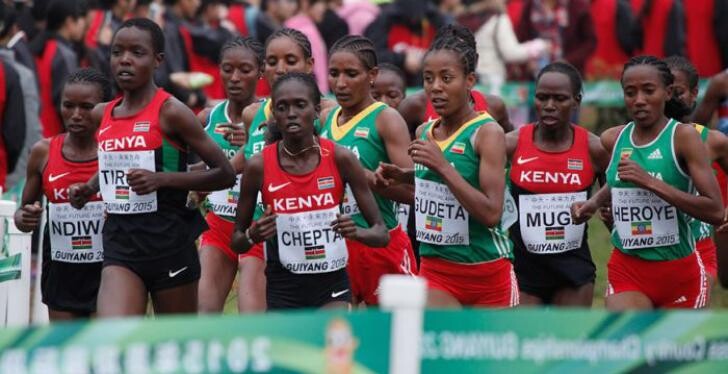
She said that the Devolution race was part of her speed and endurance training.
“This race is part of endurance and speed training. It was my first race since I sustained that injury and I feel like I am good to go,” added Cheptai.
The West Pokot-born runner won the title in 17:04.6 ahead of Sophia Jepchirchir (17:05.5) and Winnie Jemutai (17:16.1) in a race that had attracted over 500 athletes.
Cheptai said the race proved a real struggle in the initial stages especially after they were put on the starting point alongside the men.
“It was a real struggle at the start but I thank God I came home victorious,” she said.
Peter Mwaniki from Nyandarua County won the men's race in 15:09.1 ahead of Weldon Langat (15:12.5) and Charles Rotich (15:13.3).
Mwaniki, winner of Nairobi City 10km race said: “This year has been good for me, winning Nairobi 10km, Belgut 10km and last Sunday’s Uasin Gishu half marathon. These are blessings."
He said he was pushed to victory after race favorite Langat faded in the last few minutes.
“I have been pushed to run well since I have a family — children, wife and grandmother — who have been motivating me to continue exploiting my talent, especially after winning in Nairobi,” he said.
(08/17/2023) ⚡AMPby Emmanuel Sabuni
Copenhagen Half Marathon
The Copenhagen Half Marathon was the first road race in Scandinavia and is one of the fastest half marathons in the world. The Copenhagen Half Marathon has been awarded with the International Association of Athletics Federation's (IAAF) most distinguished recognition - the IAAF Road Race Gold Label. Copenhagen Half Marathon was awarded the IAAF Road Race Bronze Label in January...
more...Martina Valmassoi ‘building up the excitement’ as she takes on 100 miles for the first time at UTMB
Martina Valmassoi will make her 100-mile debut on the biggest stage of all when she takes on the 2023 Ultra Trail du Mont Blanc (UTMB).
The Italian has enjoyed a stellar year, winning at Transvulcania La Palma Island by UTMB in May – which she credited to a change in mindset.

That triumph came a month on from victory at the Genova Trail Marathon and formed part of her recovery from a lengthy injury lay-off.
She has also since picked up fourth at the World Mountain and Trail Running Championships (WMTRC) Long Trail and third at the Marathon du Mont-Blanc.
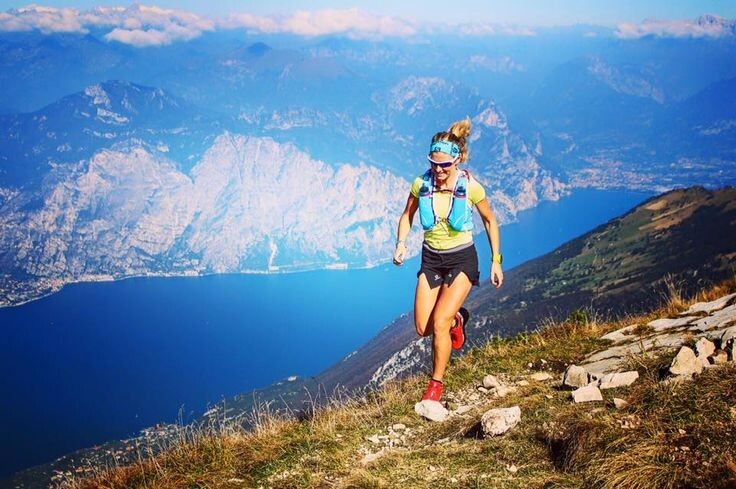
TDS triumph
Though she has never tackled the flagship race, Valmassoi has history at the UTMB event in Chamonix, having triumphed in the TDS in 2022.
She finished in 22:42:47, over 16 minutes clear of Spaniard Claudia Tremps as she bounced back from a DNF in the 2021 race.
At 91 miles, the TDS is a strong indicator of Valmassoi’s potential over the 100-mile distance, though she will be up against a stellar field in the UTMB, in addition to the added mileage.
“Less than a month until the big dance at the UTMB, my first 100-miler,” she wrote on Instagram.
“Building up the excitement as I’m building up the fitness.
“Is never easy to know if you are training properly, enough or too much but for sure listening at the signs that the body gives you is a great start.”
500km racked up
Valmassoi says her adaptation to the longer distance is going to plan as the weeks tick down to the UTMB World Series Finals and the UTMB itself, which starts on September 1.
“Training has been going pretty good lately,” she added in a recent post.
“About 500km and 30,000 meters on foot in the past three weeks and no majors problems.
“Now is time cut the runs short and focus on picking berries more!
(08/17/2023) ⚡AMP
by Olly Green
North Face Ultra Trail du Tour du Mont-Blanc
Mountain race, with numerous passages in high altitude (>2500m), in difficult weather conditions (night, wind, cold, rain or snow), that needs a very good training, adapted equipment and a real capacity of personal autonomy. It is 6:00pm and we are more or less 2300 people sharing the same dream carefully prepared over many months. Despite the incredible difficulty, we feel...
more...Canadian trail superstar Priscilla Forgie shares plant-based tips and treats
Edmonton’s Priscilla Forgie is one of the hottest names in Canadian ultrarunning right now, and she has a wealth of knowledge about training and fuelling. The top Canadian at the epic Western States 100–miler in July (Forgie finished in eighth place), Forgie has taken the podium in a startling number of races in the past year, including first at the Squamish 50-mile and 50/50 (50 miles and 50K) a second-place finish at Canyons Endurance Run, plus an overall win at the Near Death Marathon, where she set a course record.
Forgie eats a plant-based diet and has some great tips for those of us who are looking to move toward plant–based fuelling.

“One of the biggest things I’ve learned with plant-based baking and cooking over the years is to stay curious and don’t be afraid to try new things,” she says. “Plant-based options do not need to be complex,” Forgie adds, and says being open to modifying recipes is key. “Be gentle with yourself, have fun, and fuel your body well.”
Quick plant-based meals and snacks

“These are all on-the-go meals full of protein and nutrition and are all delicious,” says Forgie.
Tempeh or chickpea salad sandwichesEdamame with salt and pepperPopcorn with coconut oil, salt and nutritional yeastHummus with veggies or crackersAir-fryer tofu bites
Oat bake with raspberries
“This is a recipe I’ve created over the past year, and it provides so many variations that I never get sick of them,” she shared. “I have the flexibility to use what I have in my pantry any given week.” Feel free to mix it up and use what you have in these delicious healthy treats.
Base
Mix the following together in a large bowl:
2 cups of oats (large flake or quick)1 tsp baking powder1 tsp cinnamon1/2 tsp salt (regular or sea salt)2 cups of milk (soy, almond, coconut, hemp)1/4 cup maple syrup (or brown sugar, agave, mashed bananas or applesauce)2 Tbsp of flax or chia seeds3 Tbsp of melted coconut oil (can substitute applesauce or mashed banana)
Add-in options (can also use any of the following as toppings after pouring into dish)
1/3 cup raisins or chocolate chips2 cups frozen fruit, sliced bananas or thinly-chopped apples1-2 scoops of desired protein powder1/2 cup of chopped walnuts, pecans, peanuts or a combo2/3 cup coconut flakes6 Tbsp cocoa powder
Directions
Pour into an 8×8, 9×9 or 11×7–inch greased baking dish (a muffin tin also works) and bake at 350 F for 35 to 45 minutes or until the top is golden.Can drizzle maple syrup, chocolate or brown sugar on top after baking. Allow to cool, slice and serve.Great to freeze for future adventures.
(08/16/2023) ⚡AMPby Keeley Milne
Always Up for a Challenging Adventure, Alexi Pappas is Running The Leadville 100
Alexi Pappas is a busy woman. She’s equally glamorous and raw. She’s perfectly grounded and living in a fantasy. As an Olympian, filmmaker, writer, and speaker, she’s rarely in one place for very long. And the Leadville Trail 100 race was very much not on her radar even two months ago. But then she got an email.
“My manager sent me a message in June saying, ‘Just got word that Coros has an entry for Leadville,’” she recalls. “‘Let’s discuss this week and if it makes sense to run. I think it would be fun and epic, but let’s do whatever feels best and right to you.’”
For the 32-year-old Pappas, it feels like there are two kinds of goals to shoot for—the ones you set for yourself that feel like they were born with you. And then the ones that take you completely by surprise. Leadville is the latter.
In the 2016 Rio Olympic Games, Pappas set a national record in the 10,000 meters, representing Greece. After being an All-American collegiate runner for Dartmouth and Oregon, her long-time Olympic dream came true, and it opened all kinds of doors for her. It also allowed her to have the freedom to explore those unexpected opportunities.
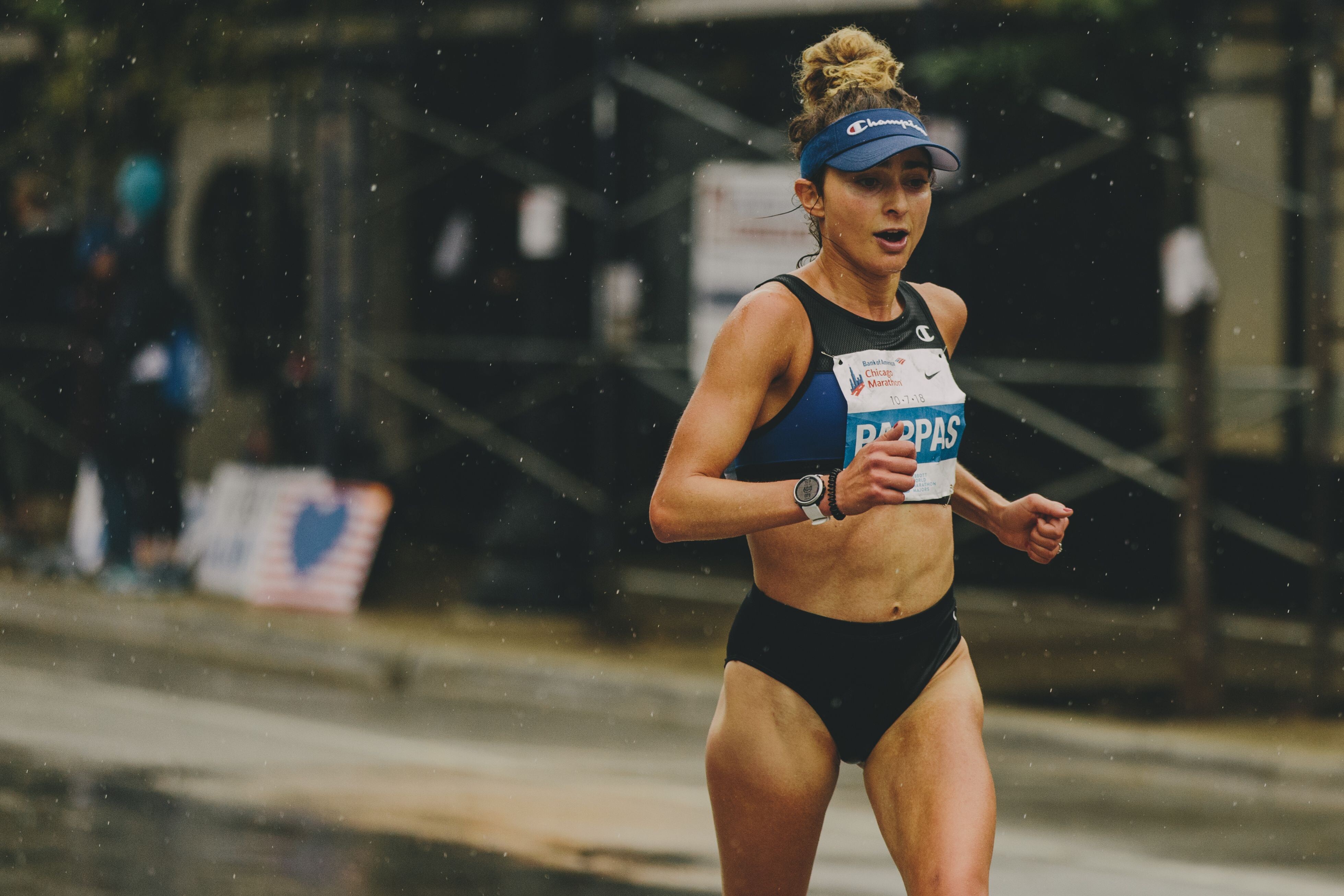
“I feel like there’s a period of time in your life as an athlete where you chase goals that you have for yourself. Maybe you have an Olympic dream. Maybe you want to run a fast mile. Then there’s a time when you can begin to embrace things that the universe brings to you, and not the ones you necessarily had in mind for yourself.”
She’s Still Immersed in Running

Pappas is a legit runner, having run that Olympic 10K at 5:05 mile pace and also clocking a 2:34 marathon in 2020. Although she’s backed away from competitive track and road racing, she’s still immersed in the sport in numerous ways. She ran the 2022 New York City Marathon in a custom bedazzled costume and paced Diplo, aka renowned DJ and music producer Thomas Wesley Pentz, through the 2023 Los Angeles Marathon in March.
Although she’s recently made a foray into trail running, Pappas, who lives near sea level in Alameda, California, admits that she’s less than perfectly prepared going into the Leadville 100. The out-and-back race, which begins at 4 A.M. on August 19 and has a 30-hour cutoff time, is situated between 9,200 and 12,500 feet above sea level.
“It’s a big honor [to be given entry into the race]. And it’s one I take seriously, but also I’m not in peak condition for this race. So I’ve been thinking a lot about it as a kind of mysterious unknown. What might happen? What might be possible? I do believe in myself.”
Pappas’ longest race to date is the Hoka Bandera Endurance Trail 100K, which she did in January. “For that event I entered the day before,” she admits. “So I didn’t have a crew. I didn’t even have a headlamp. I used my cell phone light.” Although she fared pretty well (finishing 12th in 12:08), Pappas learned that ultra events are more about solo adventure, with lots of other people solo-adventuring at the same time. Different from running in the pack on a track, where the whole point is to stay with the group.
And this time around Pappas will have a pacer, Michael Mitchell, and a crew to help her through aid stations and with motivation. “I feel like Michael is the right balance of personality and experience,” she says. “And my best friend since we were two-years-old will be there to crew, so I’ll have lots to look forward to. I figure we’ll make an event of it.”
Mitchell, accomplished On Running trail athlete and TikTok personality, is stoked to be part of Pappas’ race. “I am very excited to help Alexi attempt this incredible feat,” he says. “The Leadville 100 holds a special place in my heart as it was the first ultramarathon I ran.”
Mitchell’s experience in the race in 2021 solidified his love for the ultramarathon atmosphere and community. “I’m a fan of Alexi and all that she represents,” he adds. “Not only do I think she will be able to finish the race, but I know it will inspire her to continue her successes in the running world and beyond.”
Jumping at New Opportunities
Even though Pappas doesn’t feel perfectly prepared for what she’s about to embark on, that’s part of the fun. “I just don’t think this opportunity will happen for me again,” she says. “There are some opportunities that feel like you’ll be able to have them a million times. But this isn’t one of those. This is more like the Olympics. I have friends who said that about the Olympics—that they’d do it next time—and then their sport was taken out of the Olympics.”
Sometimes you have to jump at the chance, even when the thing you’re jumping at is 100 miles in the high alpine of Colorado.
Pappas lost her mother when she was just 4-years-old, and has a friend who has also lost a parent. “My friend told me that our parents would do anything to be in nature for one more day, and he suggested I think about that when [the race] feels long. To have gratitude for simply being alive in the beautiful outdoors, moving about nature, moving from one loving friend and food stop to the next, with plenty of trees in between.”
As soon as Pappas finishes Leadville, she’ll be onto the next thing, but she’s going to enjoy the journey as much as possible.
“I have a new book coming out two days after race day,” she says. “So I’ll come home and not be able to walk and just do the book release as well as I can.”
The book, Bravey, is an updated version of her 2021 New York Times best-selling memoir that’s been adapted especially toward young readers. She talks about unique experiences, like making her Olympic debut as a distance runner, but also common stresses like learning about compassion, forgiveness, and loss.
(08/16/2023) ⚡AMPby Micah Ling
Leadville Trail 100 Run
The legendary “Race Across The Sky” 100-mile run is where it all started back in 1983. This is it. The race where legends are created and limits are tested. One hundred miles of extreme Colorado Rockies terrain — from elevations of 9,200 to 12,600 feet. You will give the mountain respect, and earn respect from all. ...
more...Record smashed at the 24th KATA 10K Time Trial held this morning August 16 in Thika
The 24th edition of the KATA time trial monthly series was held today on 16th of august 2023 at the Kenya Athletics Training Acadamy in Thika Kenya. The 10km saw the time trial record holder Peter Mwaniki improve the course record in a time of 28:39 from the his previous time of 29:00.
In the womens 10km race saw the return of our record holder Lucy Mawia who also has been racing in europe, she won the race in a time of 33:39. she was followed by marathoner Kellen Waithira in a time of 35:49 while Emily Chepkwemoi came in third in a time of 36:21.
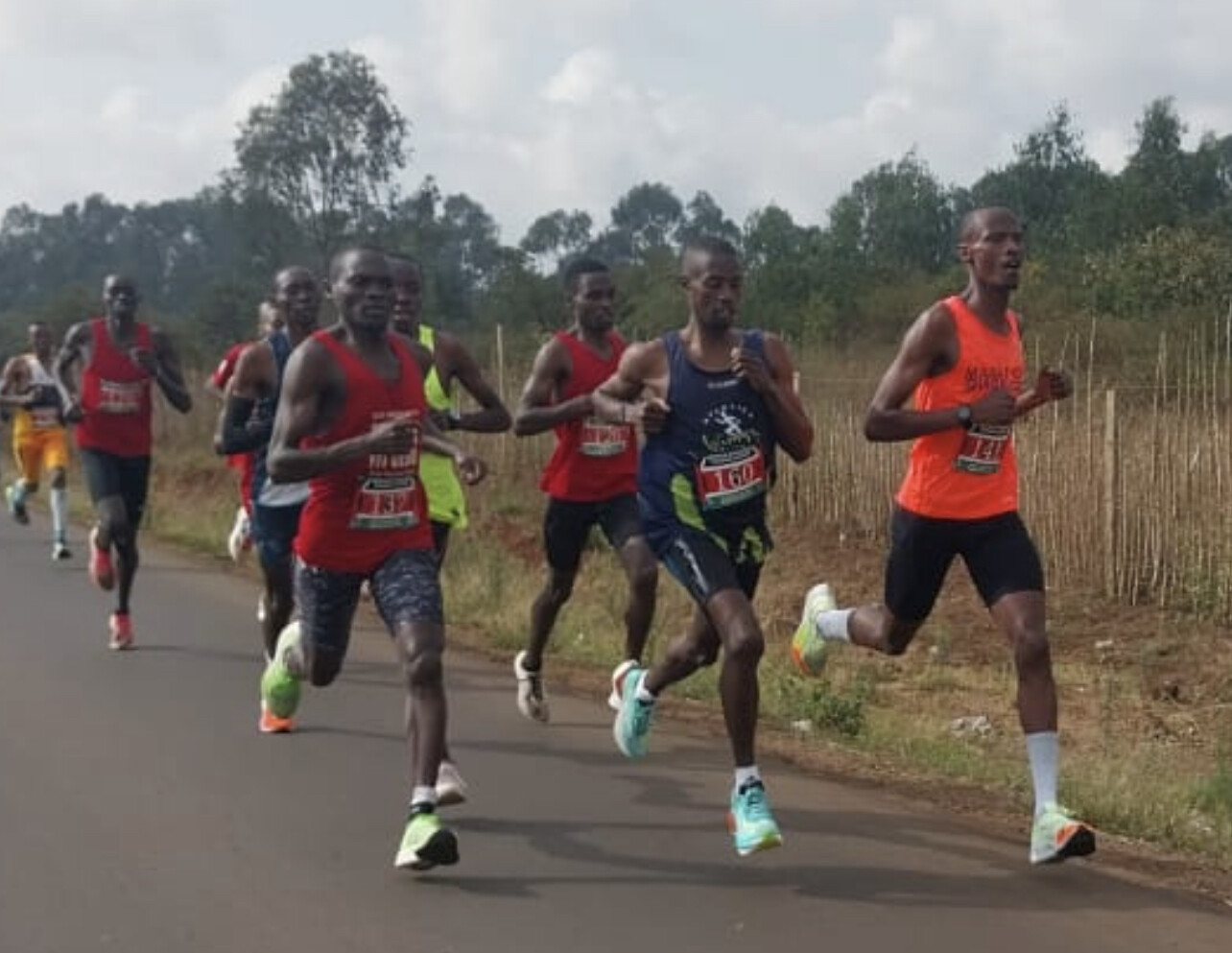
Raphael Karita was the runner up in the mens 10k clocking 30:07 missing his pb by fivd seconds. Evans Kiguru came in third clocking 30:39.
In the 5k race Fredrick Kiprotich came home first with a time of 15:00 while Levis Kuria came in second clocking 15:19 Antony Mukundi sealed the podium in 15:38.
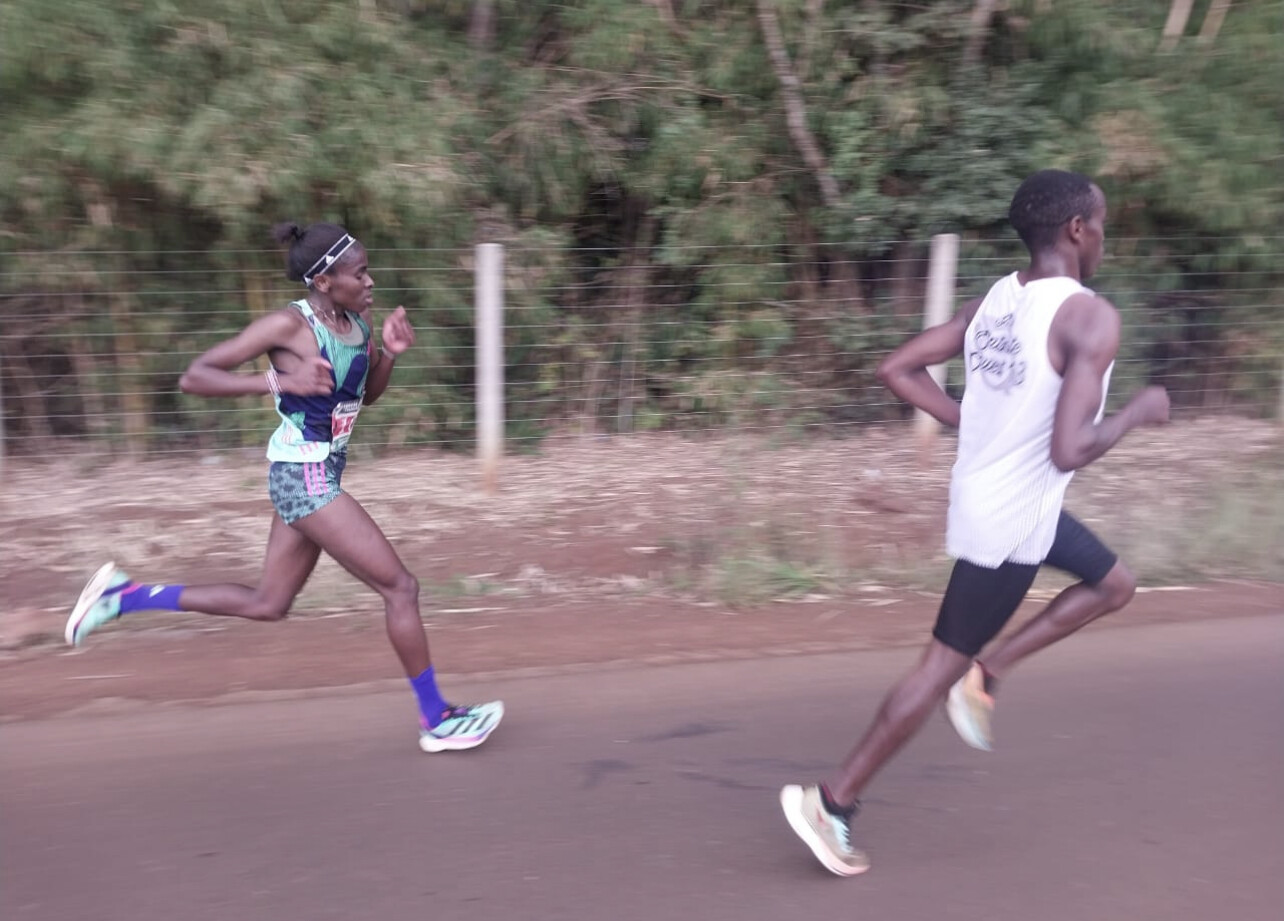
In the womens race Caren Jepkemoi won in a time of 18:58. She was followed by Virginia Wanjiru in 20:10 and Lilian Musenya came home third in 22:33.
In the masters, 42-year-old Paul Ng'ang'a clocked 33:56 while 61-year-old Charles Ndirangu clocked 38:30 in 10km race which is 85% age-graded.
This time trial comes two weeks before KATA's biggest race of the year, the Double 15k (10k+break+5k) which will be held on September 2, 2023 at KATA in Thika. Total of 33K KES of prize money up for grabs plus 20K KES bonus for both men and women winners if they break the world record,
Julius Koskei holds the world record for the Double Road Race 15k set May 10, 2015 in Pacific Grove, CA USA. He clocked 43:11 that day. His 10k leg was 29:11 and his 5k leg was 14:00. The second leg starts one hour and 45 minutes after the start of the 10k leg.
Risper Gesabwa holds the female record clocking 48:45 in Pleasanton California Dec 21, 2014. Her 10k leg was 32:55 followed by a 15:49 5k leg.
The sport of double racing was started in 2010 in Mexico. The first US Double was held in 2012. Over 300 Double Racing events have been held around the world. The lastest one was the Golden Gate Double 8k (5k+break+3k) held August 6, 2023 in San Francisco.
The Road Race Federation (DRRF) located in Mountain View, CA USA is the governing body of the sport. Rules and regulations have to be followed. The DRRF maintain all stats on all events. This will be the sixth Double event held in Kenya. The director and founder of the DRRF is lifetime runner Bob Anderson who is also the owner of KATA.
10K MEN.
1. Peter Mwaniki 28:39 2. Raphael Karita 30:07 3. Evans Kiguru. 30:39 4. John Kuria. 30:48 5. Paul Ng'ang'a. 33:56 6. Bernard Gicheha 37:33 7. Ishmael Mbugua 38:07 8. Charles Ndirangu 38:30
10k WOMEN.
1. Lucy Mwende 33:39 2. Kellen Waithira 35:49 3: Emily Chepkemoi 36:21
5K MEN.
1. Fredrick Kiprotich 15:00 2. Elvis Kuria. 15:19 3. Anthony Mukundi 15:28 4. Brian Ontieri 15:37 5. Kelvin Ragui. 15:44
5K WOMEN.
1. Karen Chepkwemoi 18:58 2. Virginia Wanjiru 20:10 3. Lilian Musengya 23:23 4. Vera Achitsa. 34:51
(08/16/2023) ⚡AMPKATA Time Trial Series
Welcome to the KATA Monthly Time Trial Held at the Kenyan Athletics Training Academy in Thika, Kenya, the KATA Monthly Time Trial is a unique and inclusive event designed to support runners of all levels in achieving their goals and showcasing their fitness. This event offers both 10K and 5K distances on an accurate, certified course, providing participants with...
more...Montreal ultrarunner Mathieu Blanchard to join star-studded UTMB field
Montreal’s Mathieu Blanchard has confirmed he will toe the start line at Ultra Trail du Mont-Blanc in two weeks, joining an elite lineup that organizers of the 171-km race are billing the strongest elite field since the race began 20 years ago.
Blanchard will be vying for his third consecutive podium finish in Chamonix on Sept. 1. He ran last year’s race in 19 hours, 54 minutes and 50 seconds to finish a close second behind Spain’s Kilian Jornet, who ran 19:49:30 for a new course record. In 2021, Blanchard finished third behind French runners François D’haene (20:45:59) and Aurélien Dunand-Pallaz (20:58:31).
In June, Blanchard ran 15:37:02 to finish sixth in his Western States Endurance Run debut. He told Canadian Running after the race that Western States presented a uniquely difficult challenge: “I pushed through, I fought hard, my body was super painful like never before,” he said, adding he was proud to earn the “mythic buckle” awarded to Western States winners.
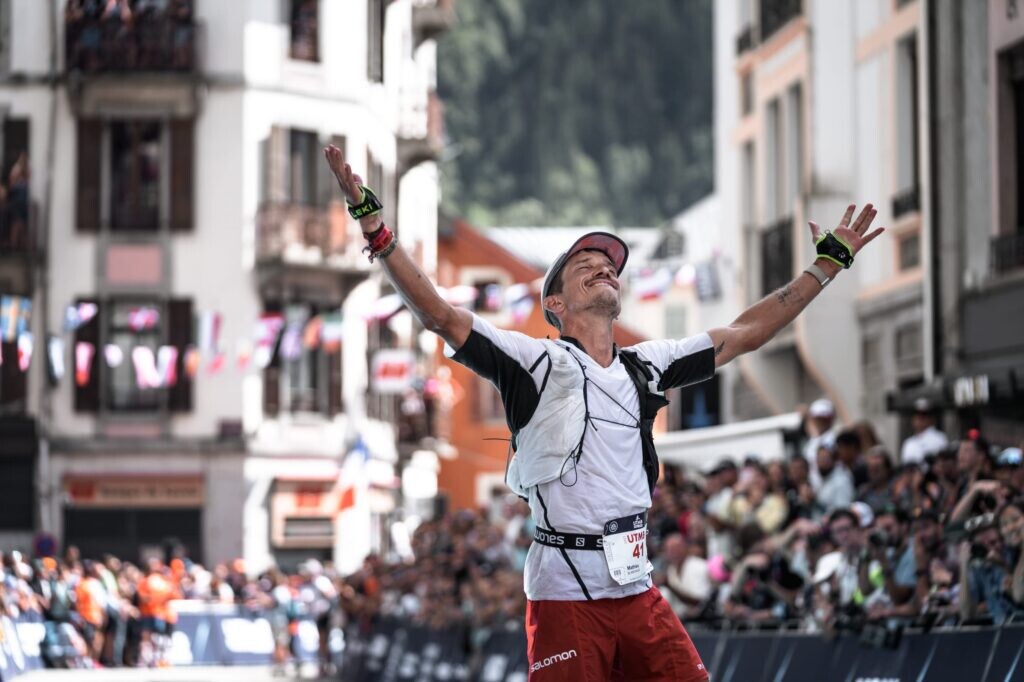
Among the giants of trail running Blanchard will be up against at UTMB is British runner Tom Evans, who ran the fourth-fastest time in Western States history (14:40:22) to win this year’s men’s race, and who finished behind Blanchard at last year’s UTMB to place third (20:34:35).
“I’m incredibly enthusiastic about the idea of taking part in the UTMB this year,” Evans recently told UTMB. “I’m coming into the event in a much better position than last year when I was fresh from a knee operation. The race is so full of history and for the 20th anniversary, I want to be part of the story by doing a Western States 100 Endurance Run and UTMB double. It’s a big challenge and with the strength of the peloton, it won’t be easy, but it’s a contest I’m looking forward to and believe I can achieve.”
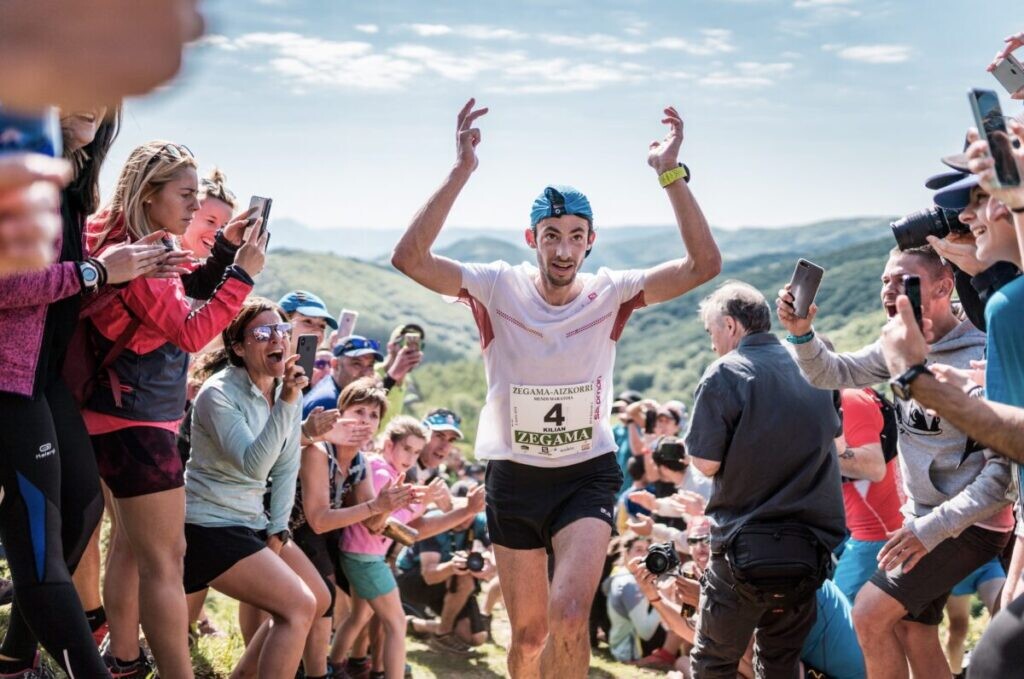
In addition to Jornet, this year’s men’s field will see the return of American Jim Walmsley, who finished fourth in last year’s race (21:12:12) and who has held the Western States course record (14:09:28) since 2019.
Other notable entries in the men’s field include Swiss runner Jonas Russi (winner of the Lavaredo Ultra Trail by UTMB 2023), fellow Swiss runner Jean-Philippe Tschumi (who shared victory at the 100K Trail 100 Andorra by UTMB with the American Ben Dhiman) and Sweden’s Petter Engdahl.
Arguably the most compelling storyline from this year’s UTMB will be American trail running phenom Courtney Dauwalter‘s quest for the triple crown following her resounding victories at Western States (where she ran 15:29:33 to smash the 16:47:19 course record set by Canadian Ellie Greenwood in 2012) and Hardrock 100 (where she set a new course record in 26:14:08). The Golden, Colo.-based runner won UTMB in 2019 (24:34:26) and again in 2021, when she set the current women’s course record (22:30:54).
She stands to face fierce competition from an elite field that includes New Zealand’s Ruth Croft (who finished second at Western States last year), Germany’s Katharina Hartmuth (winner of this year’s Eiger Ultra Trail by UTMB), Italy’s Martina Valmassoi (winner of the 2022 TDS in Chamonix) and Hungary’s Eszter Csillag, who finished fifth at last year’s UTMB.
(08/16/2023) ⚡AMPby Paul Baswick
North Face Ultra Trail du Tour du Mont-Blanc
Mountain race, with numerous passages in high altitude (>2500m), in difficult weather conditions (night, wind, cold, rain or snow), that needs a very good training, adapted equipment and a real capacity of personal autonomy. It is 6:00pm and we are more or less 2300 people sharing the same dream carefully prepared over many months. Despite the incredible difficulty, we feel...
more...I'm hungry to reclaim my title in Budapest – Timothy Cheruiyot
2019 1500m World Champion Timothy Cheruiyot says he is ready to reclaim his title at the World Championships set for Budapest, Hungary from August 19-27.
The 19th edition of the biennial championships will last for eight days.
The 27-year-old will lead a team of former Olympian Abel Kipsang and reigning World junior champion Reynold Cheruiyot.
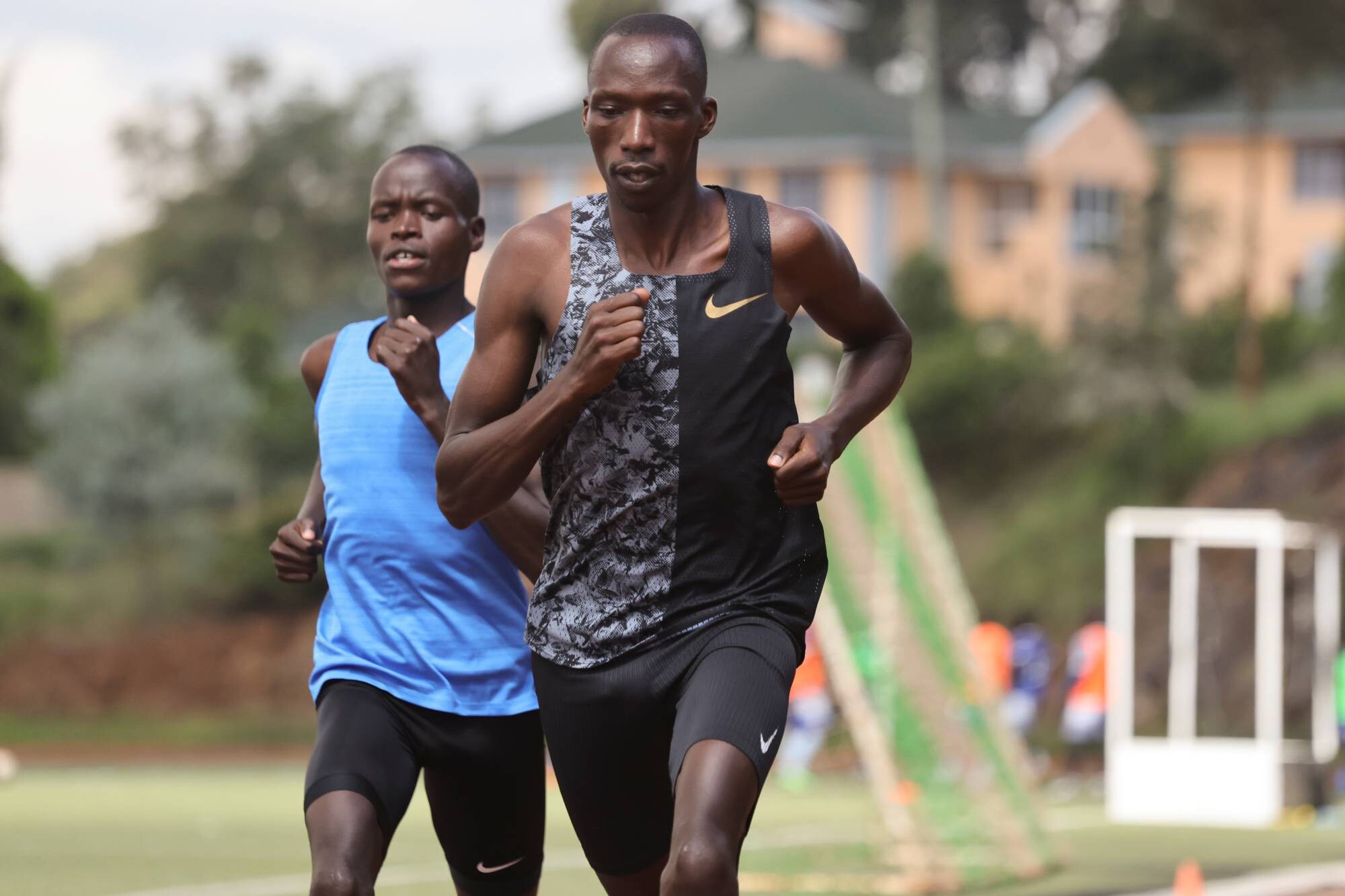
“Together with Reynold and Kipsang we have to plan well how we will execute the final. We know the competition will be very tough but we are ready. Similarly, we are also a threat to our competitors and if our plan goes on well, we will bring medals home,” he said.
The men’s 1500m heat will be the main event of the championships on the first day and will begin at 13:15 pm August 19.
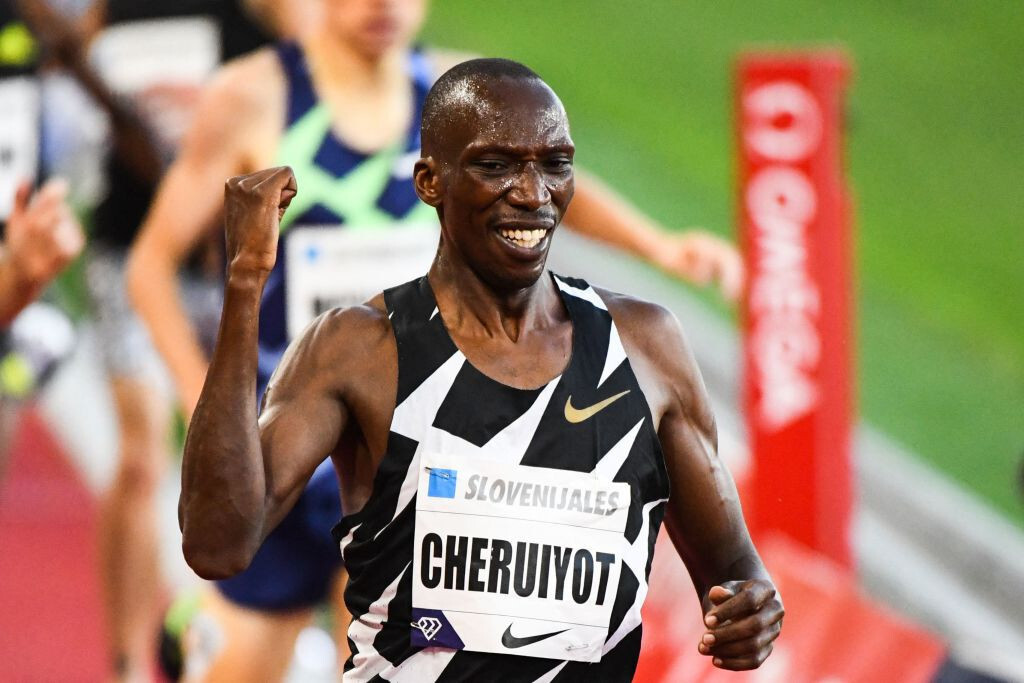
Cheruiyot will be seeking to emulate his Doha heroics that saw him cross the finish line in a time of 3:29:26.
“My preparation for the World Championships has been good. We have executed the training well and I can say that I am now ready.
"We will be competing on the first day of the championships and thus my strategy is to run well in the heats and semifinals and then plan for the finals. I am very hungry to reclaim my title,” Cheruiyot said.
Cheruiyot won a silver medal at the 2017 edition of the competition in London after clocking 3:33:99.
Cheruiyot has won the Diamond League meet four times (2017, 2018, 2019, 2021).
He is the 2020 Tokyo Olympics silver medalist.
(08/16/2023) ⚡AMPby Teddy Mulei
World Athletics Championships Budapest 23
From August 19-27, 2023, Budapest will host the world's third largest sporting event, the World Athletics Championships. It is the largest sporting event in the history of Hungary, attended by athletes from more than 200 countries, whose news will reach more than one billion people. Athletics is the foundation of all sports. It represents strength, speed, dexterity and endurance, the...
more...Kenyan Samwel Mailu and European silver medalist Matea Parlov Kostro to toe the line at Frankfurt Marathon
The 40th Mainova Frankfurt Marathon on October 29 will feature European Silver Medalist Matea Parlov Kostro and rising Kenyan star Samwel Mailu. Taking into account events held in conjunction with the main race, organizers of the Mainova Frankfurt Marathon expect around 25,000 participants on the last Sunday of October. The event holds an Elite Road Race Label, awarded by World Athletics, the sport’s governing organization.
“In Matea Parlov Kostro and Samwel Mailu we’ve succeeded in recruiting two rising stars of the international marathon scene. I’m delighted that we are going to have two popular figures in running on the start line in Frankfurt,” said the race director Jo Schindler. “After our successful comeback from the Corona lockdown a year ago we want to stage an exciting show of running in celebrating the anniversary of the oldest German city race in Frankfurt.

A year ago Mailu made his event debut at the Frankfurt Marathon. He was originally entered as a pacemaker but the now 30-year-old Kenyan showed top form, did not drop out of the race and, despite the role of pacemaker, finished second in 2:07:19. After this strong debut he won The Wein Marathon in April to take the next step in his career. Despite high temperatures, Mailu triumphed in Vienna with 2:05:08, breaking the men’s course record which had stood for nine years.
After his success in the 40th edition of Austria’s most important road race, Mailu now has another big anniversary event in his sights, “I have a good feeling in returning to Frankfurt. After all, I made my marathon debut there and the organization is very good. My aim is to improve my personal best and to run under 2:05 in Frankfurt,” said Mailu. In his hometown of Ulawani, the Kenyan supports younger runners and also takes on the role of event director himself, organizing a 10k road race.

Kostro will be racing in Frankfurt for the first time. The 31-year-old has made great inroads among the European marathon elite in recent years and became a sporting star at home in Croatia after the European Championships in 2022. Her silver medal was the first of any kind won by a Croatian woman in a running event since the European Championships were first staged almost a century ago. She achieved the biggest win of her career so far in winning the Hanover title in April, running 2:25:45 for a course record and personal best.
“I decided to run Frankfurt because I knew that it offers a high-quality field and fast course. I always have a good feeling when I race in Germany – and that’s another reason for deciding on Frankfurt,” explained Matea Parlov Kostro, who is almost certain of an Olympic marathon place for Croatia in Paris next year. “I hope that I further improve my personal best in Frankfurt and am looking forward very much to the race, especially the fantastic finish in the Festhalle.”
(08/15/2023) ⚡AMPby Christopher Kelsall
Mainova Frankfurt Marathon
Frankfurt is an unexpectedly traditional and charming city, with half-timbered buildings huddled in its quaint medieval Altstadt (old city), cosy apple wine taverns serving hearty regional food, village-like neighbourhoods filled with outdoor cafes, boutiques and street art, and beautiful parks, gardens and riverside paths. The city's cache of museums is second in Germany only to Berlin’s, and its nightlife...
more...Sore, tight calf muscles? Try these dynamic stretches
Anyone who has ever experienced tight, crampy calf muscles knows how extraordinarily painful they can be. While a wide range of issues (from electrolyte imbalances to problems with form) can cause the calf muscles to tighten up, there are a few tried-and-tested ways that ease suffering quickly and effectively. These moves work for anyone–whether you’re in the throes of calf pain or you’re inspired to take preventative action.
Not only does having loose, flexible calves feel better, but it fends off injury, reducing strain on tendons and muscles. It also helps you pick up the pace, allowing for a fuller range of motion and leading to better running mechanics and enhanced performance.

Try to move through these dynamic stretches in a controlled manner without any sudden or jerky movements, gradually increasing the intensity as your muscles warm up.
Calf raises

This one can be done on flat ground or on the edge of a stair or stool to deepen the stretch. Use a wall for support if needed. Stand with your feet hip-width apart and slowly rise onto your toes, lifting your heels as high as possible. Lower your heels back down to the ground, and repeat this movement 10 to 15 times. Use these as a warmup, or any time you want to give your calf muscles a healthy boost of blood flow and enhanced flexibility.
Seated calf stretch
Sit on the floor with your legs extended in front of you, and loop a towel or resistance band around the ball of one foot. Gently pull the towel or band towards you, flexing your ankle. You should feel a stretch along the calf muscle–hold for 20 to 30 seconds, then switch legs.
Downward dog calf stretch
Start in a push-up position (plank) with your hands directly under your shoulders, and push your hips up and back, forming an inverted V-shape with your body. Keep your knees slightly bent and press your heels toward the ground. You should feel the stretch in your calf muscles and hamstrings. Hold for 20 to 30 seconds, drop knees to the floor and relax before repeating.
Calf raises with stretch
Stand with your feet hip-width apart, near a wall or stable surface for support. Rise up onto your toes, lifting your heels as high as you can. Instead of lowering your heels immediately, hold this position for a few seconds or until you really feel the stretch in your calf muscles. Lower your heels back down to the ground, and repeat this movement 10 to 15 times.
Wall calf stretch
Stand facing a wall and take a step back with one leg. Keep your heels on the ground and your toes pointing toward the wall, and lean your hips forward slightly (bending your front knee slightly) to intensify the stretch. You should feel the stretch in the calf of the back leg. Hold for 20 to 30 seconds, then switch legs.
(08/15/2023) ⚡AMPby Keeley Milne
National top athletes will also participate in the BMW BERLIN-MARATHON 2023
This year's BMW BERLIN-MARATHON will take place on September 24 - the sports event is one of the most prestigious marathons in the world. SCC EVENTS, the organizer of the event, is expecting more than 45,000 runners from about 150 nations. In addition to the huge field of amateur athletes, the top international as well as national athletes will be competing.
As already announced in the press release sent out by SCC EVENTS on July 13, 2023, the world record holder Eliud Kipchoge (KEN) and the winner of the TCS London Marathon 2022, Amos Kipruto (KEN), will be at the start in the German capital. With Tigst Assefa (ETH) as course record holder and winner of the BMW BERLIN-MARATHON 2022 and Sheila Chepkirui, winner of the GENERALI BERLIN HALF MARATHON 2022, the women's field is just as elite.
The German record holder will be competing
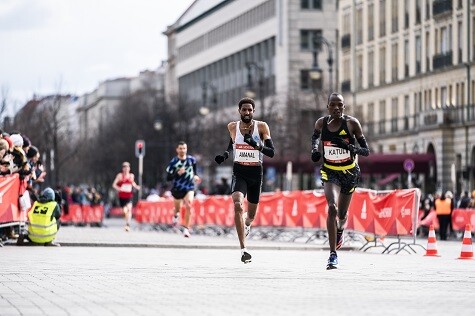
From the ranks of the German starters, Amanal Petros should be the first to be mentioned. The winner of this year's Hannover Marathon holds the German records for both the marathon and half-marathon distances. The MARATHON TEAM BERLIN runner is certainly hoping to achieve a German best time at his race on September 24. At the 2022 European Athletics Championships, Petros won the silver medal in the marathon team classification.
Top German men in Berlin

Amanal Petros stood beside teammates Simon Boch, Konstantin Wedel as well as Hendrik Pfeiffer on the podium in the aforementioned European Championship silver-medal team. All four will be competing at the BMW BERLIN-MARATHON. Simon Boch (LG Telis Finanz Regensburg) was German runner-up in the half marathon in the spring and secured the German team title for his team with this performance. Hendrik Pfeiffer, who competes for TK Hannover, won the Hannover Marathon last year. And just like his competition, the 30-year-old is hoping to use the race in Berlin to qualify for the Olympic Games in Paris.
European marathon champions at the start
The German women's marathon team was even more successful than the men at the 2022 European Athletics Championships. With the line-up of Miriam Dattke, Domenika Mayer (both LG Telis Finanz Regensburg), Deborah and Rabea Schöneborn (both MARATHON TEAM BERLIN) and Kristina Hendel (LG Braunschweig), they won the gold medal. The mentioned European champions will run at the BMW BERLIN-MARATHON. For the women, too, the race in Berlin is considered to be an important milestone to make it to the 2024 Olympic Games.
Partnerships with great added value
For the BMW BERLIN-MARATHON 2023, SCC EVENTS announced NORQAIN as its new timing partner. NORQAIN is familiar as a high-quality, family-owned watch manufacturer. The company is based in Nidau, the heart of the Swiss chronograph industry. Christian Jost, Managing Director of SCC EVENTS, is delighted about the commitment of the traditional Swiss watch manufacturer: "Reliability is one of our core values in the mission statement of SCC EVENTS. With NORQAIN, the BMW BERLIN-MARATHON gains a partner whose recipe for success is based on reliability and quality. This partnership has a great added value for us as organiser and for all the participants, who always expect a spirit of innovation and a reliably high standard from the BMW BERLIN-MARATHON."
"As a brand deeply rooted in the world of adventure and exploration, we are thrilled to embark on this multi-year partnership with the BMW BERLIN-MARATHON", said Ben Küffer, Founder & CEO of NORQAIN. "We are honoured to be the Official Timekeeper of the BMW BERLIN-MARATHON, an iconic event that embodies the values of perseverance, determination, and the pursuit of excellence, which are at the core of NORQAIN's DNA.”
The cashless online payment system PayPal has also been one of the partners of the BMW BERLIN-MARATHON for some time. "Anyone competing at the BMW BERLIN-MARATHON is expecting a high-quality sports experience. A fast, simple and secure payment system makes it easier for runners be able to focus on the essential aspects of the event," says Christian Jost.
"We are very happy about the renewed cooperation with SCC EVENTS. Whether at registration, beverage stands or after the race: For easy and convenient payments during the event, runners can pay with the PayPal app using a QR code Athletes can leave cash or cards at home," explains Jörg Kablitz, Managing Director of PayPal Germany, Austria and Switzerland.
Options to secure race entries possibilities and media accreditation
Although registration to participate in the race entry lottery for the 49th BMW BERLIN-MARATHON is now closed, there are still opportunities to secure a race entry for the BMW BERLIN-MARATHON 2023: through our charity partners and our official travel agents. Registration is still open for inline skaters. To apply for accreditation for the BMW BERLIN-MARATHON 2023, you must send a request via the press portal on our website, which is now possible.
(08/15/2023) ⚡AMPBMW Berlin Marathon
The story of the BERLIN-MARATHON is a story of the development of road running. When the first BERLIN-MARATHON was started on 13th October 1974 on a minor road next to the stadium of the organisers‘ club SC Charlottenburg Berlin 286 athletes had entered. The first winners were runners from Berlin: Günter Hallas (2:44:53), who still runs the BERLIN-MARATHON today, and...
more...Norwegian kid runs ridiculously fast 5K
A 15-minute 5K is considered an exceptional mark in men’s distance running that many sub-elites dream of breaking (and that would include 15 minutes and change). On Aug. 10 at the Recordløpet 5K in Drammen, Norway, 13-year-old Per August Halle Haugen did just that, stopping the clock in 15 minutes and 52 seconds to place second overall.
The achievement stands as a remarkable step forward for Halle Haugen, who, in line with expectations, seems to be flourishing as he gets older, trimming 21 seconds off his previous 5K personal best of 16:13 from 2022.
Last year, Halle Haugen ran the second-fastest time ever for a 12-year-old male for 10K, clocking a mind-blowing best of 33:18 (3:20/km).
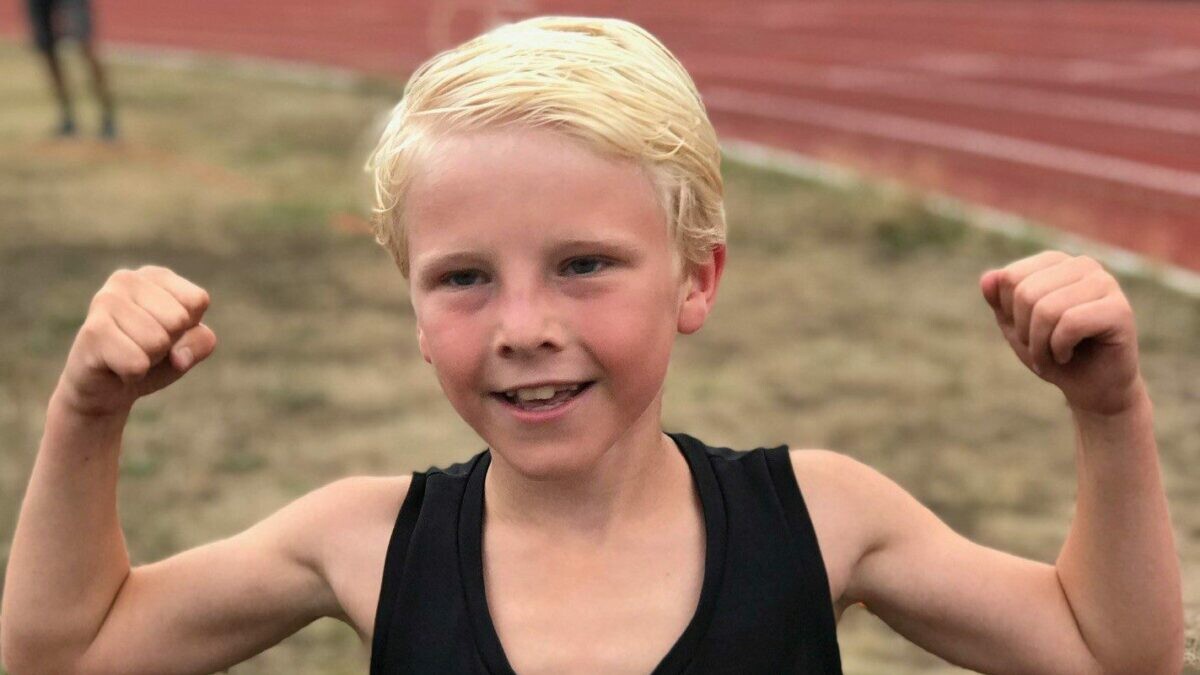
According to Norges Friidrettsforbund (Norway’s governing body for athletics), there are no age-specific rewards or competitions for children under the age of 13, so Halle Haugen participates in local road races.
Halle Haugen is endowed with a strong genetic inclination for distance running: his grandfather, Per Halle Haugen, represented Norway in the sport 40 years ago, achieving a time of 13 minutes and 27 seconds in the 5,000m. His mother and coach, Gunhild Halle Haugen, boasts personal bests of 15:09 for 5,000m and 31:47 for 10,000m. His older brother Simen, born in 1999, ran a time of 13 minutes, 37 seconds for 5,000m last year.
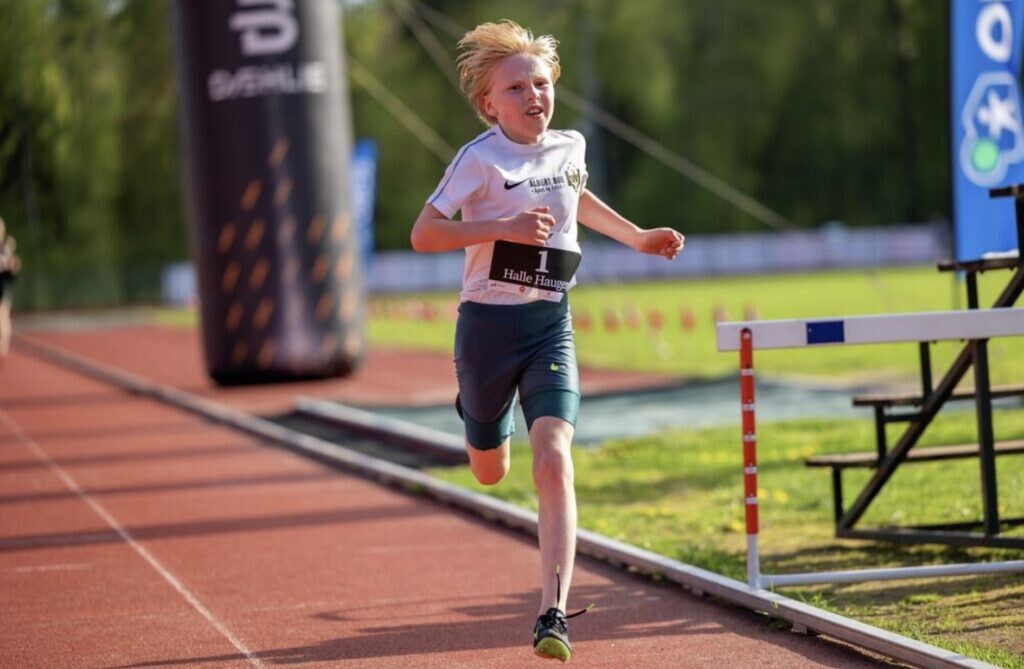
Halle Haugen’s time is still 20 seconds off the U13 age-group 5K world record; nevertheless, he undoubtedly holds a promising future, sharing a trajectory similar to the achievements of his compatriot Jakob Ingebrigtsen, who is widely regarded as the most prolific Norwegian distance runner in history. Ingebrigtsen began competing on the track at age 14 and recorded a 2,000m time of 5:52.50. Halle Haugen’s best over the same distance is 6:02.
(08/15/2023) ⚡AMPby Marley Dickinson
World Athletics Championships Budapest 23 preview: marathon
In Oregon last year, Tamirat Tola ran his way into the World Championships history books with the fastest ever winning time in the men’s marathon: 2:05:36. Thirteen months on, the 31-year-old Ethiopian has the chance to add his name to the select band of marathon men to manage a successful title defence.
Only three have achieved the feat thus far: Spain’s Abel Anton (1997, 1999), Jaouad Gharib of Morocco (2003, 2005) and the Kenyan whose championship record Tola broke in Oregon, Abel Kirui (2009, 2011).
Tola was a class apart in 2022, the 2016 Olympic 10,000m bronze medallist showing his track pedigree as he blitzed the final 10km circuit in 28:31 to finish a decisive 1:08 clear of compatriot Mosinet Gerenew, also the silver medallist in Doha in 2019.
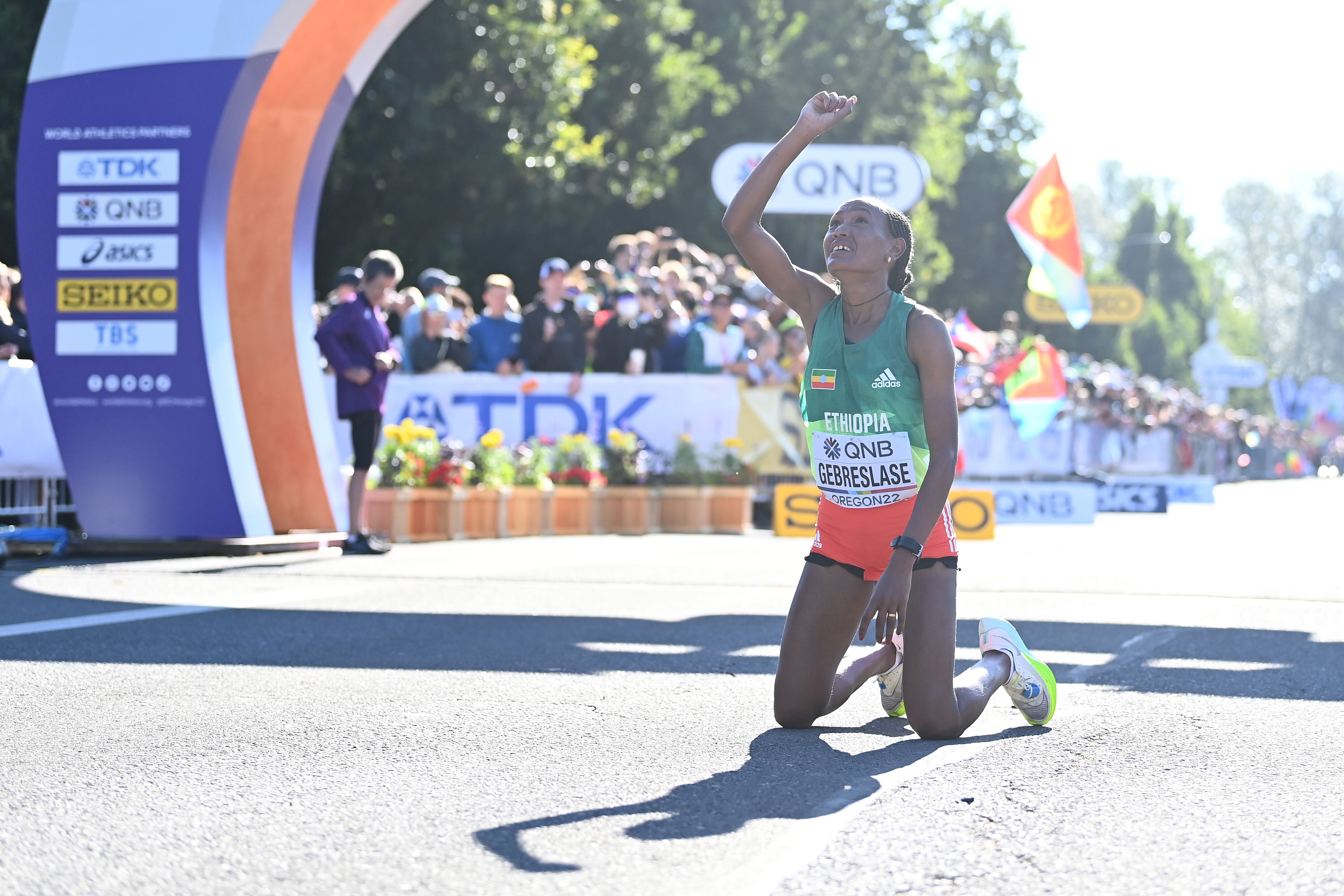
Tola, who was the marathon runner-up at the 2017 World Championships, has maintained his form this year, finishing third at the London Marathon in April in 2:04:59, behind Kelvin Kuptum (2:01:25) and Geoffrey Kamworor (2:04:23).
Neither of those two Kenyans will be on the start line in Budapest, but the defending champion will face two rivals from Kenya who have run faster than him in 2023. Timothy Kiplagat stands third on the world list with the 2:03:50 he clocked as runner-up to Belgium’s Bashir Abdi in Rotterdam in April. Abdi, the bronze medallist in Eugene, will be absent in Budapest but Kiplagat will be joined on the Kenyan team by Joshua Belet, runner-up at the Hamburg Marathon in April in 2:04:33. The third Kenyan in the field is Titus Kipruto, fourth at this year’s Tokyo Marathon in 2:05:32, who set a PB of 2:04:54 as runner-up in Amsterdam last year.
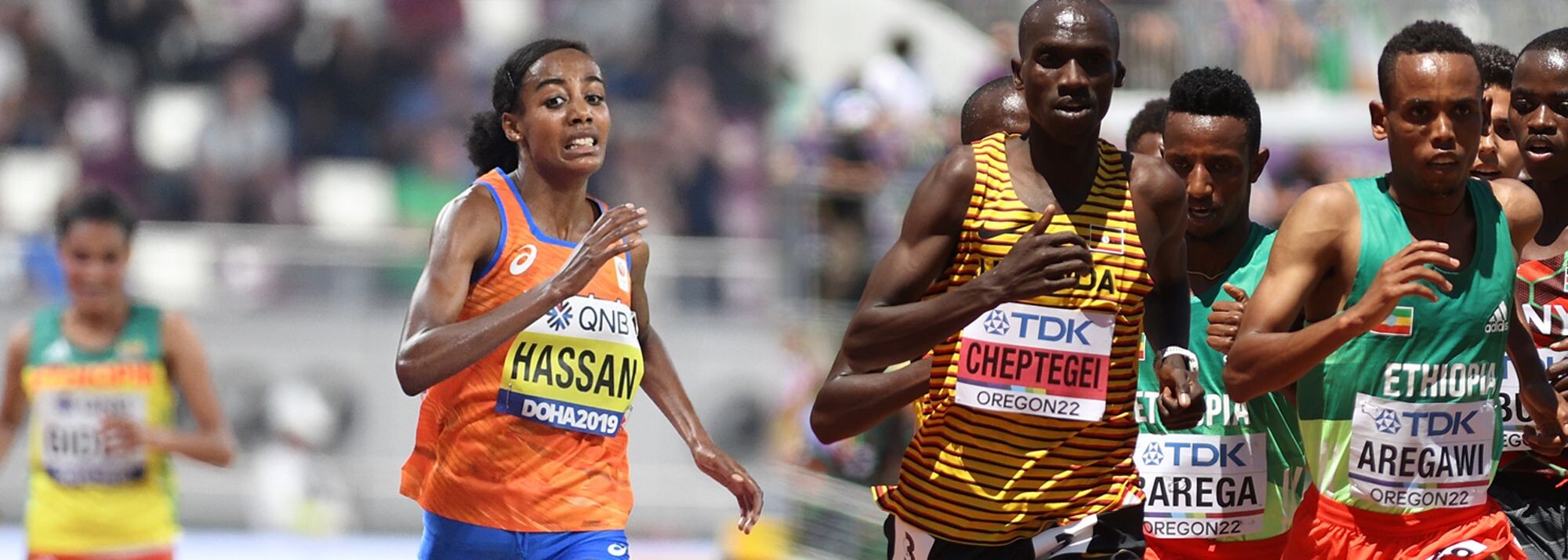
Ethiopians have finished first and second at the last two World Championships and Tola will have notable support in Budapest. Milkesa Mengesha, the 2019 world U20 cross-country champion, won the Daegu Marathon in April and clocked a best of 2:05:29 in Valencia last December. Chalu Deso won in Tokyo in March in 2:05:22. Leul Gebresilasie finished second and fourth at the last two London Marathons and has a best of 2:05:12. Tsegaye Getachew placed third in Tokyo in April in 2:05:25.
Not that the race looks like being an exclusive battle between the two established East African giants of distance running.
Abdi Nageeye of the Netherlands was runner-up to Eliud Kipchoge in the 2021 Olympic marathon in Sapporo. The 34-year-old finished third in New York last November and in Rotterdam in April.
Tanzania’s Alphonce Felix Simbu is a seasoned major championship marathon campaigner. The 31-year-old earned world bronze in London in 2017 and Commonwealth silver in Birmingham last year. He also finished fifth and seventh in the last two Olympic marathons.
Commonwealth champion Victor Kaplangat is joined on the Ugandan team by Stephen Kissa, who set a national record of 2:04:48 in Hamburg last year. Morocco’s Mohamed Reda El Aarby placed second in New York in 2021 and fourth last year.
There are a host of other sub-2:06 performers in the field: Israel’s European bronze medallist Gashu Ayale, Kaan Kigen Ozbilen of Turkey, Eritreans Goitom Kifle and Oqbe Kibrom, plus the Japanese duo Kenya Sonota and Ichitaka Yamashita.
Ayale’s Israeli teammate Marum Terifi is the second-highest placed runner from last year’s race on the entry list. He finished 11th in Oregon and then took silver at the European Championships in Munich.
Veteran Spaniard Ayam Lamdassem was sixth in Munich but fifth at global level in the Olympic marathon in 2021. Another 41-year-old on the start line will be the remarkable Ser-od Bat-Ochir. The Mongolian is unlikely to be troubling the medal contenders but will be contesting his 11th successive World Championships marathon – his 16th successive global championship marathon, having also contested the past five Olympic marathons.
Women's marathon
In Oregon last year Gotytom Gebreslase won in the fastest ever time in a women’s championship marathon, 2:18:11, but the Ethiopian will have to beat two of the six fastest women of all time if she is to successfully defend her title in Budapest.
The 2011 world U18 3000m champion was unable to keep up with one of them on the rolling hills of Boston in April, finishing 10th in her only marathon of the year in 2:24:34 – eight places and 2:44 behind compatriot Amane Beriso Shankule, who was runner-up to two-time world champion Hellen Obiri.
At 31, the formerly injury-plagued Beriso produced a stunning performance in Valencia in December last year, upsetting world 10,000m champion Letesenbet Gidey’s world record attempt with a victory in 2:14:58, putting her third on the world all-time list behind Kenyans Brigid Kosgei (2:14:04) and Ruth Chepngetich (2:14:18).
Gebreslase will also have to contend with Rosemary Wanjiru, who moved above Gidey to sixth on the world all-time list with a winning time of 2:16:28 in Tokyo in March. The 28-year-old Kenyan, fourth in the world 10,000m final in Doha in 2019, clocked one of the fastest marathon debuts in history, 2:18:00, as runner-up to Ethiopia’s Tigist Assefa in Berlin last year.
In addition to Gebreslase, five other finishers from the top 10 in Oregon last year will be on the start line: bronze medallist Lonah Salpeter from Israel and fourth-placed Nazret Weldu of Eritrea, plus Keira D’Amato of the US (eighth), Japan’s Mizuki Matsuda (ninth) and Mexico’s Citiali Moscote (10th).
The loaded field also includes the second-fastest woman of 2023, Ethiopia’s Tsehay Gemechu, the runner-up to Wanjiru in Tokyo in 2:16:56, who finished fourth in the 5000m in Doha in 2019, and Bahrain’s 2017 marathon world champion Rose Chelimo.
The Ethiopian challenge will be strengthened by world 10km record-holder Yalemzerf Yehualaw, who ran 2:17:23 on her marathon debut last year then won in London later in 2022 before finishing fifth at this year’s edition of the race. Wanjiru, meanwhile, is joined on the Kenyan team by 2014 world half marathon bronze medallist Selly Kaptich, who was third in Berlin in 2019, and Shyline Jepkorir, a winner in Enschede in April in 2:22:45.
At 36, the veteran Kaptich is four years younger than Australia’s two-time Commonwealth medallist Lisa Weightman, who showed her enduring class with 2:23:15 for fourth place in Osaka in February.
Another notable entrant is Poland’s Aleksandra Lisowska, who broke away in the final 2km to win the European title in Munich 12 months ago.
Bat-Ochir made his world debut in Paris back in 2003 and boasts a highest placing of 19th in Daegu in 2011. He finished 26th in Oregon last year, his second-best global performance. His appearance in Budapest will match Portuguese race walker Joao Viera’s tally of 11 – two shy of Spanish race walker Jesus Angel Garcia’s record.
(08/14/2023) ⚡AMPby World Athletics
World Athletics Championships Budapest 23
From August 19-27, 2023, Budapest will host the world's third largest sporting event, the World Athletics Championships. It is the largest sporting event in the history of Hungary, attended by athletes from more than 200 countries, whose news will reach more than one billion people. Athletics is the foundation of all sports. It represents strength, speed, dexterity and endurance, the...
more...Tasmanian 69-year-old, Michael Booth runs 100th marathon
To run just one marathon is a massive achievement for most people — Launceston's Michael Booth has just finished his 100th.
The 69-year-old hit the milestone when he crossed the finish line at the Sunshine Coast Marathon in Queensland on Sunday, finishing in a time of just under four and a half hours.
"It's quite momentous," he said.
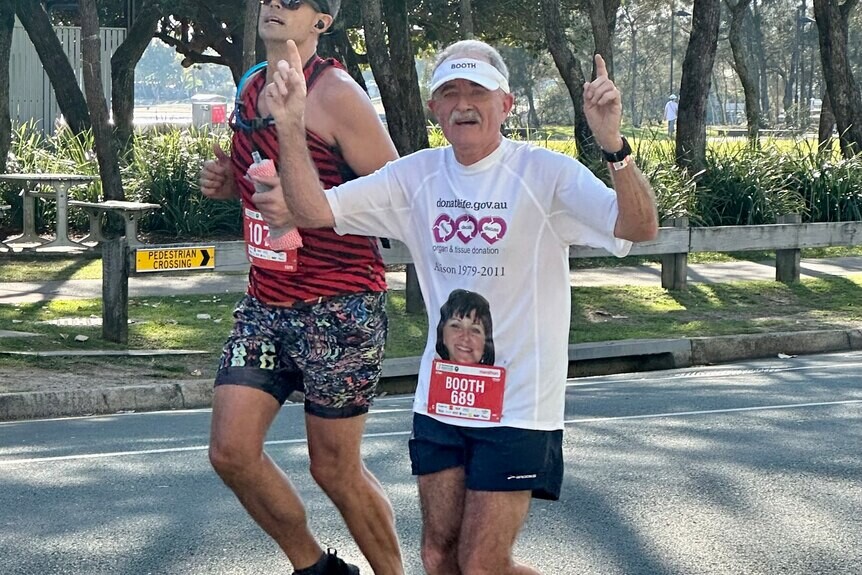
"I never started off running marathons thinking that I'd reach a certain number. I just did it because I enjoyed running.
"As I got into the 80s I could see a finish line up over the horizon, but it still wasn't necessarily a goal. I just kept running because I enjoyed it.
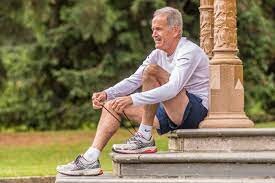
"As I got closer into the 90s, I thought, 'Gee I'm going to do 100.'"
It was a massive effort, but a low-key celebration for the Riverside grandfather.
"Chocolate milkshake and a nice lunch … I don't drink alcohol so I don't go down that path," he said.
His son Steven and wife Christine were on the course to cheer him on around the multi-lap course on the Sunshine Coast.
"They were having breakfast at a cafe along the track and cheered me on each time I passed," Mr Booth said.
Mr Booth only took up running in 2002 when he was 48, but was quickly hooked. It all started when the retired accountant went for a run with his brother.
"Running up and down Cormiston Road in Riverside with my brother 20 years ago, I wasn't even sure I was going to continue running," he said.
"It felt good and I just kept going."
It is now a part of his life and he has got has some significant running achievements under his belt.
Mr Booth has run the 42-kilometer marathon distance in every Australian state and territory, and also on each continent.
He ran his first marathon in Hobart in 2003 and has since taken his running exploits around the world.
Among the 100 races he has completed are the Boston, Athens, Rio de Janeiro and Great Wall of China marathons.
In 2014 he even took on a marathon in Antarctica. He believes he is the first Tasmanian to do so.
He has now competed in 10 out of 11 Sunshine Coast marathons, and 20 Hobart Cadbury marathons. And the iconic Overland Track in Tasmania is among his favorite runs.
He has taken on many of Tasmania's most well-known running challenges: the Three Peaks, Freycinet Challenge, Triple Top and Point to Pinnacle.
Earlier this year he took his total running distance to 50,000 kilometers.
No plan to stop just yet
Mr Booth also uses marathons to promote organ donation and Donate Life.
He often runs in a shirt featuring an image of his daughter Alison, who died in 2011.
"Alison back in 2011, she was 32, she suffered a brain bleed and our son-in-law Mark wanted to donate her organs and we fully endorsed that," he said.
"Four or five recipients were able to lead lives of better quality due to Alison's donation.
"Even though we lost a dear daughter there was a positive that we've enriched other people's lives. There's no point in burying organs that are in perfect working order."
Despite reaching the impressive milestone, which has been decades in the making, he has no plans to slow down.
"I propose to continue running for the next few years," he said.
"[I'll] see how I go … I think I've got to be more realistic and lower my finishing-time expectations as I'm getting older."
He runs four times a week and has his sights set on the Hobart Cadbury Marathon in January.
"I'll just bow out at some point when my body says, 'Hey Michael, I think we've had enough.'"
Before that, he is aiming to run a marathon with both his son and grandson.
He hopes his running exploits inspire others.
(08/14/2023) ⚡AMPby Damian McIntyre
Coach Kirwa believes Kipkirui will step into Kandie's shoes
National team head coach Julius Kirwa has exuded confidence in Ishmael Kipkurui's potential to effectively step into the shoes of Kibiwott Kandie at the upcoming 2023 World Athletics Championships.
Kandie, who had punched a ticket to fly the country's flag in the 5000m, withdrew from the team owing to a nagging hamstring injury.
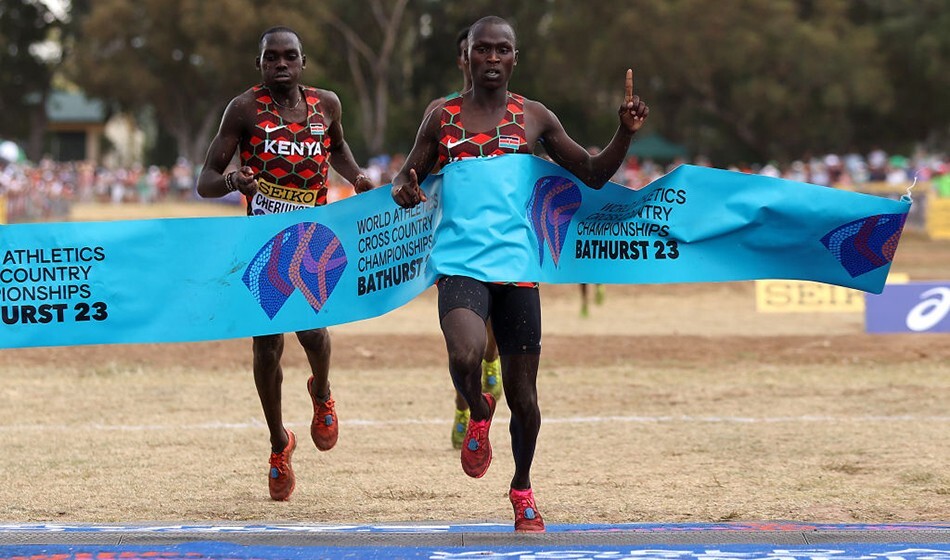
"We made the changes last week. Ishmael is in good form and he has proved himself as a junior athlete. I'm confident he'll live up to expectations," Kirwa said in an exclusive interview on Thursday.
The Commonwealth Games 10,000 metres bronze medallist will miss the World Championships for the second time in a row after staying out of Oregon 22.
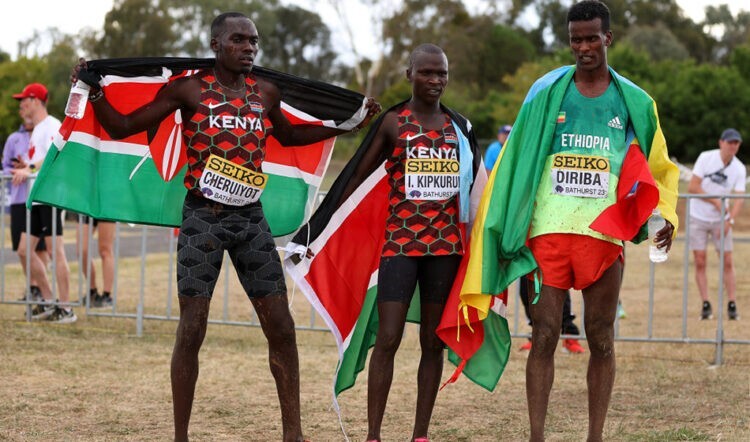
Last year, the World Half Marathon silver medallist, almost sealed a slot on the Kenyan plane to Oregon after clinching the national trials but failed to crack the qualifying time.
He last held forte for the nation at the 44th World Athletics Cross Country Championships in Bathurst, Australia where he finished fifth. His most recent race was in Germany in April during the Adizero Road to Records 10km race, where he finished second in 26:53.
He secured a berth in the men’s 10,000m team despite finishing fourth during the national trials.
“I was in camp for a week when the team reported and training was going on well. I tried to persevere for some days while training but there was no change hence the break to avoid worsening it," said Kandie.
While regretting the unfortunate turn of events, Kandie vowed to bounce back stronger at the World Half Marathon Championships that will be held in Riga, Latvia on October 1.
“I know a lot of people are disappointed I'll not be traveling with the rest of the team to Budapest, especially after I experienced a similar fate last year when I also failed to make it to Oregon," Kandie stated.
Meanwhile, Kirwa has said he is satisfied with the amount of effort expended in practice even as the team continues to put the final touches ahead of their departure to the Hungarian capital.
"We have trained well enough and all the athletes are in good shape. We are expecting a good performance in Budapest later in the month," Kirwa said.
The seasoned gaffer also tipped Kenyan sprint sensation Ferdinand Omanyala to steer the country to unprecedented glory.
"He is in his peak this season and I have no doubt in my mind he'll be pulling off a major surprise at the World Championships," Kirwa said.
(08/14/2023) ⚡AMPby Tony Mballa
World Athletics Championships Budapest 23
From August 19-27, 2023, Budapest will host the world's third largest sporting event, the World Athletics Championships. It is the largest sporting event in the history of Hungary, attended by athletes from more than 200 countries, whose news will reach more than one billion people. Athletics is the foundation of all sports. It represents strength, speed, dexterity and endurance, the...
more...Three exercises to ease back pain in runners
A sore back can be a discouraging thing to face as a runner–while you’d love to get out and log some miles, recurrent back pain can be extremely limiting. The jury is out on what, exactly, gives runners achy backs, and it’s probably unique to each person. Maybe you had back issues before you began running, you’re struggling with running form, or you are facing some muscle imbalances.
A study published in Scientific American determined that runners with sore backs often had weaker deep core muscles. Whatever the cause of your pain, there are a few exercises you can do to become an all-around stronger, pain–free runner with a health, mobile spine.

Glute Bridges
Glute bridges engage the glutes and hamstrings, which play a significant role in maintaining proper hip alignment (helping with both structural tolerance and great form) during running.

Lie on your back with your knees bent and feet flat on the floor. Lift your hips off the ground, squeezing your glutes at the top. Lower down and repeat for 12–15 reps, pausing at the top of the pose and holding your glute bridge for longer once you gain strength.
Planks
We all know and love planks (or we should!). Planks target the core muscles and helping to improve stability and support for the spine.
Start by holding a plank position on your forearms and toes, ensuring your body forms a straight line from head to heels. Hold for 20-30 seconds, gradually increasing the duration as you become more comfortable.
Cat-Cow Stretches
This yoga-inspired stretch helps to align the spine and mobilize it, while giving the back muscles a great stretch.
Start on your hands and knees and arch your back like a cat (rounding the spine), then drop your belly towards the floor while lifting your head and tailbone (cow pose). Repeat this movement for 8–10 rounds, pausing at each end of the stretch to take a few breaths or add some gentle side-to-side movement.
Even if you’re on board with adding these exercises to your pre or post-run routine, it is always a great idea to check in with a medical practitioner when you’re experiencing back pain, and important to do so if pain worsens or isn’t alleviated after a few days rest.
(08/14/2023) ⚡AMPby Keeley Milne
What Runners Should Know About Hydrating With Coconut Water
This tropical drink can provide a perfect refresher on a hot day, while offering up key nutrients for runners.
Figuring out your hydration needs is essential as a runner. But let’s face it, water probably isn’t what you’re craving to quench your thirst every day. One drink that might add more excitement to your hydration plan: coconut water.

Coconut water is the liquid that’s found in young coconuts, and it contains naturally occurring minerals, says Yasi Ansari, MS, RDN, CSSD, certified specialist in sports dietetics and national media spokesperson for the Academy of Nutrition and Dietetics.
Coconut water is different from coconut milk, which is pressed from ground coconut flesh and then mixed with either coconut water or freshwater, says Kelly Jones, MS, RD, CSSD, sports dietitian based in Newtown, Pennsylvania. Compared to coconut milk (the kind you’d find in your grocer’s fridge, not the canned condensed variety), which contains anywhere from 45 to 70 calories per cup, and roughly 4.5 grams of fat, coconut water averages around 45 calories per cup and typically contains no fat.
While there’s plenty of beverage options for runners to choose from today, knowing what will optimize your recovery and support your health is important. Here’s what to keep in mind about coconut water in particular.
The Benefits of Coconut Water
1. Offers Electrolytes
“Coconut water is most often praised for being a good source of potassium, with [about] 400 milligrams per cup, which is around the same amount as a medium banana,” says Jones. Consuming potassium may protect your heart, as it’s known to help lower blood pressure. “Potassium is also an important mineral to support hydration and healthy muscle function, though not without adequate sodium,” Jones adds.
Potassium isn’t the only electrolyte you’ll get from coconut water. “Coconut water also provides smaller amounts of the minerals magnesium, calcium, and phosphorus,” Ansari says. Runners lose these electrolytes through sweat and urine, so you need to replenish them, especially when clocking miles on a hot, humid day.
“Sweat loss can depend on climate, heat acclimatization, type of activity, sweat rate, diet, and more,” Ansari adds.
2. Serves Up a Healthy Supply of Vitamin C
Antioxidants are known to help your body’s natural defense mechanisms, and studies link people who eat a diet rich in antioxidants to lower risk of diseases and improved longevity. One important antioxidant in coconut water? Vitamin C.
One cup of coconut water supplies 27 percent of the daily recommended value of this vitamin, which is important in protecting your cells from the damage of free radicals, and supporting your immune system. “According to the FDA, the closer we get to 20 percent of a daily value, we’re getting a high source of that mineral or vitamin,” Ansari says.
3. Supports Your Overall Health
“While more research is needed on coconut water and its benefits on human health, coconut water has been linked to playing a role in blood sugar control, offering antioxidant properties, and supporting heart health and blood pressure,” Ansari says.
One study, published in the International Journal of Medical Research & Health Sciences, backs this up, showing that coconut water can help improve blood pressure, thanks to its potassium content and this mineral’s effects on blood flow.
Coconut water may be also help when it comes to drinking enough. If you’re replacing your normal glass of water with coconut water simply because you love it and it makes you drink more liquids, than that’s a win for your hydration, which then supports your overall health, as well as your run performance.
The Downsides of Coconut Water
One catch on the electrolyte content in coconut water: It doesn’t contain much sodium. “Since sodium is the mineral lost in the highest amounts during exercise, it’s what’s missing from coconut water for those who rely on it as a sports drink,” says Ansari. In other words, if you’re clocking a lot of miles and sweating a ton, you probably don’t want to substitute coconut water for your go-to sports hydration.
“When it comes to sports and ensuring athletes are rehydrating appropriately, electrolyte-enhanced beverages on the market that offer sodium are going to be the most optimal choice to help minimize hyponatremia risk [a lower-than-normal level of sodium in the bloodstream]—headaches, altered mental status, nausea, and vomiting can result from hyponatremia,” Ansari says.
Also, if you’re using coconut water to fuel your runs, it might not offer the carbs you need to sustain your effort. “Once we get closer to an hour [of running], the carbohydrates that are offered in other sports beverages can help sustain energy and blood sugar better [than coconut water],” Ansari says. “For those training less than an hour, coconut water can be a safe alternative [to electrolyte drinks] as long as you’re not losing too many fluids through sweat.”
How to Make Coconut Water Part of Your Running Hydration Plan
If you love coconut water and want it to play a role in your run nutrition, Ansari suggests making your own product that contains coconut water and sufficient sodium.
“I advise clients who enjoy coconut water during exercise to add 1/8 teaspoon of salt, which adds 300 milligrams of sodium. For those who sweat heavily and know they are heavy salt sweaters, 1/4 teaspoon per 16 ounce bottle may be appropriate,” says Jones.
Ansari also suggests alternating with an electrolyte-enhanced beverage that contains more sodium and supports adequate hydration. She also recommends pairing coconut water with a salty snacks, like pretzels, olives, pickles, trail mix, or salted peanut butter and jam sandwiches.
What to Know Before You Buy Coconut Water
When shopping for coconut water, Jones recommends looking for cold-pressed varieties, meaning it has not been treated with heat, which may damage some nutrients and antioxidants, such as vitamin C.
Some coconut waters also have high amounts of added sugars. The daily guideline for Americans suggests less than 10 percent of calories come from added sugars, and the American Heart Association recommends men keep daily added sugar consumption to 36 grams and women stick to 25 grams.
However, very active individuals may need more sugar than the average population, Ansari says. “What’s important to remember is that athletes need energy. Carbs fuel workouts. Electrolyte-enhanced products that contain carbs are going to help boost energy especially when consumed during a workout and when topping off energy stores prior to a workout,” she says.
If you’re drinking coconut water before, during, or after a run, it’s okay to get those added sugars to support your efforts. However, aim to limit your daily consumption of added sugars, looking for coconut water products with lower amounts.
Coconut Waters We Love
(08/13/2023) ⚡AMPby Runner’s World
Strava’s New Tool Helps Runners Calculate Carbon Savings
Strava's newest tool lets commuters check their estimated carbon savings when running, walking, or biking on the platform
Last week, Strava, the ubiquitously connected fitness app, announced a new tool allowing runners to check their estimated carbon savings when running, walking, or biking on the platform.

Strava hopes that the feature will further spotlight carbon savings and encourage more environmentally friendly modes of transportation among its users.
With more and more companies mandating a return to offices, commuting is back on the rise, and with global gas prices also on the rise, many commuters may turn to cycling or walking to work as an alternative. The app update will display the amount of carbon saved on user activities labeled as “commute,” which Strava hopes influences the platform’s more than 100 million users to choose less carbon-intensive means of commuting.
“At Strava, we are proud to consistently provide our community with product features and updates that motivate them to be more active,” said Brian Bell, Strava’s vice president of global communications and social impact. “The new feature unlocks a universal action that anyone on Strava can be part of, and our hope is that when armed with the power to choose between a less eco-friendly form of commuting versus a more human-powered approach—they bias towards the more sustainable option.”
Since 2020, Strava has given free access to city planners, advocacy groups, and researchers to de-identified, aggregated commuting data via Metro, Strava’s proprietary web platform. Strava community members that opt-in can anonymously contribute to this dataset, which helps planners identify opportunities in their communities for infrastructural changes.
With this update, Strava has given its subscribers yet another tool that can be used for more than just tracking their runs or rides.
(08/13/2023) ⚡AMPby Runner’s World
This Marathoner Started Running 40 Years Ago to Avoid Happy Hours
Now the sport is a major part of his life and a top source of freedom and happiness.
I started running to avoid happy hour—it’s true!—but it became so much more to me than that.

I played lacrosse in high school and college, so I ran as part of my training for the game. But in 1983, I started running after work to stay in shape and as a balance to the stress of starting a new career. To be totally honest, as an insurance broker in Chicago, there were too many opportunities to drink! Lunch, happy hour, and then we went out after dinner. So running afforded me the opportunity to say “I can’t drink at lunch because I’m running after work,” which also meant I’d miss the happy hour! In the beginning I had no real idea as to how to run, but I did read. I loved the books by George Sheehan and I read Runner’s World cover to cover! Runner’s World was one of my major sources for training plans back in the day. There were no apps in 1983, and I still don’t use training apps, although I love Strava. Eventually, I found races and then running clubs for a more collaborative experience.
Racing changed everything because it focused my running into competition and I then became engaged in improvement. I ran my first race in 1983 just a few months into my training. It was called the Fell 10K, and it was held in Winnetka, Illinois. My 10Ks eventually lead to marathons.
Running was a great way to meet people and to find more running groups, but the bug bit hard after my fifth marathon. I was living in Los Angeles in the 80s and became involved with a premier track club, and ran as part of the LA Celebrity Team in the Los Angeles Marathon in 1990. That allowed me to meet more runners and triathletes.
Eventually I would go on to run the Boston Marathon, New York City Marathon, Chicago Marathon, London Marathon, and the Berlin Marathon. Then in honor of my 60th birthday in 2019, I made it my goal to run 60 marathons, and my 60th marathon was the Boston Marathon.
My “why” hasn’t changed much, if at all over the years. I am a runner. It’s in my DNA. Of course, I am prepared for the day I might not be able to run but honestly I don’t think it will ever happen. It makes me feel alive—the feel of the wind on my face, the sound of my feet hitting the pavement, the smell of nature, and of course, there is no better time to think than when you are running. It’s very freeing for your brain because your body is occupied and fulfilled by the movement. One thing that made a huge impact on my running in my 60s was stretching more. I hated stretching, and in the first 37 years of my running life I only stretched when I was a member of a track club in Los Angeles. However, in 2020, luckily I found StretchLab and it changed my life—not just my running life, but everything, from getting into and out of the car to getting off the floor. My times also improved as my increased mobility translated to a much smoother form and fewer injuries.
I also work out at Orangetheory Fitness, play hockey, and continue to run half marathons with friends. I plan to run my fourth Boston in 2028 for my 70th birthday, but otherwise my marathon days are behind me.
For me there is no life without running—any runner would understand that. Although my mileage has decreased in recent years, it’s simply a part of my life like eating, or traveling, or working.
My first 10 years as a runner I watched my race time’s drop and my finishes improve. Those were heady days and I loved the competition. But a time will come when you have to face the fact you are getting slower. And when that happens, you will need to decide whether you can just run for the pure joy of it without a PR or whether you will let your ego sabotage something you love. I am completely at peace with running slower for the rest of my life in exchange for not running at all. In fact, I am grateful just to be able to do it at all.
These three tips have made my running journey a success:
1. Stretch more often
You have to be flexible. Two horrendous things occur when you are not mobile: First, you will get slower and second, you will get injured. Need I say more?
2. Cross train
Cross training provides the ability to run faster and further as you take the stress off your legs. Also, the training can help you have fewer injuries.
3. Listen to your body
To my fellow runners I want to emphasize taking care of yourself. I followed a simple rule. If it hurts to walk, I don’t run. If I have a chest cold or lung infection I don’t run. Rest is remarkable. Once you get over the fear of missing training you will enjoy the thrill of regaining your fitness level over and over. I won’t lie to you: I hate rest days but I’ve learned they help me to extend my ability to run injury free and that’s priceless.
John’s Must-Have Gear
→ Garmin Fenix 6: Is there anything more important than measuring your time and distance? This also measures heart rate while you are running, and it even tracks your sleep.
→ Asics Gel Kayano Running Shoes: I enjoy all their products and have trained for most of my 60 marathons (and countless other races) in their shoes. The engineering is second to none.
→ GymBoss Timing Device: I have been running the Jim Galloway style (that’s the walk/run method) for 17 years, and this little device makes it so easy.
(08/13/2023) ⚡AMPby Runner’s World
Does Sunscreen Expire? Experts Answer Your Qs
Here’s how to tell if your sunscreen needs a refresh. Plus, the best ways to store it for optimal efficacy.If you’re like many runners, you might have the same bottle of sunscreen sitting in your bathroom cabinet for longer than you can remember. And, like many, you probably face a common dilemma: Keep or toss?
The simple verdict: Sunscreen definitely expires, so toss yours if it’s past its prime.
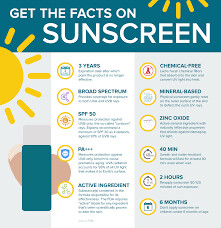
MORE FROM RUNNER'S WORLD ON APPLE NEWS
According to the Skin Cancer Foundation, slathering on sunscreen every day can prevent premature skin aging and slash your melanoma risk by 50 percent. (ICYMI, melanoma is the most dangerous form of skin cancer.) But sunscreen that’s passed its expiration date won’t do your skin any good.
As runners, we log more hours in the sun than most people, which puts us at greater risk for sunburn and skin cancer. We owe it to our skin (and overall health!) to give it the best sun protection possible.
Here, we explain why sunscreen expires and how to tell if yours has.
Why does sunscreen expire?
Sunscreen contains active ingredients that shield your skin from UV rays. In chemical sunscreens, you may find ingredients such as octisalate and/or avobenzone. According to the Skin Cancer Foundation, these ingredients absorb UV rays like a sponge before they can do any damage. In mineral sunscreens, common ingredients include titanium dioxide and zinc oxide, which physically block the rays before they enter your skin.
Over time, these active ingredients break down. When this happens, they become less effective at protecting your skin from harmful UV rays, leaving your skin vulnerable to sunburn and damage, says Cameron Rokhsar, M.D., the founder and director of the New York Cosmetic, Skin, and Laser Surgery Center and an associate clinical professor of dermatology at Mount Sinai Hospital in New York City.
Therefore, it’s essential to keep tabs on your sunscreen’s status. Using an expired product is not only pointless, but it can give you a false sense of security during sunny runs.
Are there signs to look for that show my sunscreen has expired?
“Unfortunately, there’s no reliable way to test if a sunscreen has expired,” says Shari Lipner, M.D., Ph.D., a dermatologist with Weill Cornell Medicine in New York City. However, some sunscreen manufacturers print an expiration date on the bottle or label.
For products that don’t have that expiration date (or if you threw the packaging away), know that all sunscreen manufacturers have to prove that their product will remain effective for at least three years, per the U.S. Food and Drug Administration (FDA). If that’s the case, write the purchase date on the bottle to track how long you’ve had it, Lipner suggests. Consider your sunscreen expired at the three-year mark.
Sunscreen can also expire earlier if exposed to heat, humidity, and sunlight. According to the Cleveland Clinic, chemical sunscreen is especially vulnerable because the active ingredients tend to be more unstable when exposed to heat than mineral sunscreen ingredients.
The takeaway? Don’t rely on expiration dates alone. “If you notice any changes in the consistency, color, or scent of the sunscreen, it could indicate that it’s expired or undergone some degradation, and it’s best not to use it,” Rokhsar says.
For example, many chemical and mineral sunscreens contain inactive ingredients that help the formula spread evenly. When these ingredients break down, you may notice that the sunscreen is gritty and/or tough to rub into your skin, according to the Cleveland Clinic.
You may also experience skin reactions like acne and rash when inactive ingredients degrade, Rokhsar says. Plus, many sunscreens contain preservatives. When these deteriorate, bacteria and fungi are more likely to grow inside the container, leading to skin infections and acne, the Cleveland Clinic notes.
So, if you start breaking out or developing rashes after using your sunscreen, it’s time to get a fresh bottle.
What’s the best way to store sunscreen?
“To extend the life of your sunscreen and ensure its effectiveness, store it in a cool, dry place,” Rokhsar says. In other words, don’t leave it in your car during hot summer runs or on top of your towel during beach days. Excessive heat breaks down the active ingredients that protect your skin from harmful UV rays, Rokhsar explains.
A better approach: Apply sunscreen before leaving home so you don’t have to keep it in your car during your run. “If you’re at the pool or beach, I suggest wrapping [the sunscreen] in a towel,” Lipner says. You can also stash it under some shade or keep it in the beverage cooler.
Also, keep the container tightly closed to prevent exposure to air, “which can also contribute to the breakdown of the active ingredients,” Rokhsar says.
So, can you use expired sunscreen?
Using sunscreen that’s gone bad won’t protect your skin from the harmful UV rays that cause skin damage and cancer. You’ll likely irritate your skin to boot. So, toss your sunblock if it’s passed its expiration date, it’s been three years since you purchased it, or you notice changes to the product or your skin.
You can prolong the shelf-life of your sunscreen by storing it in a cool, dry place. However, you don’t need to worry about expiration dates if you use sunscreen the way you should. “If you’re using sunscreen properly, which means applying a generous amount [or about a shot glass’ worth] and reapplying frequently, such as after swimming or sweating, a bottle shouldn’t last more than a season,” Rokhsar says.
(08/13/2023) ⚡AMP
by Runner’s World
100m world junior record holder suspended for doping
Suriname’s Issam Asinga, who only two weeks ago stunned the athletics world by shattering the U20 100m world record at the South American Championships in Sao Paulo, Brazil, has been provisionally suspended by the Athletics Integrity Unit (AIU) for the alleged use or presence of a prohibited substance . The suspension, which went into effect Wednesday and was announced by the AIU on Friday, is for the presence of GW1516, a substance that modifies how the body metabolizes fat, and which can boost endurance.
Provisional suspensions are issued before a hearing to determine whether the charges warrant any official punishment.

Botswana’s Nijel Amos, who won silver in the 800m at the 2012 Olympics in London, received a provisional suspension last year for the presence of the same metabolite ahead of the World Athletics Championships in Eugene, Ore. He ended up receiving a three-year ban.
GW1516 was originally developed to treat obesity and diabetes, but is not approved for human use, since it was discovered to be carcinogenic. It is banned in and out of competition, and not eligible for Therapeutic Use Exemption (TUE). A USADA bulletin from 2019 says GW1516 is also sometimes known as cardarine or endurobol and has been found in some supplements, even though it is illegal. In 2017, there were 31 sanctions worldwide related to its use.

The 18-year-old Asinga clocked an impressive 9.89 seconds with a tailwind of (-0.8m/s) on July 28 to become the first South American sprinter to break the 10-second barrier in the 100m. His blazing run surpassed the previous record of 9.91 seconds set by Botswana’s Letsile Tebogo at last year’s World U20 Championships in Cali, Colombia, and also broke the South American area record, bettering the 10.00 mark set by Brazil’s Robson da Silva in 1988.
In addition to claiming a world record in Brazil, Asinga’ also picked up a free PlayStation 5 with his performance. A tweet posted last week shows retired American sprinter Justin Gatlin handing Asinga the video game console with the caption “The special moment when Justin Gatlin promised Issam Asinga a PS5 if he ran a legal 9.8 and he delivered!”
Asinga has made headlines in the 2023 season, running for Montverde Academy near Orlando, Fla. Earlier this year, he beat world champion Noah Lyles in a 100m race to break the U.S. high school record, and a week later, broke Lyles’s 200m high school record in 19.97 seconds.
The provisional suspension appears to have dashed Asinga’s dreams for gold at the World Athletics Championships in Budapest later this month, where he was set to run the double. The sprinter has plans to head to Texas A&M University in the NCAA on a full track and field scholarship this fall.
(08/12/2023) ⚡AMPby Running Magazine
Dynamic vs. static stretching: Which is better?
Both have benefits depending on when and why you’re stretching.
Stretching is an essential component of any runner’s routine, aiding in flexibility, performance, and injury prevention. When it comes to stretching, there are two main techniques: dynamic stretching and static stretching, each offering distinct advantages for runners.
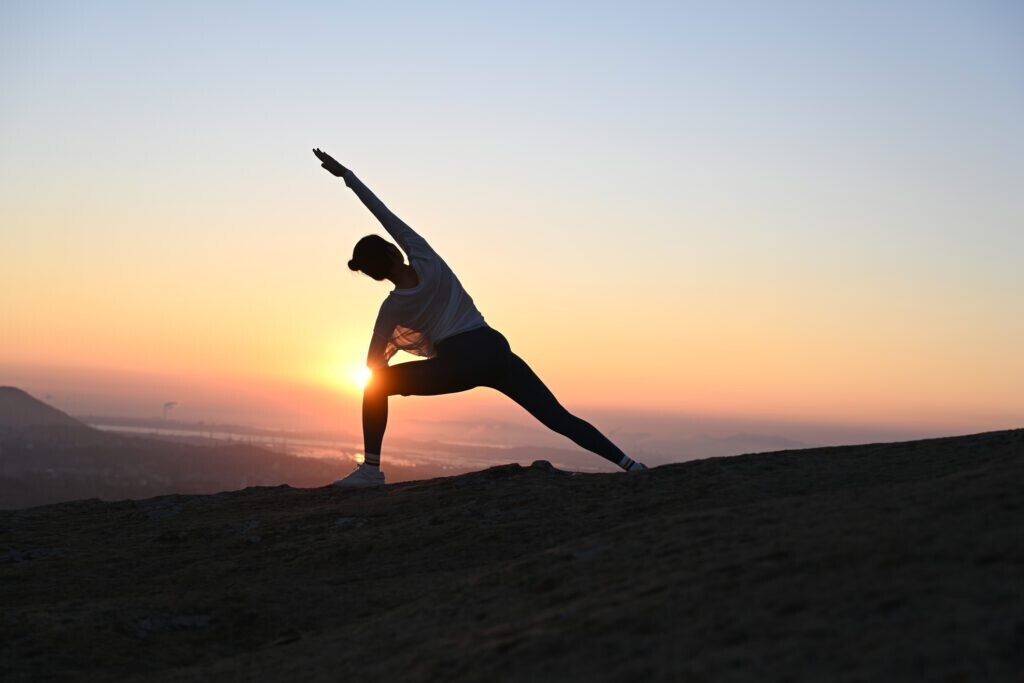
Dynamic stretching
Dynamic stretching involves controlled movements that mimic the actions of the activity about to be performed. This type of stretching is particularly advantageous for runners as it helps warm up the muscles and joints, increasing blood flow and heart rate.
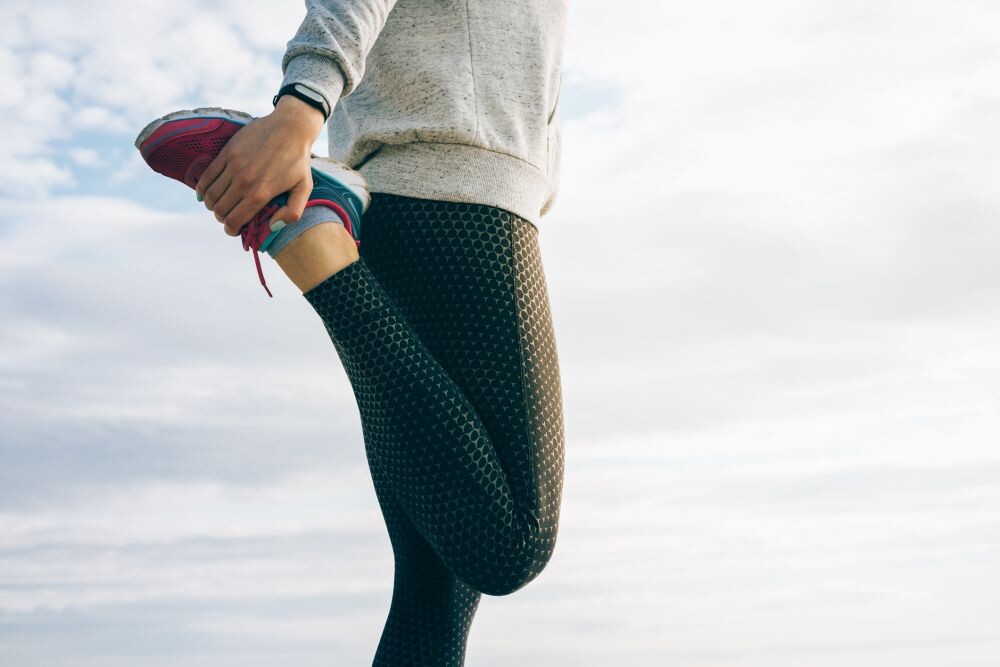
The continuous, rhythmic motions of dynamic stretches prepare the body for the impending workout by improving range of motion and promoting better neuromuscular coordination. Leg swings, high knees, and walking lunges are examples of dynamic stretches. They activate the nervous system, enhancing muscle responsiveness and power output. Incorporating dynamic stretching into a pre-run routine can lead to improved performance and reduced risk of injury.
Static stretching
Static stretching entails holding a stretch for a prolonged period, usually 15-60 seconds. While static stretching can be beneficial post-workout for enhancing flexibility and aiding in recovery, its application before a run is debated. Some studies suggest that performing static stretches before a run might lead to decreased muscle power and performance due to temporarily relaxed muscles. However, static stretching post-run, when muscles are warm and pliable, can help prevent muscle imbalances and maintain overall flexibility.
Dynamic vs. static: a balance
The key is to find the right balance between dynamic and static stretching. Pre-run, focus more on dynamic stretches to elevate heart rate and activate muscles. Gradually transition into movements that mimic the running stride to enhance range of motion and promote blood flow to the muscles. As the body warms up, these dynamic stretches should become more running-specific, such as leg swings or high knee marches.
Post-run, static stretching can be incorporated to improve flexibility and maintain muscle health. Stretching muscles that have been worked during the run, such as hamstrings, quads, and calves, can aid in recovery and prevent tightness. Holding stretches for 15-60 seconds without bouncing can gradually improve muscle length over time, reducing the risk of injury and enhancing overall flexibility.
(08/12/2023) ⚡AMPby Brittany Hambleton
Wait … Is It Okay to Run in a Cemetery?
A strongly-worded sign in Eugene, Oregon, sparked debate: Fair game or a somber spot?
Just south of the University of Oregon, sits the Eugene Masonic Cemetery—a ten-acre hilly plot that’s filled with Douglas Fir Trees and wood-chip trails. In a city renowned for its rich running history, it’s relatively common to see runners using the paths as a neighborhood cut-through or spot to work in some hills.
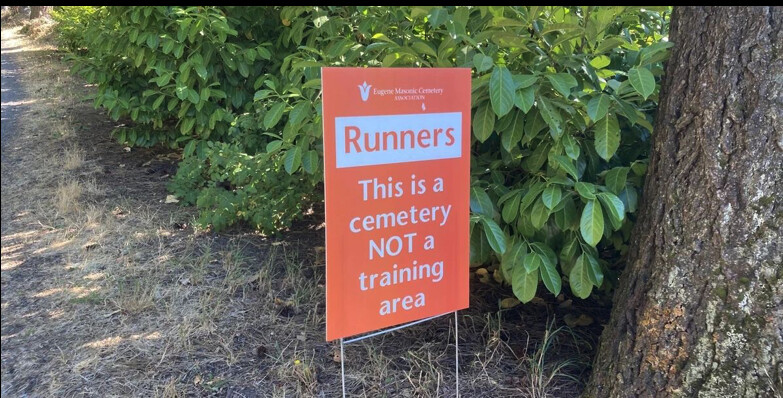
But last month, some residents started to notice red signs: “Runners, this is a cemetery NOT a training area.” The signs prodded discussion on Twitter, with some users scorning them while others emphasized the need to respect the dead. Some pointed out that seven blocks north is the Eugene Pioneer Cemetery, a slightly bigger area, which is a common warm-up spot for athletes competing at nearby Hayward Field.
Cemeteries can be a confusing middle ground between a green space and a solemn place of remembrance, and it brings up an ethical question: When is it okay to run in a cemetery?
Striking a balance
The Eugene Masonic Cemetery is private property—it’s an active burial ground. But Shawn Walker, the president of the Board of the Eugene Masonic Cemetery Association, clarifies that outsiders are still welcome in the space.
“I think it can be helpful for visitors to keep in mind that the cemetery is first and foremost a cemetery,” he said to Runner’s World in an email. “Visitors come to the cemetery to grieve, remember those who have passed on, and seek solace. Other ‘non-cemetery’ related activities are fine and encouraged as long as the activities do not disrupt the cemetery’s primary role.”
Not all cemeteries are privately owned; different types have emerged over the years. Take the Oakland Cemetery in downtown Atlanta. Oakland is the oldest cemetery in the city, founded in 1850, but it’s also the oldest public park.
The City of Atlanta owns the 48-acre space, but it operates differently from a church graveyard or military cemetery (don’t try to run in Arlington National Cemetery). Oakland is a “Victorian rural garden cemetery,” says Sandy White, the Director of Adult Programs and Volunteers at the Historic Oakland Foundation. Early cemeteries were connected with churches, but as cities grew, governments realized they needed more space to bury the dead, says White. But instead of a somber, religious space, these area were also used as parks.
In fact, during the Victorian period (1837 to 1901), it was common for families to visit cemeteries for leisure. During a time when diseases like yellow fever and cholera were rampant, families would pack a lunch and visit their dead relatives. Nowadays, you’re less likely to see a charcuterie board in front of a gravestone, but some cemeteries still retain those park-like qualities.
Fifteen years ago, the Historic Oakland Foundation created the Run Like Hell 5K. “At the time, [the foundation] was really searching for things that would be good fundraisers and respectful of the grounds and of the people that are buried in Oakland, but at the same time, really serve the modern communities that were built up around,” White says.
The race—which features a costume contest—has become the largest cemetery race in the U.S. with 219 runners toeing the line at this year’s April edition. The money raised from the race helps keep the cemetery humming through beautification and preservation projects, and it’s a key part of Oakland’s identity as a public green space.
“It’s every citizen in Atlanta’s park as much as it’s our cemetery,” White says.
Appreciation is key
Ultimately, running in a cemetery comes down to respect.
Walker says the red signs at the Masonic Cemetery were put up after some runners started taking advantage of the open gates. He says training groups would come to the cemetery and disrupt the peace with drills like sprints and chain runs. Sometimes a coach would even shout and whistle at the athletes.
“We felt that this type of activity and training was not consistent with the environment that we believe is important to maintain in the cemetery,” Walker says.
He admits the red signs might come off as harsh, but it’s tough to convey the message clearly.
“We love having visitors in the cemetery and part of our mission is to maintain and operate the cemetery as a resource for the community,” he says. “I believe it can be perfectly appropriate for runners to run in the cemetery as long as their activities are respectful to other visitors and to the space.”
Rob Rueff is familiar with this balance. His favorite race is a small 5K in Franklin, Indiana, called the Sparkler Sprint. Held on the 4th of July, the race is a fundraiser for the Franklin Community High School cross country team. The course meanders through a local park and the nearby Greenlawn Cemetery, and it reminds Rueff of trips to visit his grandparents as a child. In fact—the race literally goes past their graves.
“It’s like I can feel them cheering me on as I reach the final quarter mile of the race,” he says.
For Rueff, the cemetery is a reflective place of solace—but something he can combine with his passion for running. “When I’m training for races and I’ve hit a wall during training, I’ll drive down and run there,” he says. “I’ll make it a point to run by their graves just to check on things. It helps me clear my head and refocus on my training.”
Sarah Lorge Butler contributed to this report.
(08/12/2023) ⚡AMPby Runner’s World
The Big Money Behind This Year’s World Athletics Championships
From prize money to ticket prices to betting lines—there’s a lot of cash at stake.
The World Athletics Championships Budapest 2023 are set to kick off on August 19, with more than 2,000 athletes from 200 countries vying for the top spots and the prize money that comes with them. Those cash prizes aren’t the only money at stake throughout the competition, though, as ticket prices and betting lines for the nine-day event will also command a lot of attention.
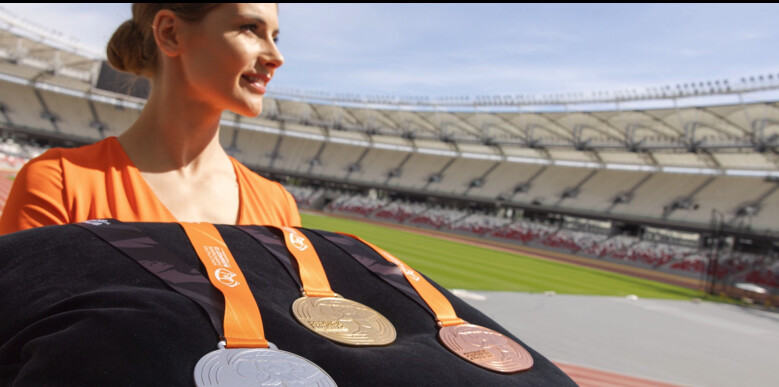
Tickets can be purchased from the meet’s official website, and they are available for 14 sessions, including five morning sessions and nine evening sessions. Six events will take place outside the stadium in Budapest’s city center, including race walking and marathon events, which are free of charge.
Prices for the morning session tickets for Categories One to Four are 3,000 HUF (about $8.50), while premium and premium finish line tickets for the morning sessions are 6,900 HUF ($20). For the evening tickets, the prices will differ between days and categories. Ticket packages are also available; the most expensive will run you 1,958,000 HUF (or just under $5,600) for all nine days. The stadium seats 36,000 spectators.
A lot of money is sure to be made off betting, which continues to gain steam in the U.S., with many now-legal sportsbooks having set odds for the 200-meter race. Unibet Sportsbook has given Noah Lyles the most favored odds at -286, making him their clear favorite to win. Bettors hoping for a longshot should place their bets on Italian Filippo Tortu, who has the longest odds at +25000.
As for the athletes themselves, they’ll be hoping to win a part of the $8,498,000 total prize money being offered this year, in addition to a special prize of $100,000 to be awarded to an athlete should they also set a world record at the event. For individual events, the prize money starts at $5,000 for eighth place and up to $70,000 for the gold. Meanwhile, relay teams will earn between $4,000 and $80,000 per team.
(08/12/2023) ⚡AMPIs Overhydration More Dangerous than Dehydration?
Here's why you need to monitor your water intake
Being human is all about balance. We strive to find an ever-elusive equilibrium between work and life. We go to yoga classes in hopes of improving our physical steadiness. We eat an assortment of fruits and vegetables, but we also munch on chips and dip. And, from a physiological standpoint, our blood cells need balance, too.
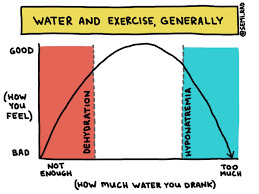
As athletes—especially ones who spend time outdoors during a heat wave—the ethos we usually hear is “hydrate, hydrate, hydrate.” However, a 2020 research article from Stanford University School of Medicine offers a different perspective. In the piece, the study’s lead author notes that overhydrating is actually more dangerous than being dehydrated.
One of the most important things to maintain balance in our blood cells is the sodium-to-water ratio, says Tamara Hew-Butler, associate professor of exercise and sport science at Wayne State University School of Medicine. When you’re dehydrated, you contain less water, causing your blood cells to shrink. However, when you drink some H2O, your cells recover quickly.
When you consume a lot of water (more than three liters in an hour), your sodium levels dip to abnormally low levels, taking you into dangerous territory. If the water count in your body is much higher than your sodium levels, you can develop hyponatremia—a dangerous result of overhydration. “If you drink too much water, all of your cells start to swell,” Hew-Butler says. “That becomes a problem in your brain, because your brain can only swell five to eight percent [beyond its normal size] before it runs out of space in the skull.”
It’s not something to be taken lightly. In some cases, hyponatremia can lead to death, Hew-Butler says. “The amount of water that leads to hyponatremia is different for everyone,” she adds. “It depends on the size of the person, the ambient temperature, and exercise intensity and duration.” However, if you need to quantify it, typically drinking about three liters of water within an hour can cause severe hyponatremia, potentially prompting a seizure, coma, or even death, Hew-Butler says.
Overhydration is a particularly large concern during the summer months. “The first thing that everybody tells you—and it’s not always wrong—is to drink lots of water,” Hew-Butler says. “But, when it’s hot out, more people die from overhydration than they do from dehydration.”
That’s because your blood cells actually retain water as a result of the heat, so you’re not quite as dehydrated as you may think.
This isn’t necessarily new information, Hew-Butler says. “The results of a 1999 study in the American Journal of Emergency Medicine support that hyponatremia is [generally] more common than heatstroke.” She adds that it’s the most common cause of serious illness in the Grand Canyon—more than heat exhaustion, grand mal seizures, nausea, and dizziness.
What should you do to achieve that balance of hydration? Drink to thirst, recommends Allen Lim, a sports physiologist and the founder of sports nutrition brand Skratch Labs. (So yes, that means skipping out on your emotional support water bottle.) However, even when you’re feeling parched, make sure to monitor your H2O intake.
“During exercise, the thirst mechanism will prioritize [sodium] balance over water balance,” Lim says. “As we lose sodium in our sweat, we will naturally drink less water to maintain sodium balance. Since there’s not as much sodium in the body, we don’t drink everything we lose, so we can keep the ratio of water to sodium the same.” Essentially, your body makes you thirsty when that sodium-to-water ratio is skewing high on sodium. And that’s when you should drink water.
You know that old saying, “Listen to your body?” That’s sage advice when it comes to hydration, especially when it’s hot out. “Drinking to thirst is important even though it can result in dehydration,” says Lim. “That dehydration is important to keep the sodium balance correct.”
(08/12/2023) ⚡AMPby Outside Online
7-year-old runs to beat clock in mom's cancer battle
A seven-year-old British girl has completed a multi-day marathon challenge in a desperate bid to pay for a brain biopsy that could help save her mother’s life.
The U.S. Sun reports that Lolita Oakes of North London and her friend Juliet Deilinger, also seven years old, recently ran the 42.2-km marathon distance to help fund Oakes’s mother’s fight against brain cancer.

In 2018, at age 36, Cordelia Taylor was diagnosed with glioblastoma, a form of brain cancer that has an average survival time of 12 to 18 months. Only five per cent of patients live more than five years.
Following aggressive treatment—including surgery that involved removing a quarter of Taylor’s brain without any resulting neurological impairment—Taylor was declared cancer-free this past April. The results of a scan just two months later, however, showed that the cancer had returned and was inoperable.
She told the Sun she is hoping to self-fund a private biopsy and potential targeted treatment of the malignant tumour. The need for timely funding is what inspired daughter Lolita to take up the weeklong marathon challenge.
The run not only succeeded in raising awareness of, and financial support for, her mother’s treatment—nearly three-quarters of the campaign’s $170,000 goal has been raised—but also encouraged others to join in. Lolita and Juliet were joined during the multi-day challenge—which involved running at least 5 km before school every day (and additional kilometres after school) for seven days—by an ever-growing group of friends, schoolmates and teachers.
“It was quite hard, how much I had to run, and the not stopping,” Lolita told the Sun. “The hardest part was when I fell over. It was tiring, but I’m proud of me and Juliet for running the marathon, and doing it for my mum"
Although seeing the challenge through wasn’t easy for Lolita, her mother said she had every confidence her daughter would finish what she started.
“Loli is joyful and spirited, full of happiness and confidence,” said Taylor. “She’s a very determined girl and unbelievably good at saying to herself, ‘I can do this.’”
(08/12/2023) ⚡AMPby Running Magazine
Study suggests moderately active people can have a positive influence on their friends
Encouraging the general population to increase their physical activity levels has long been a frustrating challenge for public health officials, but new research has unveiled a potential new way to reach sedentary individuals: through their physically active friends. According to a study published in the journal Plos One, when sedentary individuals interacted with moderately active friends, they became more active themselves.The study
Researchers at Keene University in New Jersey used previous research analyzing how social interactions with peers can influence individual physical activity levels to develop a mathematical model to simulate how social interactions can shape a community’s physical activity levels over time. Their model showed that their physical activity levels dropped when people stopped socializing. We saw this play out in real-time during the COVID-19 pandemic when most of us were cut off from our peer groups.Their model also showed that when sedentary people interacted regularly with their moderately-active friends, they became more active over time. In other words, those of us who exercise regularly could have a positive impact on our less-active friends, encouraging them to move a little more.

It’s important to note that this study focused specifically on moderately active people. That’s not to say that those of us who are training for marathons or ultras can’t also have a positive impact on our sedentary friends, but a sedentary person may view a marathon runner as having an unattainable level of discipline or enthusiasm for activity, which may not motivate them to get started.How to encourage your sedentary friends to get active
Whether you’re training for a marathon or fitting a few 5Ks in between your busy schedule each week, you can help your sedentary friends warm up to the idea of a more active lifestyle. Here are a few tips to encourage them to get moving:Plan active get-togethers
Meeting your friend for a coffee? Get those coffees to go and invite them on a stroll. Planning a beach day? Bring a beach ball, a frisbee, or some other game that’ll get everyone on their feet. Invite your friends on weekend hikes, suggest signing up for a recreational sports team, or plan to play some backyard games at your next barbecue. Anything that gets people out of their chairs is a win.Try something new together
Your less-active friends may be intimidated to try going for a jog with you, so invite them to try an activity that you’re both novice at instead. Sign up for yoga classes, try a dance class, or sign up for golf lessons. If you’re both new at it, you’re both starting off on a somewhat even playing field.Talk about your running, but not too much
Sharing your running achievements or training plans with your friends can be motivational, but be careful not to over-do it. Your friends don’t want to hear about the splits from your last workout, and talking about your recent chaffing mishap will likely turn them off of the sport. When you talk about running, talk about how it helps you so they can see the potential benefits. “I was had a stressful day at work yesterday, but I went for a run and felt much better,” or “I tried a new route the other day and discovered a really cute neighbourhood that I’d never seen before!” are great ways to lean into the mental or emotional benefits of running.
(08/12/2023) ⚡AMPby Running Magazine
Another big blow! The Athletics Integrity Unit suspends Rodgers Kwemoi and Agnes Barsosio
The 2019 Hangzhou Marathon champion Agnes Barsosio and the 2022 N Kolay Istanbul Half Marathon Rodgers Kwemoi are the latest Kenyans to be summoned by the AIU.
The Athletics Integrity Unit has today, August 11 suspended other two Kenyans days after sanctioning Michael Kunyuga Njenga.
The 2019 Hangzhou Marathon champion Agnes Barsosio and the 2022 N Kolay Istanbul Half Marathon Rodgers Kwemoi are the latest Kenyans to be summoned by the AIU.
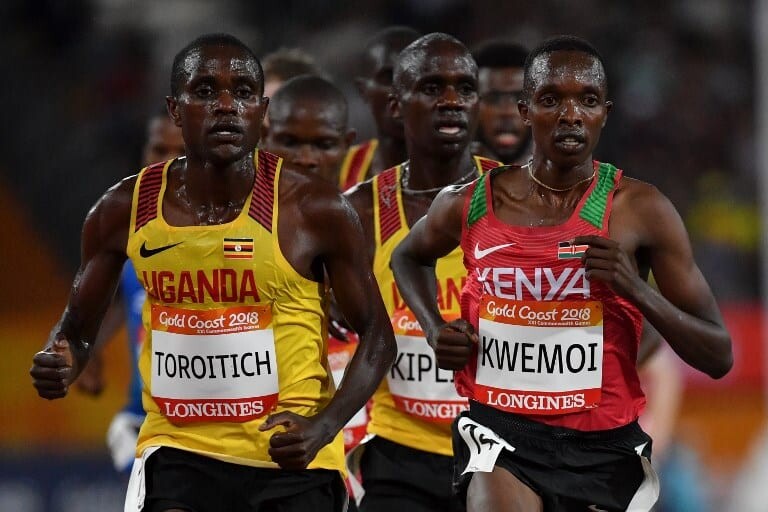
Barsosio has been suspended after testing positive for the use of a Prohibited Substance/Method – ABP. Barsosio has been inactive in athletics since her last race was during the 2021 Lisboa Marathon where she finished fourth.
In a tweet posted on their Twitter account, the AIU said: “The AIU has provisionally suspended Agness Jeruto Barsosio (Kenya) for the use of a Prohibited Substance/Method – ABP case.”
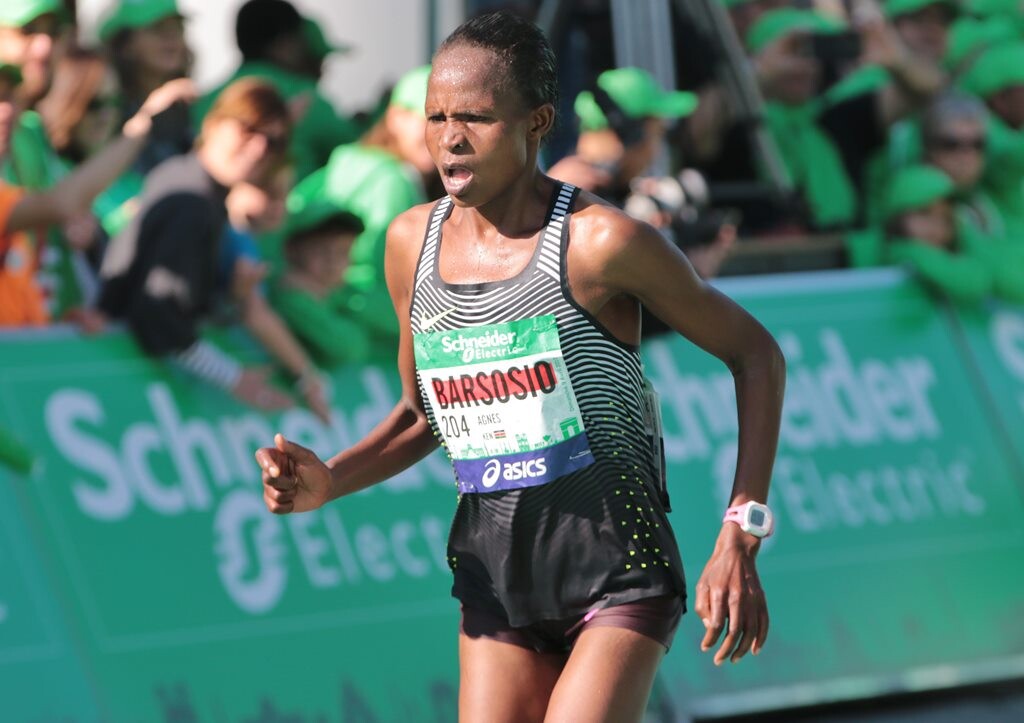
The same case applies to Kwemoi who has also been suspended for the use of ABP. Kwemoi has competed in a series of 10,000m races in Japan. He opened his season with a 10th place finish 31st at the Kanakuri Memorial Middle- and Long-Distance Invitational Meet.
He then proceeded to the 1st Nittaidai Challenge Games and 67th Central Japan Corporate Teams Athletics Championships where he finished ninth and third respectively.
The AIU has also suspended the latest kid on the block, Surinam’s Issam Asinga for the use of Prohibited Substance (GW1516). The 18-year-old has made headlines this year after breaking the Under-20 100m world record at the South American Championships.
The sanction means the trio is suspended temporarily from participating in any competition or activity in Athletics prior to a final decision at a hearing conducted under the World Athletics Anti-Doping Rules or the Integrity Code of Conduct.
(08/11/2023) ⚡AMPby Abigael Wafula
World record holder Brigid Kosgei excited ahead of New York Marathon debut
Brigid is set to showcase her prowess in the New York Marathon as she joins an elite lineup of champions for an exhilarating head-to-head competition.
World marathon record holder Brigid Kosgei is all set to grace the grand stage of the New York Marathon for the very first time on Sunday 5 November.
The anticipation is palpable as she readies herself to compete against an elite field of fellow Kenyan athletes, including defending champion Sharon Lokedi, Peres Jepchichir, and Hellen Obiri.
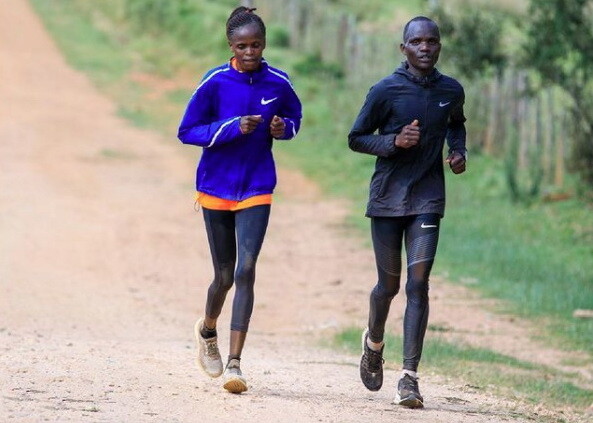
With an impressive track record in her arsenal, Kosgei is bubbling with excitement about the opportunity to add another Major title to her name.
The 29-year-old women's marathon world record holder is no stranger to pushing her limits.

"I am not worried about the course, as I have had success in hilly marathons before," she remarks.
Kosgei acknowledges the challenge posed by her fellow competitors and emphasizes the importance of being in peak form to vie for victory.
Last year's champion, Sharon Lokedi, made an impressive marathon debut by clocking a time of 2:23:23.
Meanwhile, Hellen Obiri clinched victory at the Boston Marathon earlier this year in only her second attempt at the distance.
Peres Jepchichir, the reigning Olympic and 2021 New York City champion, boasts an unparalleled track record. Yet, it's Kosgei who stands out on paper with her astounding personal best of 2:14:04.
The upcoming New York Marathon is set to create history as the reigning champions from the TCS New York City Marathon, Boston Marathon, and Olympics, along with the world-record holder, line up in a thrilling face-off.
The clash of titans promises an unforgettable race that will be etched in the annals of marathon history.
Hellen Obiri, a decorated athlete with two Olympic medals and seven individual world championships medals, stands as a testament to consistent excellence.
Her recent triumph at the Boston Marathon underscores her adaptability and prowess in tackling new challenges.
Jepchichir, on the other hand, boasts a unique feat of winning the Olympic marathon, TCS New York City Marathon, and Boston Marathon.
With two world championships gold medals in the half marathon, she is a force to be reckoned with.
In the midst of these formidable competitors, Brigid Kosgei radiates determination. "I am very excited to make my New York City debut this fall, and attempt to win my fourth different Major."
(08/11/2023) ⚡AMP
by Festus Chuma
TCS New York City Marathon
The first New York City Marathon, organized in 1970 by Fred Lebow and Vince Chiappetta, was held entirely in Central Park. Of 127 entrants, only 55 men finished; the sole female entrant dropped out due to illness. Winners were given inexpensive wristwatches and recycled baseball and bowling trophies. The entry fee was $1 and the total event budget...
more...Returning Kipngetich Ngeno Aiming For Glory In Budapest
National 800m champion Kipngetich Ngeno cannot wait to wear the Kenyan colors once again during the World Athletics Championships that starts on August 19 in Budapest, Hungary.
Ngeno is making a return to Team Kenya for the first time since competing at the 2019 World Championships in Doha, Qatar.
Ngeno clinched victory at the national championships before finishing second at the national trials two weeks later to seal his spot in the Kenyan team.
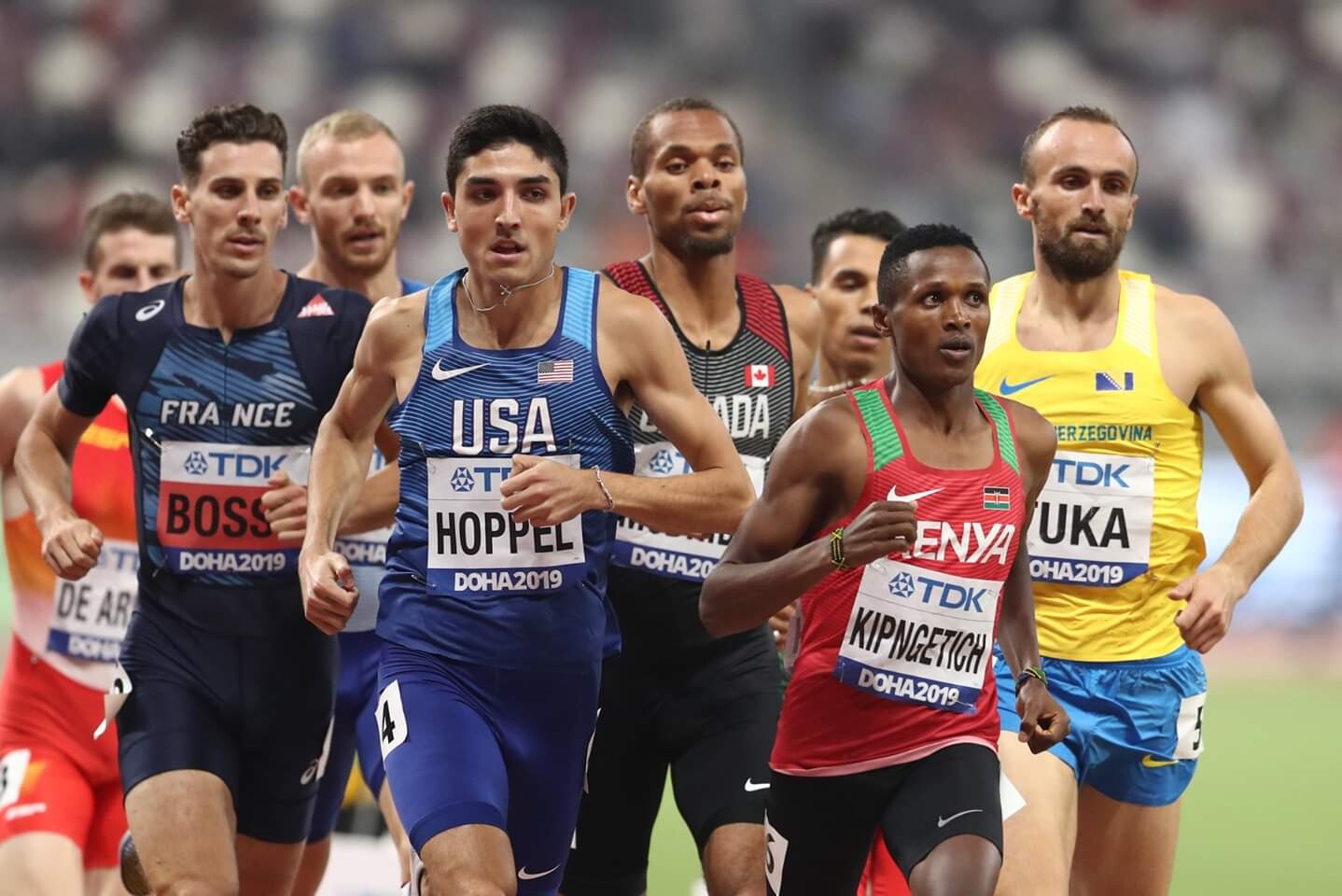
“I have been out for quite some time. I missed the Tokyo Olympics and last year’s Worlds in Oregon. I am of course happy to be back in the national team. It has not been easy in recent years,” Ngeno told Citizen Digital.
“I secured employment with the Prisons Service after which I had to work so hard to reduce weight and come back to my fitness levels. I am happy I am now fully fit.”
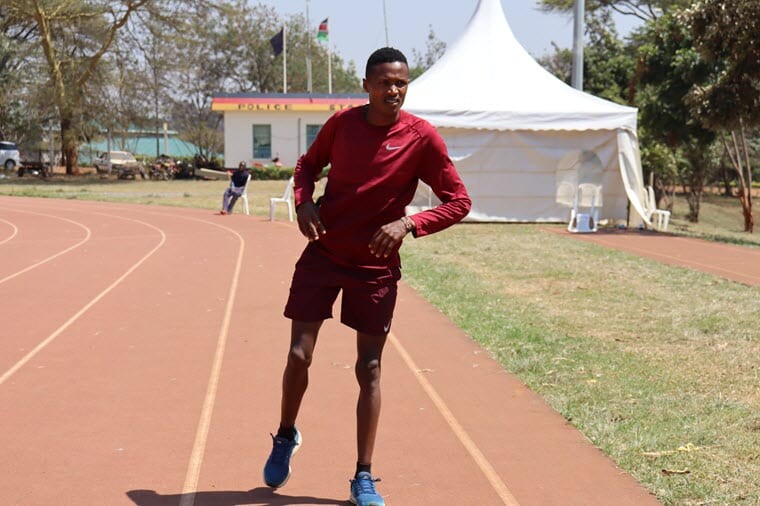
Despite failing to advance past the semis stage in Doha, Ngeno says he drew valuable lessons ahead of this year’s event.
“It was my first World Championship with the senior team. I learned a lot especially on how to control the race in the heats and semis. I am now experienced enough to handle pressure in such an event,” he said.
The 2018 world junior silver medalist believes Kenyans can sweep the podium in the two-lap race where he will team up with defending champion Emmanuel Korir, Olympic silver medalist Ferguson Rotich and the fast-rising Emmanuel Wanyonyi.
“I think it is a very strong team. We need to just manage ourselves in the heats and semis and if we all make it to the finals it will be very difficult to beat us,” said Ngeno who trains at the Kericho Athletics Camp.
(08/11/2023) ⚡AMPby Gilbert Kiprotich
World Athletics Championships Budapest 23
From August 19-27, 2023, Budapest will host the world's third largest sporting event, the World Athletics Championships. It is the largest sporting event in the history of Hungary, attended by athletes from more than 200 countries, whose news will reach more than one billion people. Athletics is the foundation of all sports. It represents strength, speed, dexterity and endurance, the...
more...




